A Typhoon, Following Haiku Poets & Firefighting Acrobatics ó Japan Trip Report
#1
Original Poster
Join Date: Feb 2016
Posts: 113
Likes: 0
Received 0 Likes
on
0 Posts
A Typhoon, Following Haiku Poets & Firefighting Acrobatics ó Japan Trip Report
Hello! I wanted to write this super quick trip report because progol is travelling to Japan next month and visiting some of these places, and someone else also asked for a report on Yamanaka (forgot who that was, sorry). Don't worry, my Berlin and NZ reports haven't been abandoned, I just wanted this one out before progol's visit!I was only in Japan for 7 days (including arrival and departure days). This report will include Mt.Takao and Mt.Mitake, a little bit of Tokyo, Eiheiji Temple, Maruoka, some Fukui city, Yamanaka and a festival in Kanazawa.
The basics:

Iíve travelled to Japan in every season, and while I canít deny the beauty of autumn leaves covering picturesque valleys, nor the quiet of temples in the falling snow, nor the impressive explosion of cherry blossoms around famous castlesÖ the truth is, June is my favourite time to visit the country. The greenery, the misty scenery, the ideal temperatures, hydrangeas, fireflies, longer sunlight hoursÖ It really is Japan at its best. Iím sure it also helps that my first trip to Japan was in summer, so whenever I travel during that season I feel like itís my first trip all over again.
Anyway. It seems like summer is not high on peopleís list of preferable seasons, yet for many summer holidays is the only time when a visit is possible. I'm hoping this post will let you see how wonderful the country, especially the countryside, looks at this time of year!

In a spaceship!
I was stopping in Japan on my way back to Spain from New Zealand. I had to buy two separate tickets and didn't want to put them on the same date in case one of the flights was late or something, especially since they were both cheap airlines, so I stuck a few days in between and had this little slice of a trip. Since there are only 4h difference between NZ time and Japan time, I arrived tired from the long trip but without any jetlag, which is always appreciated for short trips.
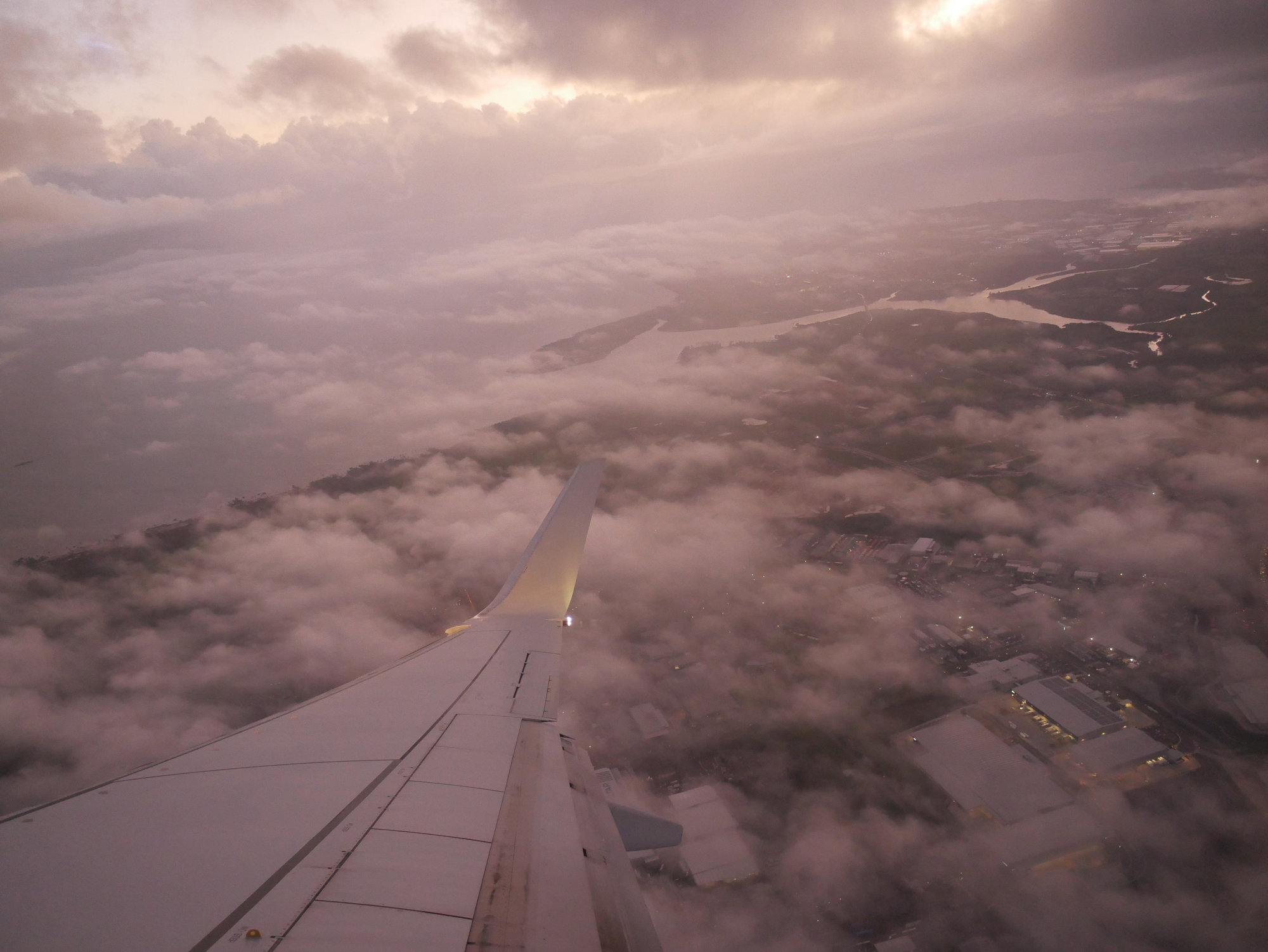
Goodbye New Zealand...
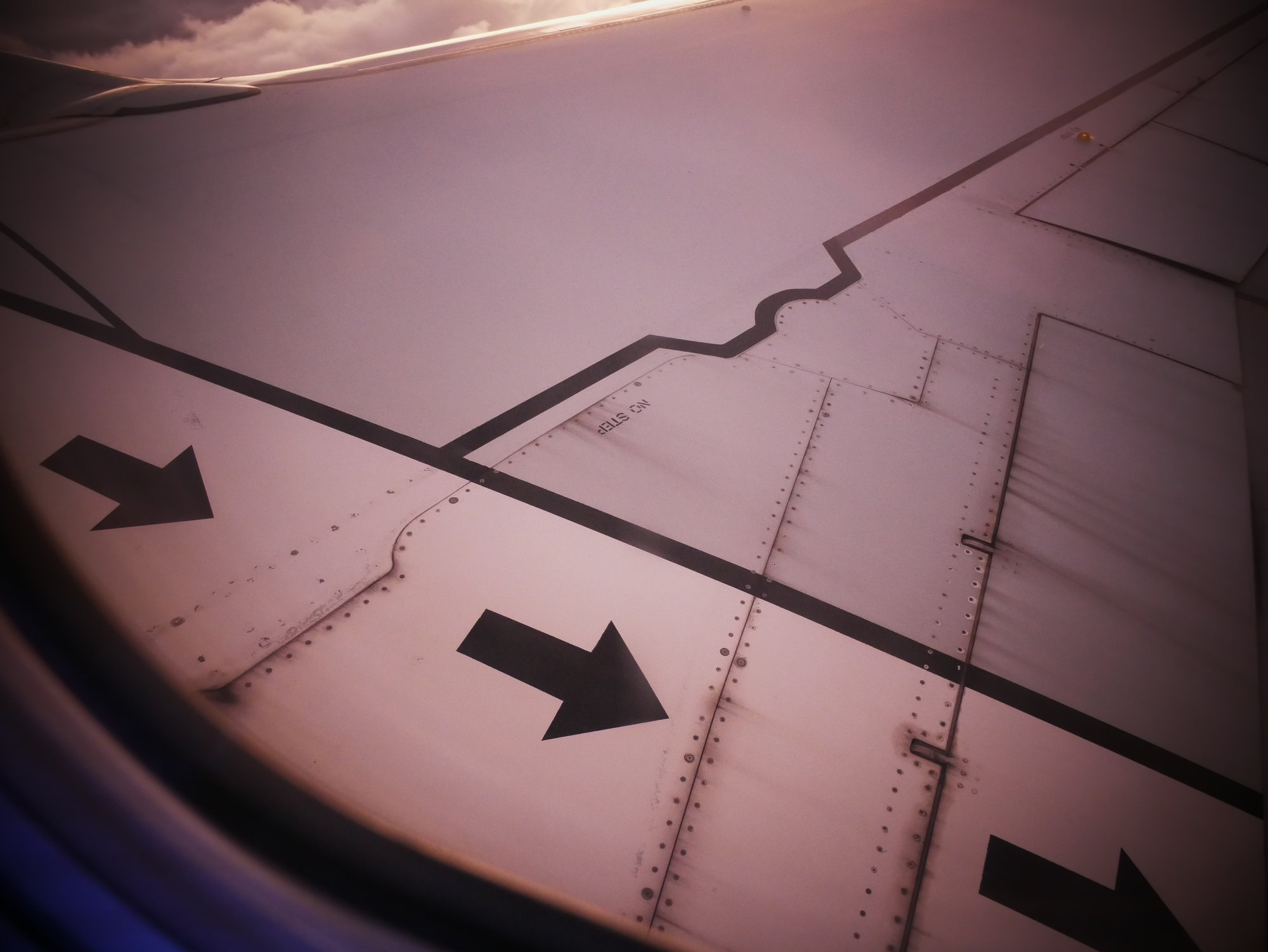
Hostels in Japan are high quality compared to the rest of the world, often very clean and well-organised, but I've learned not to go for the cheapest hostels in Tokyo / Kyoto / Osaka after a few less hygienic experiences. I'm not a loyal customer to any hostels in the big cities, I change options every time I'm there, and this time in Tokyo I stayed in hostel Cocts Akihabara.
Cocts is in Asakusabashi despite the name, but it's within walking distance of Akihabara (manga / gaming area) and Ryogoku (sumo / some major museums), and a single stop on the metro from Asakusa. Asakusabashi is a nice quiet residential neighbourhood and always one of my preferred places in a usually hectic metropolis.
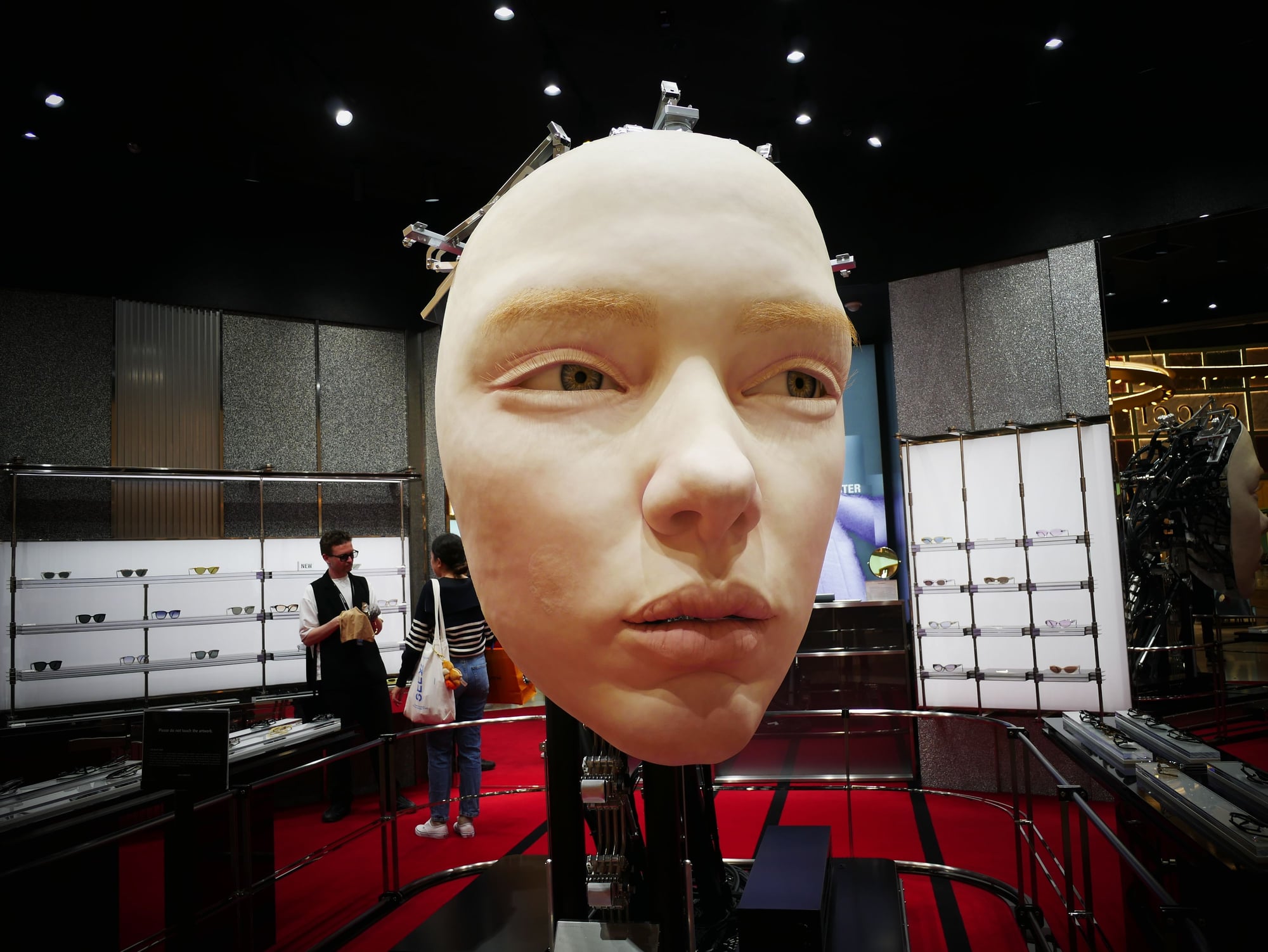
Robot face at the airport. It blinks!
Cocts was capsule style and only four people in one room, with spacious bathrooms and a trendy dining area downstairs. Highly recommended for those looking for cheap accommodation.
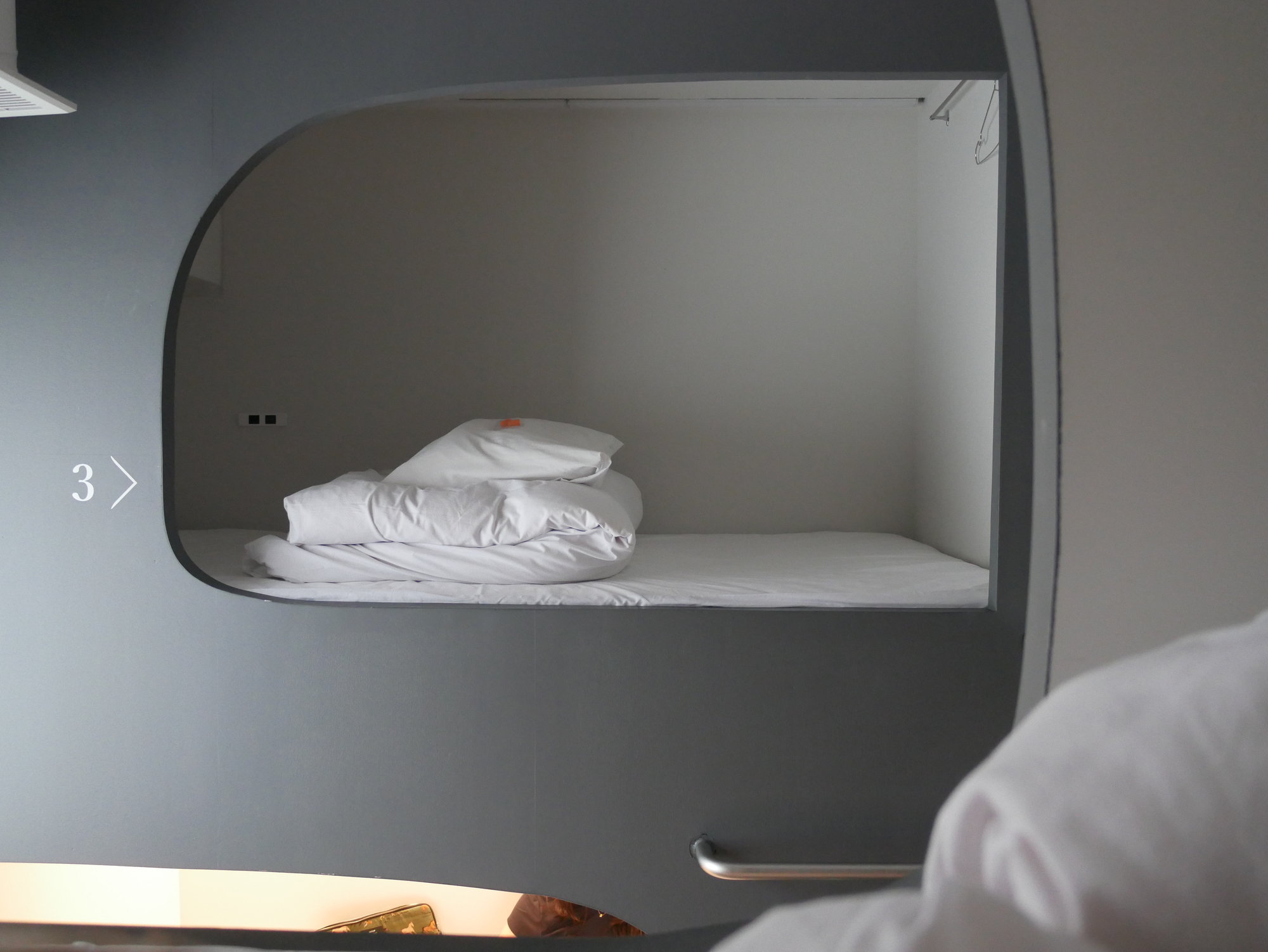
This is all for my introduction post. I visited Mt.Takao on the day I arrived, but I'll write about that at the end since the photos aren't very good (I mustn't scare away the new readers who are here for the photos... )
)

Iidabashi station. I take the Chuo-Sobu Line as much as I can because yellow is my favourite colour. In Tokyo, different train lines have different colours (green for Yamanote line, blue for Keishin-Tohoku, etc.) so you can use that to find your way around the busier stations.
The basics:
- 27 y/o female going solo (I know, ignore the username)
- I like history, legends, culture, architecture, the traditional side of Japan
- This was my 7th trip to the country, so I've seen lots of the main stuff on previous visits
- Only using public transportation
- Dates: first week of June, 2023

Iíve travelled to Japan in every season, and while I canít deny the beauty of autumn leaves covering picturesque valleys, nor the quiet of temples in the falling snow, nor the impressive explosion of cherry blossoms around famous castlesÖ the truth is, June is my favourite time to visit the country. The greenery, the misty scenery, the ideal temperatures, hydrangeas, fireflies, longer sunlight hoursÖ It really is Japan at its best. Iím sure it also helps that my first trip to Japan was in summer, so whenever I travel during that season I feel like itís my first trip all over again.
Anyway. It seems like summer is not high on peopleís list of preferable seasons, yet for many summer holidays is the only time when a visit is possible. I'm hoping this post will let you see how wonderful the country, especially the countryside, looks at this time of year!

In a spaceship!
I was stopping in Japan on my way back to Spain from New Zealand. I had to buy two separate tickets and didn't want to put them on the same date in case one of the flights was late or something, especially since they were both cheap airlines, so I stuck a few days in between and had this little slice of a trip. Since there are only 4h difference between NZ time and Japan time, I arrived tired from the long trip but without any jetlag, which is always appreciated for short trips.

Goodbye New Zealand...

Hostels in Japan are high quality compared to the rest of the world, often very clean and well-organised, but I've learned not to go for the cheapest hostels in Tokyo / Kyoto / Osaka after a few less hygienic experiences. I'm not a loyal customer to any hostels in the big cities, I change options every time I'm there, and this time in Tokyo I stayed in hostel Cocts Akihabara.
Cocts is in Asakusabashi despite the name, but it's within walking distance of Akihabara (manga / gaming area) and Ryogoku (sumo / some major museums), and a single stop on the metro from Asakusa. Asakusabashi is a nice quiet residential neighbourhood and always one of my preferred places in a usually hectic metropolis.

Robot face at the airport. It blinks!
Cocts was capsule style and only four people in one room, with spacious bathrooms and a trendy dining area downstairs. Highly recommended for those looking for cheap accommodation.

This is all for my introduction post. I visited Mt.Takao on the day I arrived, but I'll write about that at the end since the photos aren't very good (I mustn't scare away the new readers who are here for the photos...
 )
)
Iidabashi station. I take the Chuo-Sobu Line as much as I can because yellow is my favourite colour. In Tokyo, different train lines have different colours (green for Yamanote line, blue for Keishin-Tohoku, etc.) so you can use that to find your way around the busier stations.
#2
Thank you, Peter_T (though now I’m struggling to visualize a woman instead of a man!😆 . This is a great start to a trip report and I so appreciate you getting it posted before my trip!
. This is a great start to a trip report and I so appreciate you getting it posted before my trip!
And that robotic face - wow! Which airport?
 . This is a great start to a trip report and I so appreciate you getting it posted before my trip!
. This is a great start to a trip report and I so appreciate you getting it posted before my trip!And that robotic face - wow! Which airport?
#3
Original Poster
Join Date: Feb 2016
Posts: 113
Likes: 0
Received 0 Likes
on
0 Posts
Route day 1: Zōshigaya cemetery > walk around Takada > Jiyugaoka (lunch) + JŰshinji temple > Todoroki valley > Hostel pick up bag > Odaiba dinner > Night bus

My first full day, I woke up at Cocts, checked out and left my bag downstairs, and headed straight to Zōshigaya after buying some breakfast from the convenience store. Zōshigaya is an area in the centre of Tokyo I'd been wanting to visit for a long time, for two reasons.
The first was Zōshigaya Cemetery. It has the graves of many important literary figures. The main grave I wanted to see was that of Lafcadio Hearn. I read his book Kwaidan in my teens and that awakened my interest in Japan (before that I enjoyed manga but had little interest in the country). Even today, folklore, myths and legends remain a major interest due to that book. I've read some of Hearn's travelogues and visited his former residences in Matsue and Kumamoto, but I had to pay respects to his grave at least once.
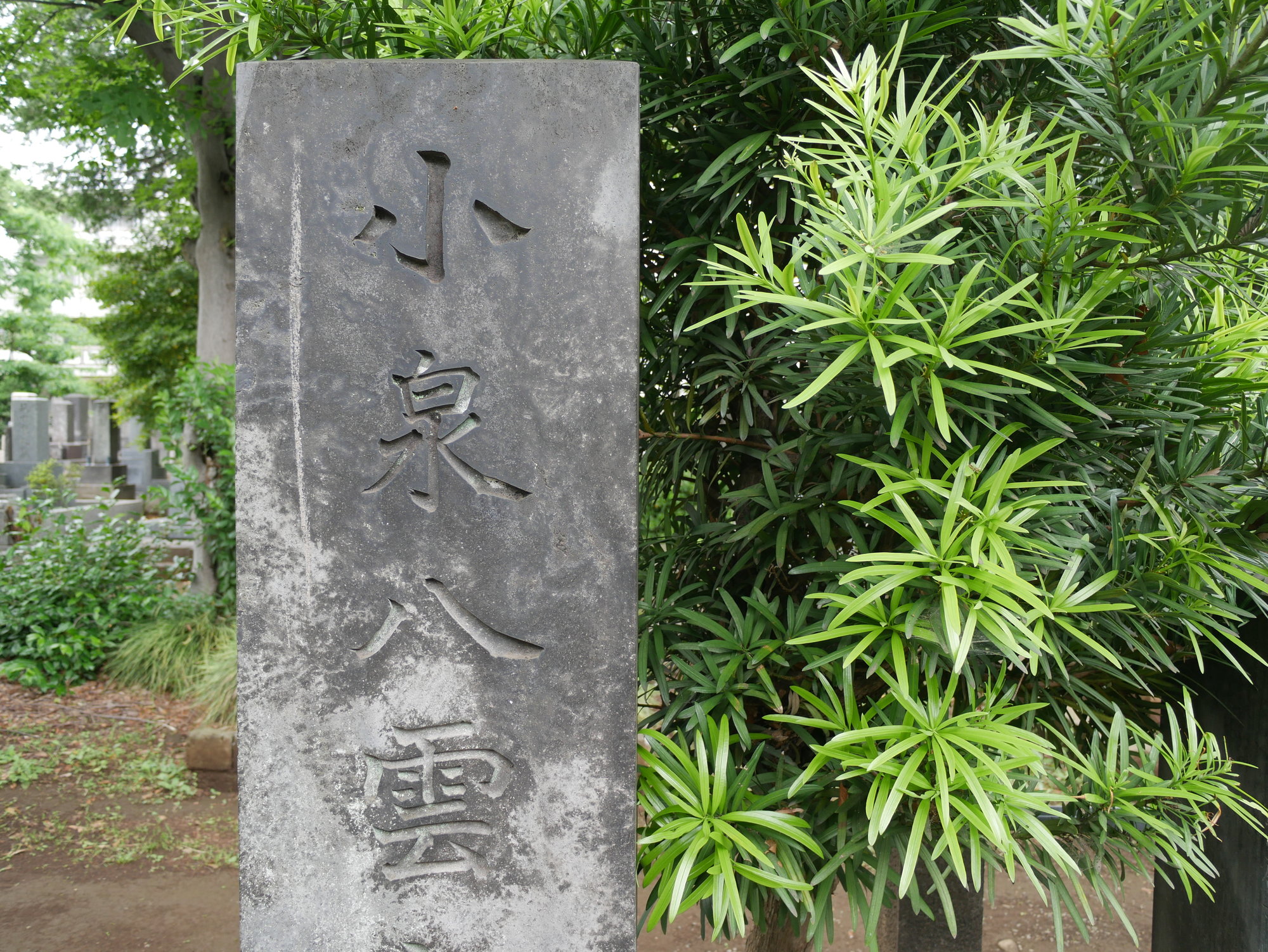
Lafcadio Hearn changed his name to Koizumi Yakumo, his Japanese name is more known in the country.
I also wanted to stop by Izumi Kyoka's grave, since I liked his book The Holy Man of Mount Kōya, and I found Natsume Soseki as well. I haven't read anything by Soseki, but I assume I will at some point!
The layout of the cemetery is well organised, but a little complicated if you're unfamiliar with the system. Essentially there are numbered zones (2-1, 1-1, 1-2, etc.), each with numbered rows. The little white pillars sit at the start of each row and tell you where you are. There is a map at the north entrance which tells you where the famous people lay.
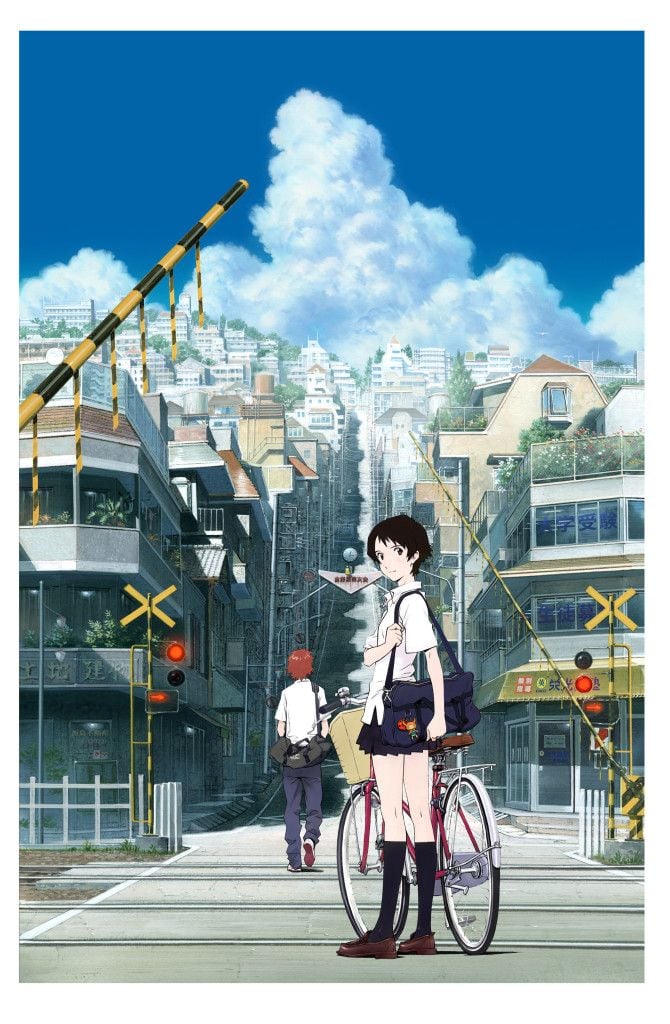
My second reason for being here was a movie called The Girl Who Leapt Through Time. Mamoru Hosoda's movies are a bit hit or miss for me (Summer Wars was good, Wolf Children boring, I never bothered watching anything else), but this one was one of my favourite anime movies. I used to have short hair as a teenager so I really liked the main character. She (Makoto) lives in this neighbourhood, so it comes out a lot in background scenes.
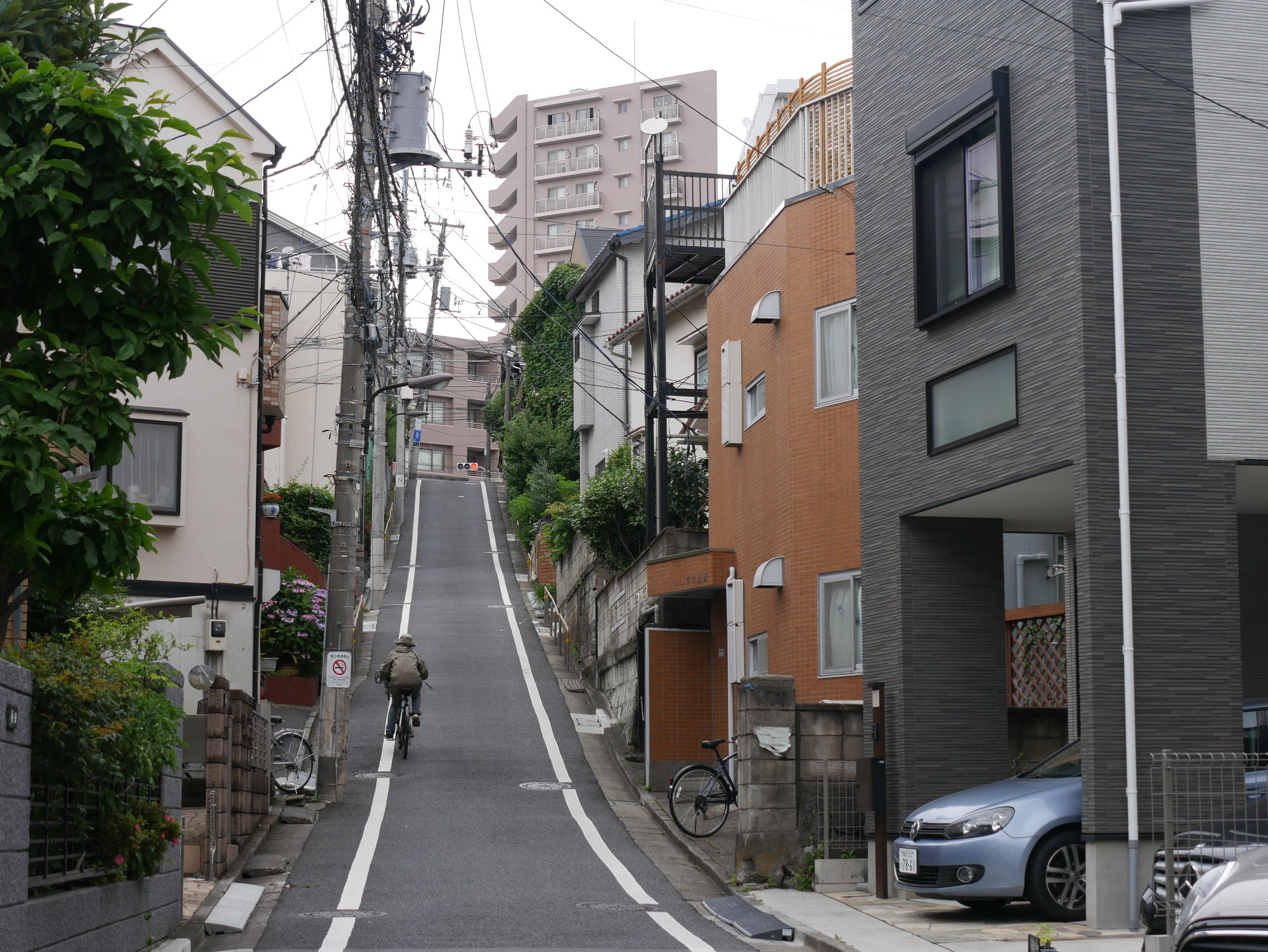
Makoto goes down this hill every day on her way to school. It's not the big zoomy hill though, that one was an artistic license. I almost got run over by a bike while walking down the hill... like in the movie?!
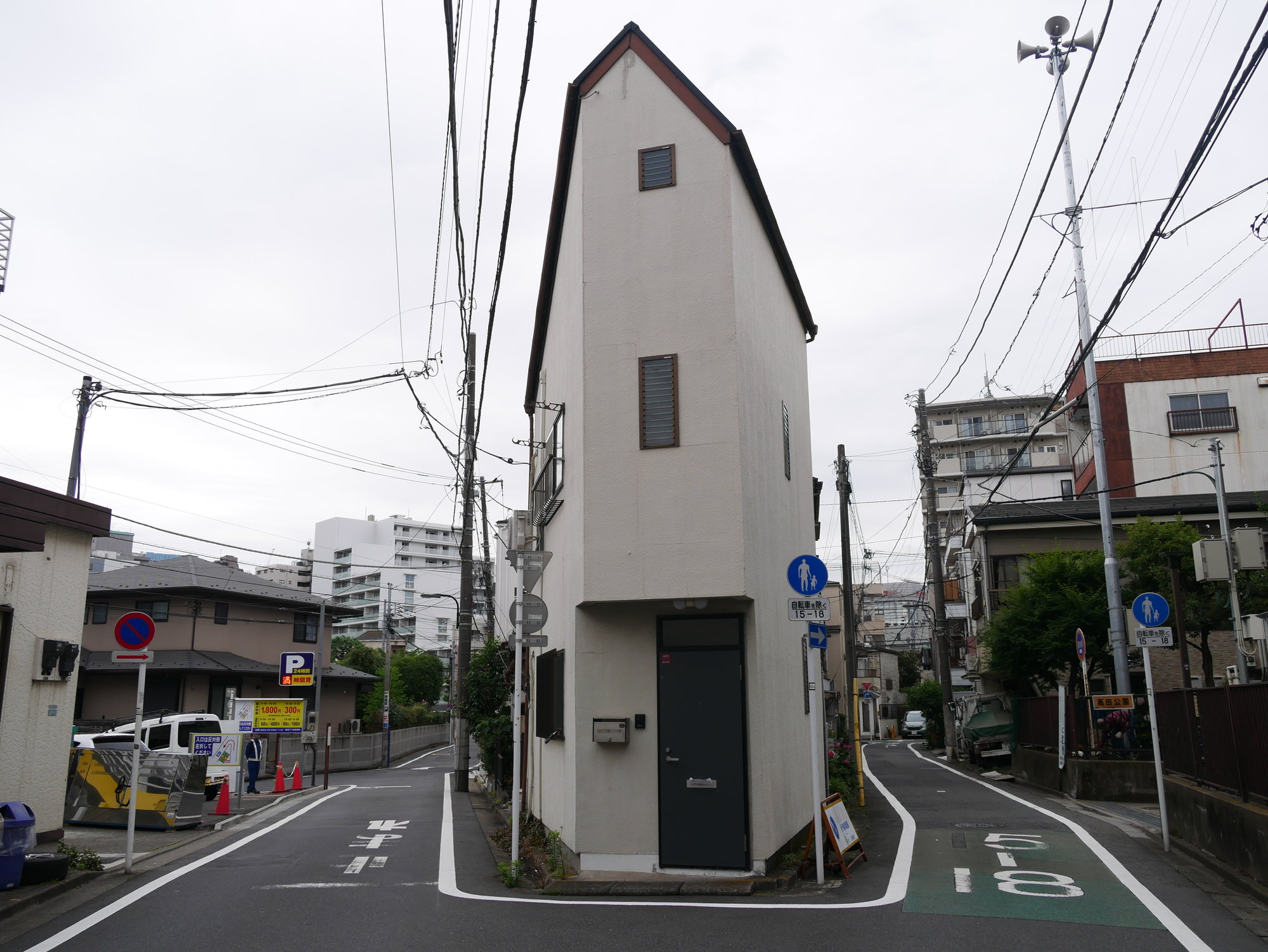
Cool house!

This is where the three friends part ways. It's a parking nowadays, so doesn't look like in the movie, but there are many similar turn-offs in the area with more nature, if you want something more attractive.
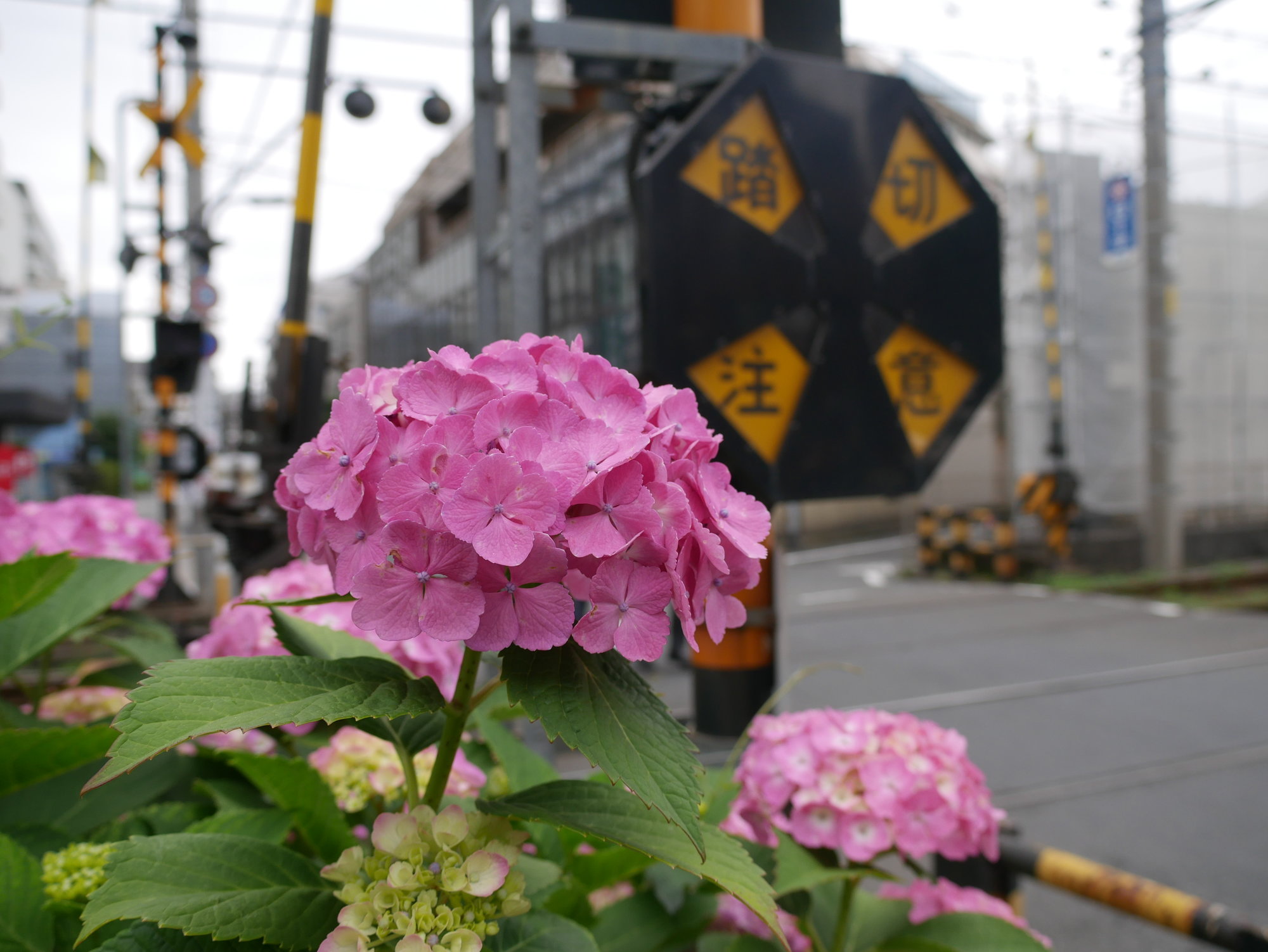
The train crossing...

To our next stop!
After some morning walking, it was time for lunch, so I took the train down to Jiyugaoka. Jiyugaoka is a trendy area, probably one of the more vegan-friendly neighbourhoods in Tokyo. I was supposed to do a bit of a "food tour" here, going to Saigo for some vegan unagi, T’s Restaurant for some vegan montblanc, then Kosoan for some macha, and Dolala for dorayaki. In the end, I didn't have the energy for it, and just did all my eating at T’s Restaurant.
I had a salad as first, this French dish as second and ice cream with nuts and things as pudding. They sell vegan cup ramen here too.
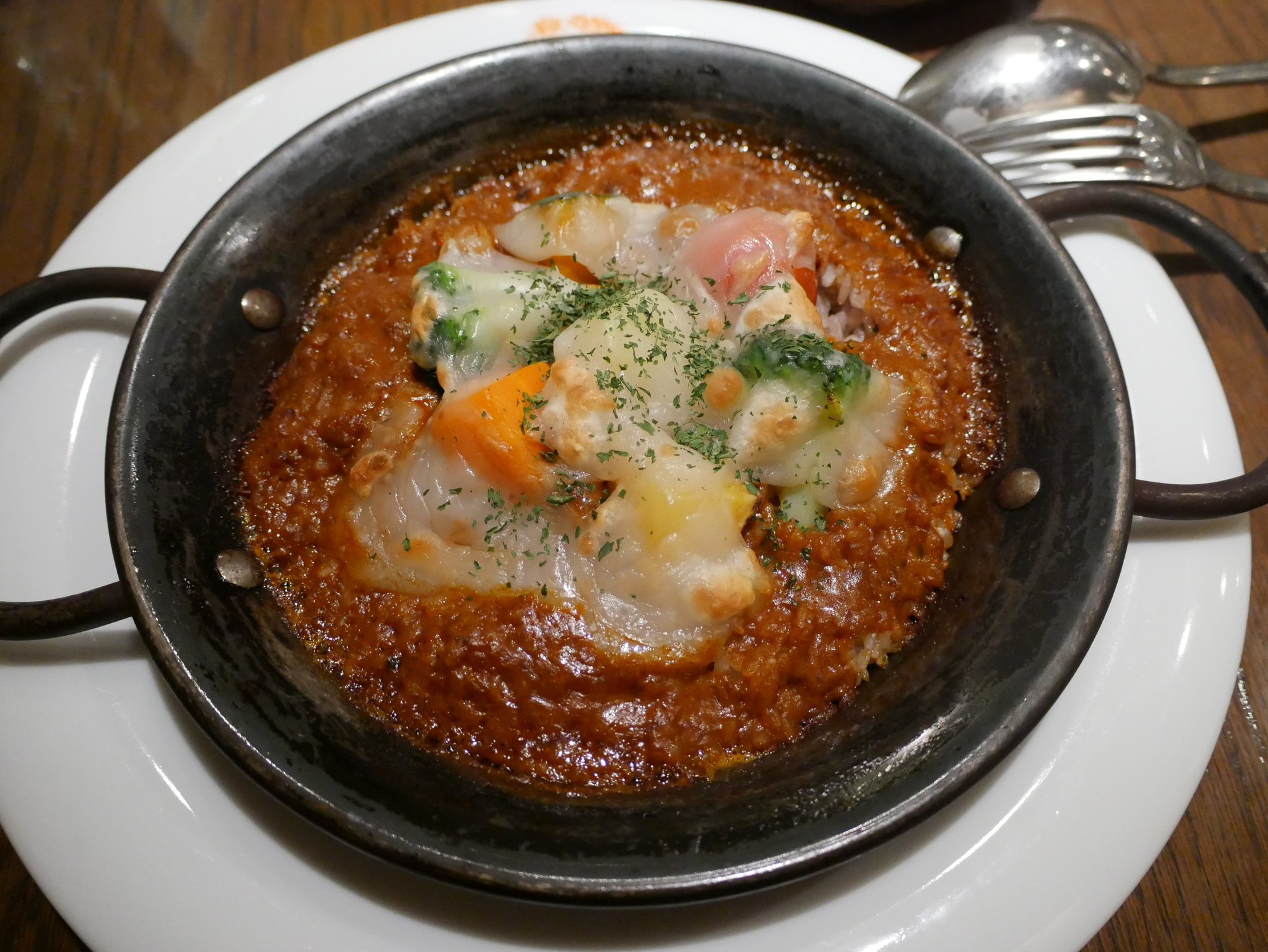
After that I went to JŰshinji temple. This temple has been on my radar for a few years, but I've been keeping it for a summer trip, when the greenery would be on full display.
It was certainly worth waiting!
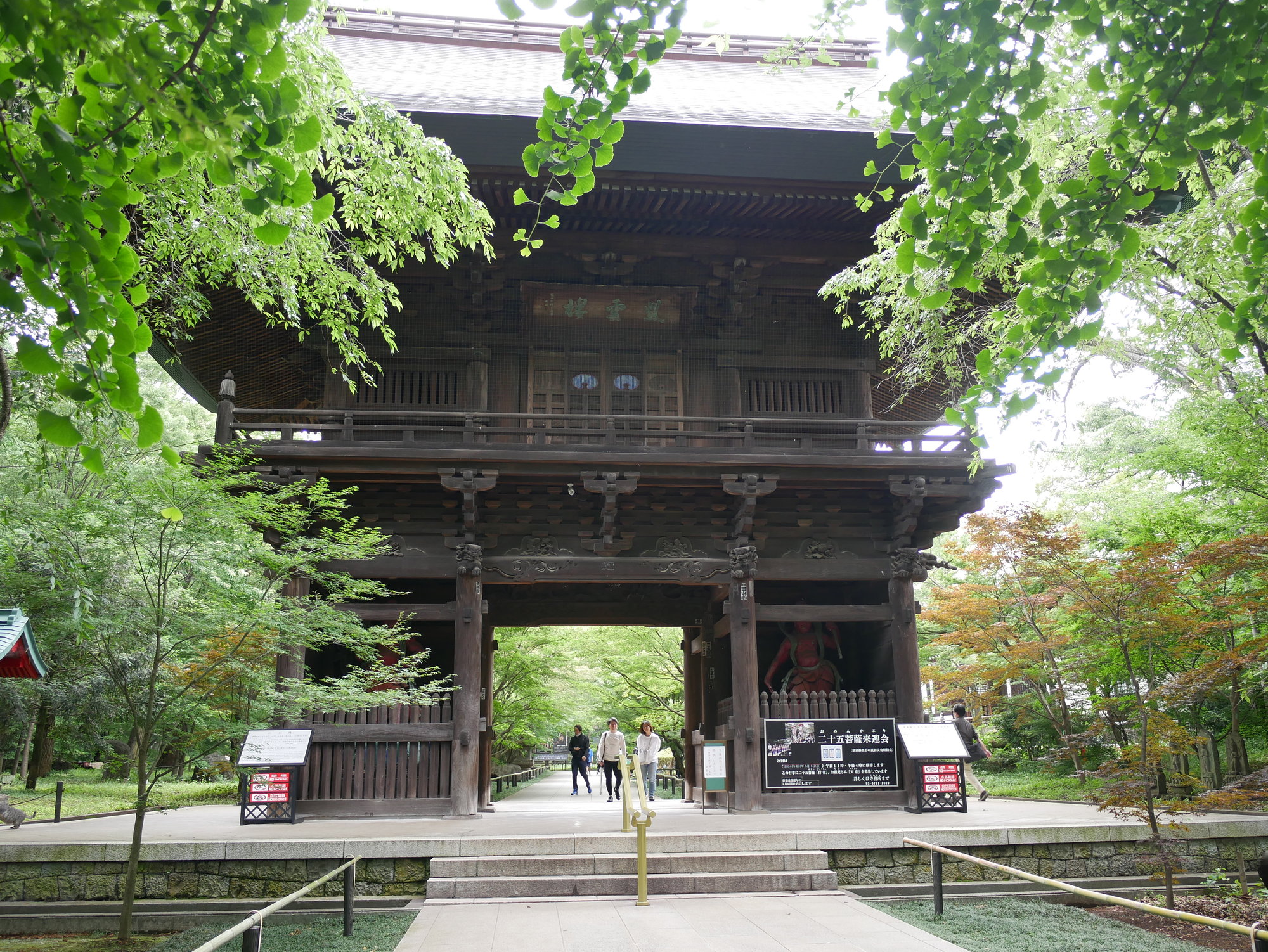
It's not the biggest temple, but it's large by Tokyo standards: a main prayer hall, three Buddha halls, a side building and a bit of a garden. The architecture shines at the entry gate though (above).
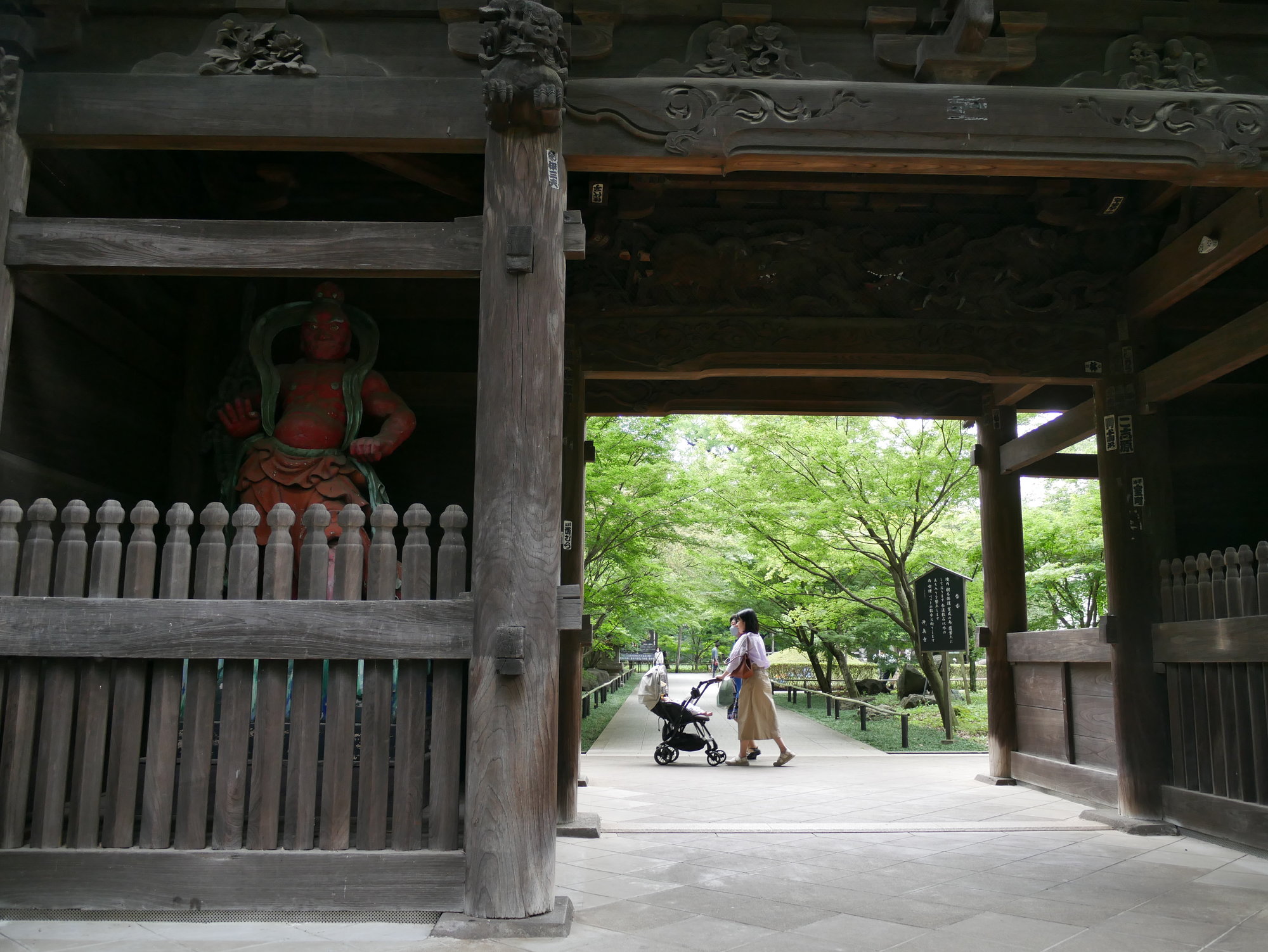
At shinto shrines you'll see komainu statues, at Buddhist temples there are nio statues like these. They usually don't look very friendly, but nio are the guardians and protectors of Buddha.
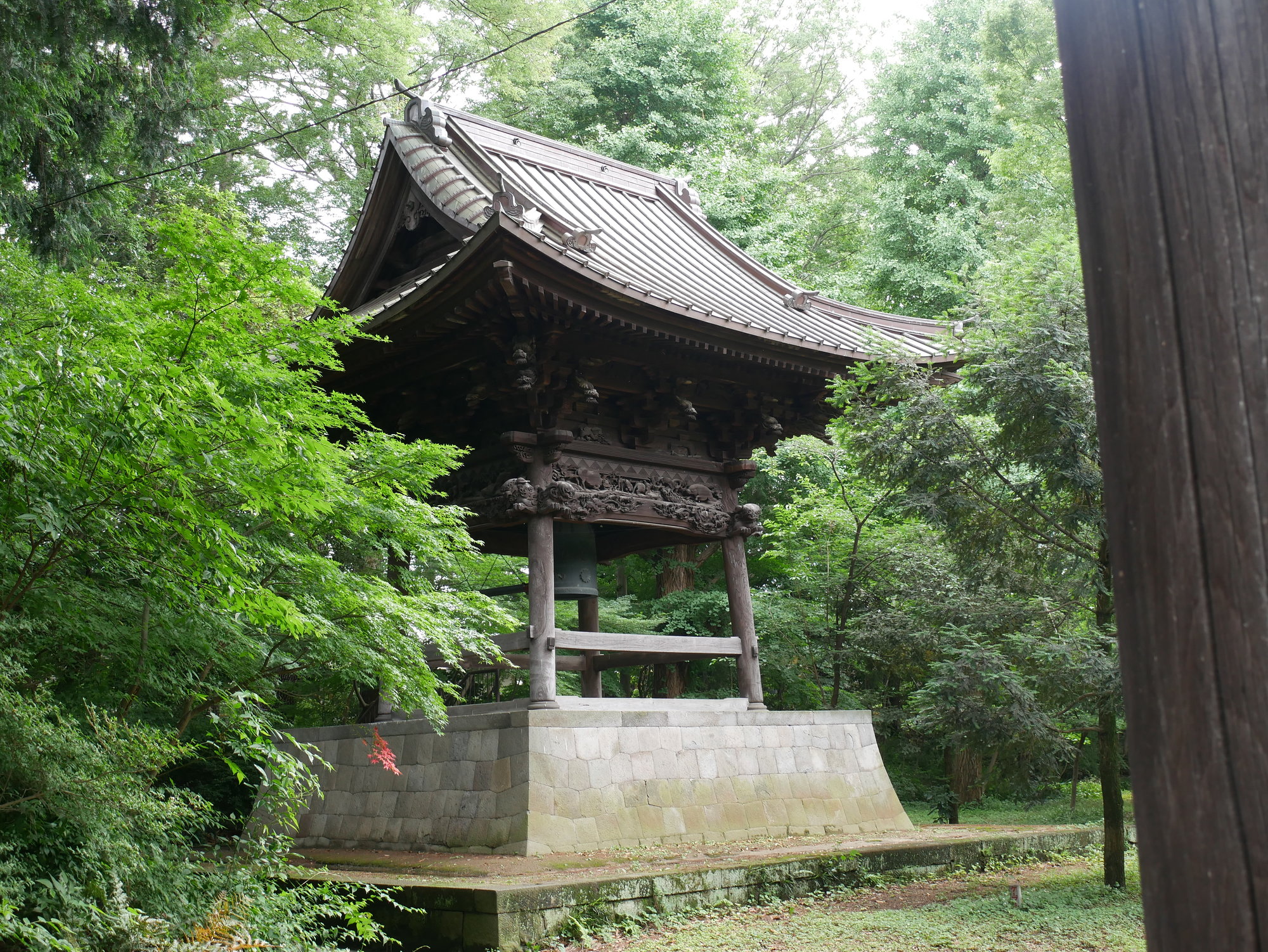
The bell tower has the best wood carvings.
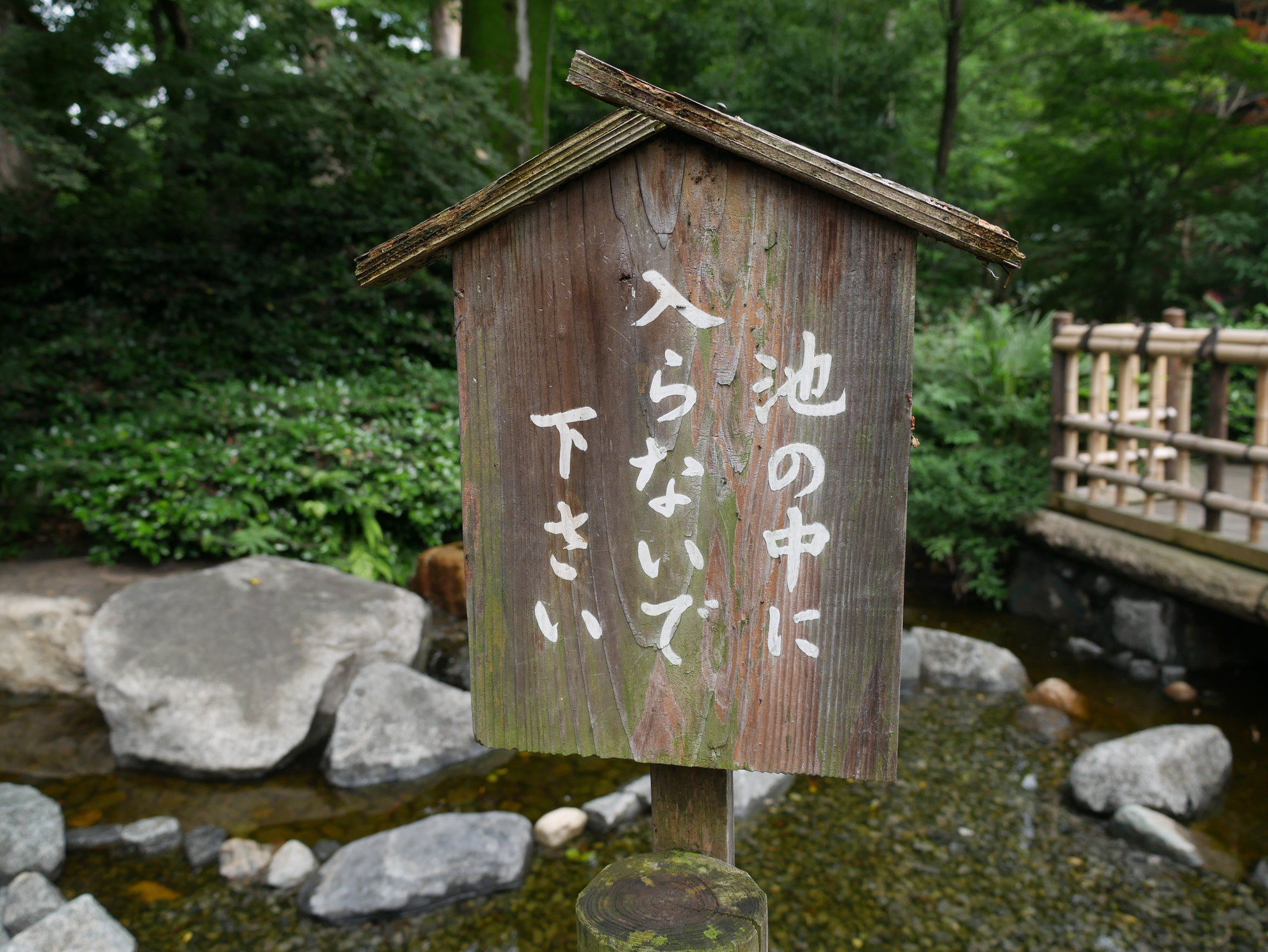
Don't go into the pond! It's nice when I can actually read signs. My Japanese study has to be worth something...

Buckets at the temple cemetery. I promise I don't make a habit of visiting cemeteries. They just had a bucket shed which I thought was quite funny-looking.

Even a little rock garden, though it's not really easy to view. I think it was possible to go into the main hall, and see the garden from the side doors in there.
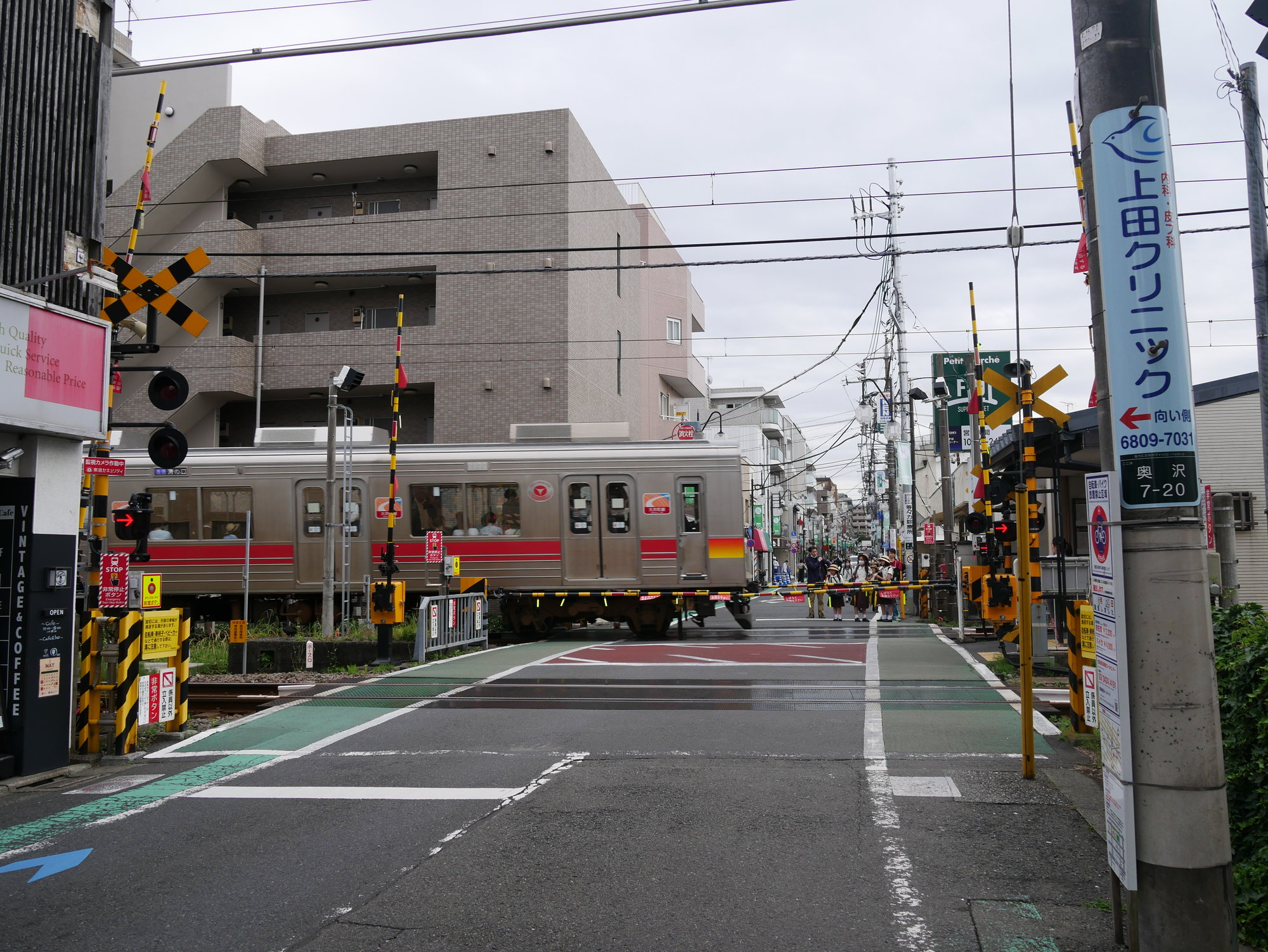
I forget how frequent trains are in Tokyo!
After sitting under the trees at the temple for a while, I decided to head onto the next stop and walked to the end of the road to catch the train. School kids were out and about, but I was the only one who needed to buy a ticket so there was no waiting around. The train was full, but it was only one or two stops to Todoroki.
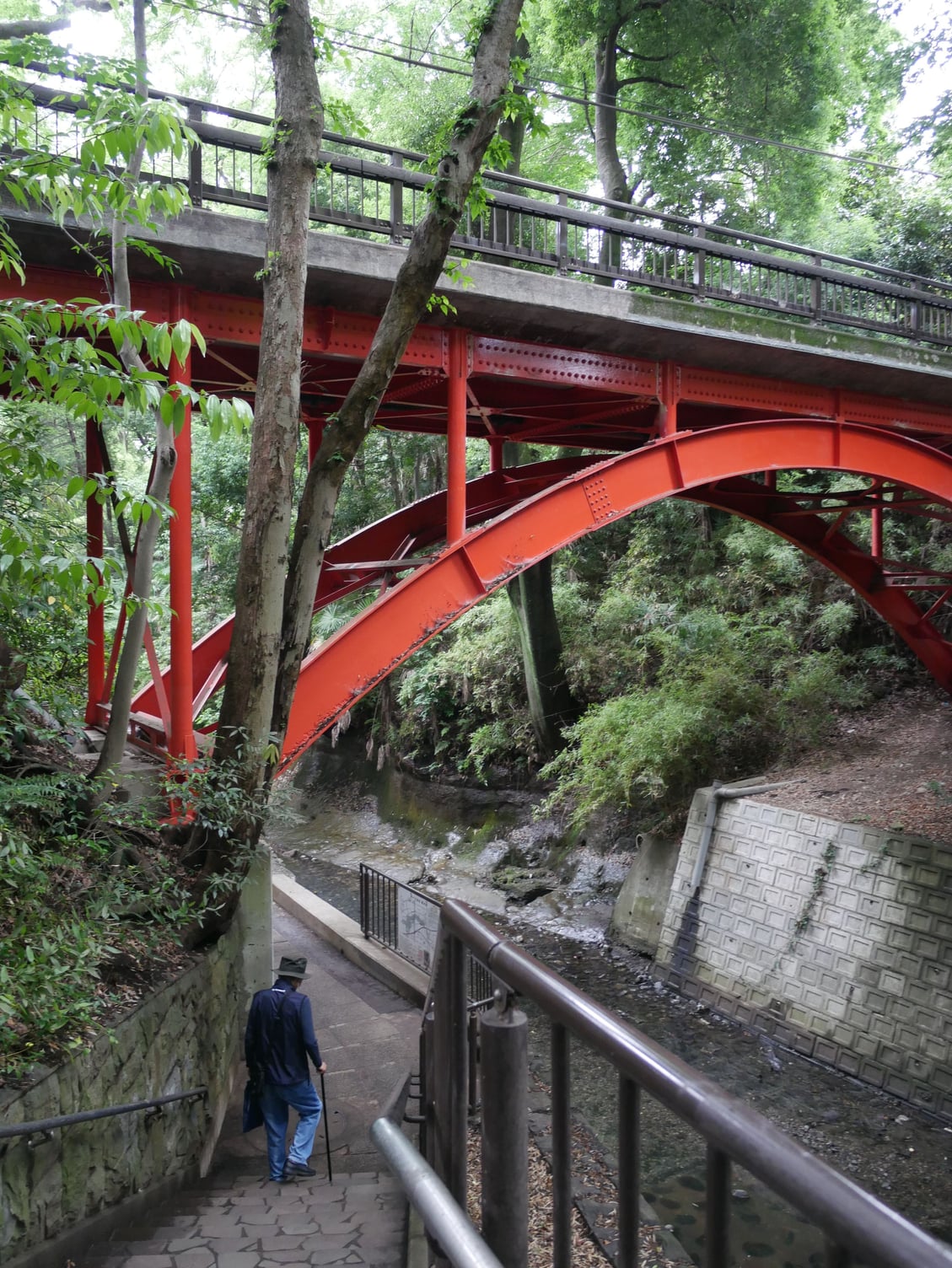
Steps from the road down to the river
In Todoroki there's Todoroki valley. It's really a path down by the river, not far from the train station. I always imagined it to be a quiet place, but there were quite a few people (I only had one empty photo), most of them foreigners. I think the internet has popularised the walk so many longer-term tourists know about it. I probably wouldn't go there on a weekend.
It's worth noting, however, that I have an almost nonexistent tolerance for "crowds". Any place with more than five people is a crowd by my standards I work from home, have always lived in small towns and typically visit rural areas, so I'm not used to being around people all that much.
I work from home, have always lived in small towns and typically visit rural areas, so I'm not used to being around people all that much.
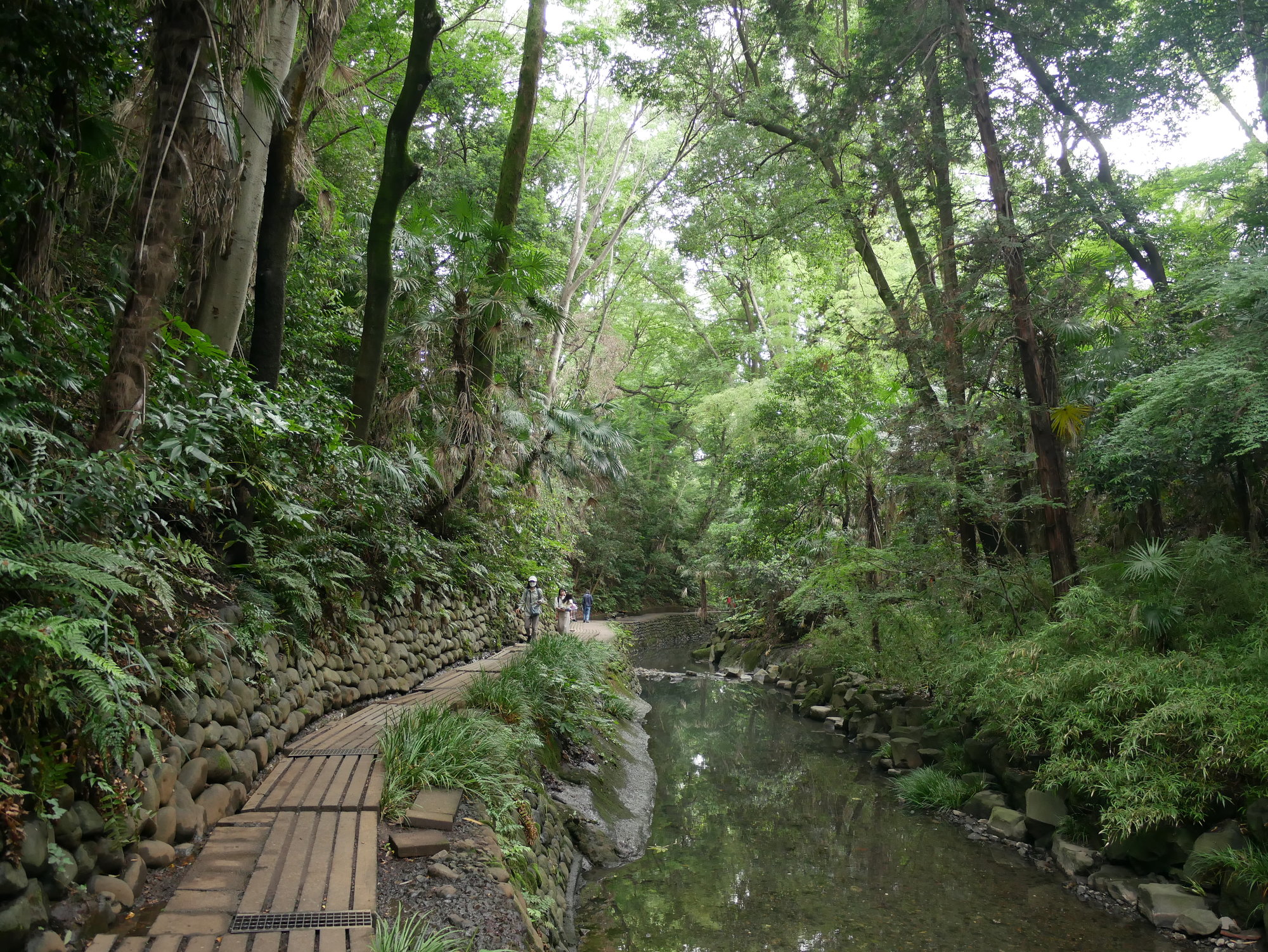
It's little more than a five minute walk from the start to the temple.
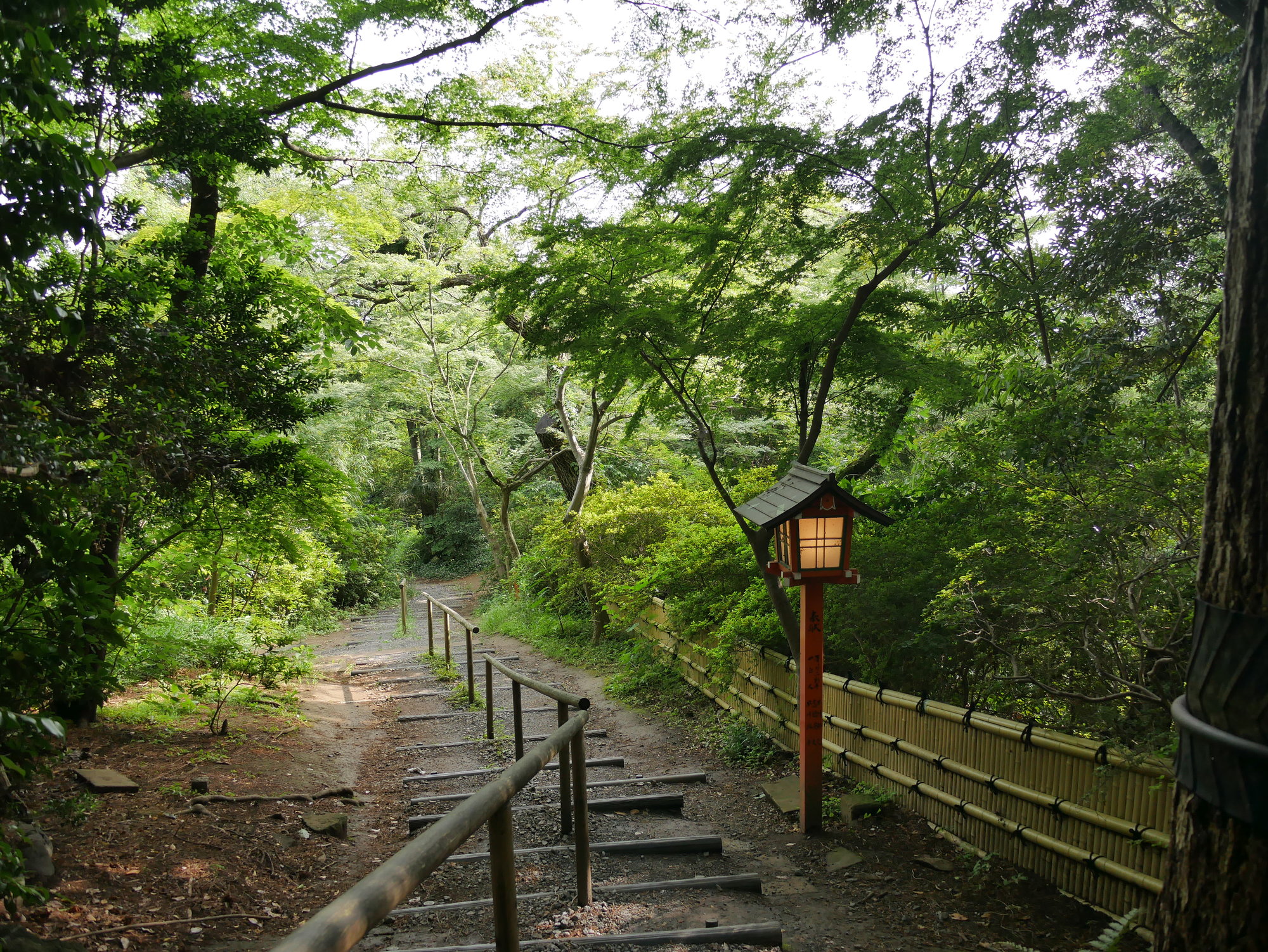
Most visitors did stick to the trail though. The two gardens next to the temple were empty, and it seems most arrived to the temple, snapped a couple pictures and left. It was a strange mix of many-people and emptiness.

At the temple there was a chinowa, that ring of grass. This is something only seen in summer and on New Years', and more common at shrines than temples. People are purified and protected from illness and evil by passing through the circle. The origin comes from a legend where Susanoo-no-mikoto shows a poor man how to make a circle out of kaya grass and wear it around his waist to stave off an epidemic, after the man sheltered the kami (God) for a night.
If you see one of these circles, what you have to do is stand in front (looking towards the temple, not with your back to it) and bow. Then walk through it and go to the left, walk through it again and go to the right, go through it again and to the left again, go through again and you're done. It's a sort of number 8 dance with three circles. There are often instructions at the shrine, if you forget the rules.
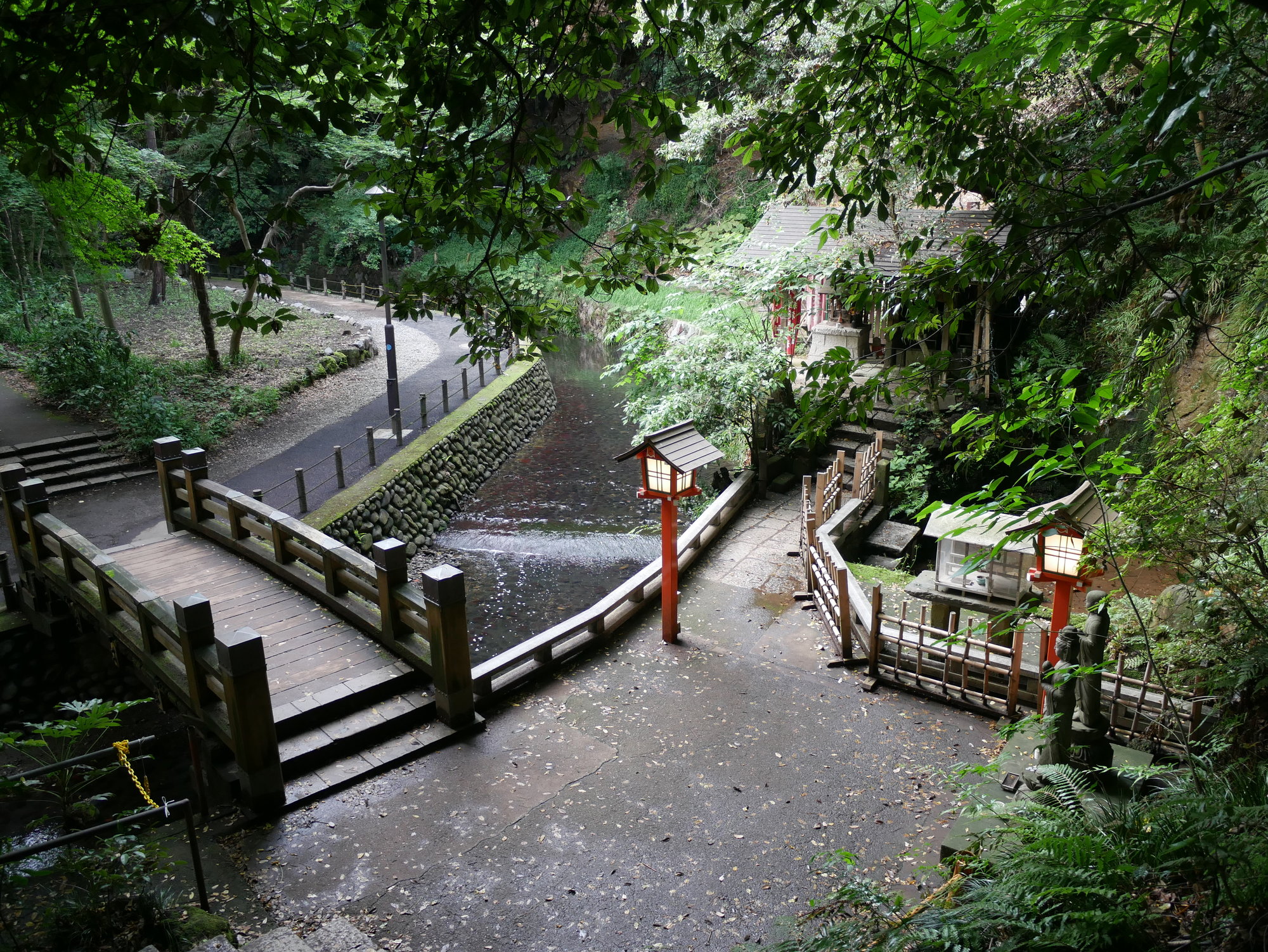
The air started getting a little chilly, the sun setting and people leaving, but I walked around the gardens. I found a patch of grass where there were some girls having a picnic, and laid down nearby for a rest, but I was there for only ten minutes before the gardener told us we had to leave since the garden was closing. Everything in Japan closes at 5pm.
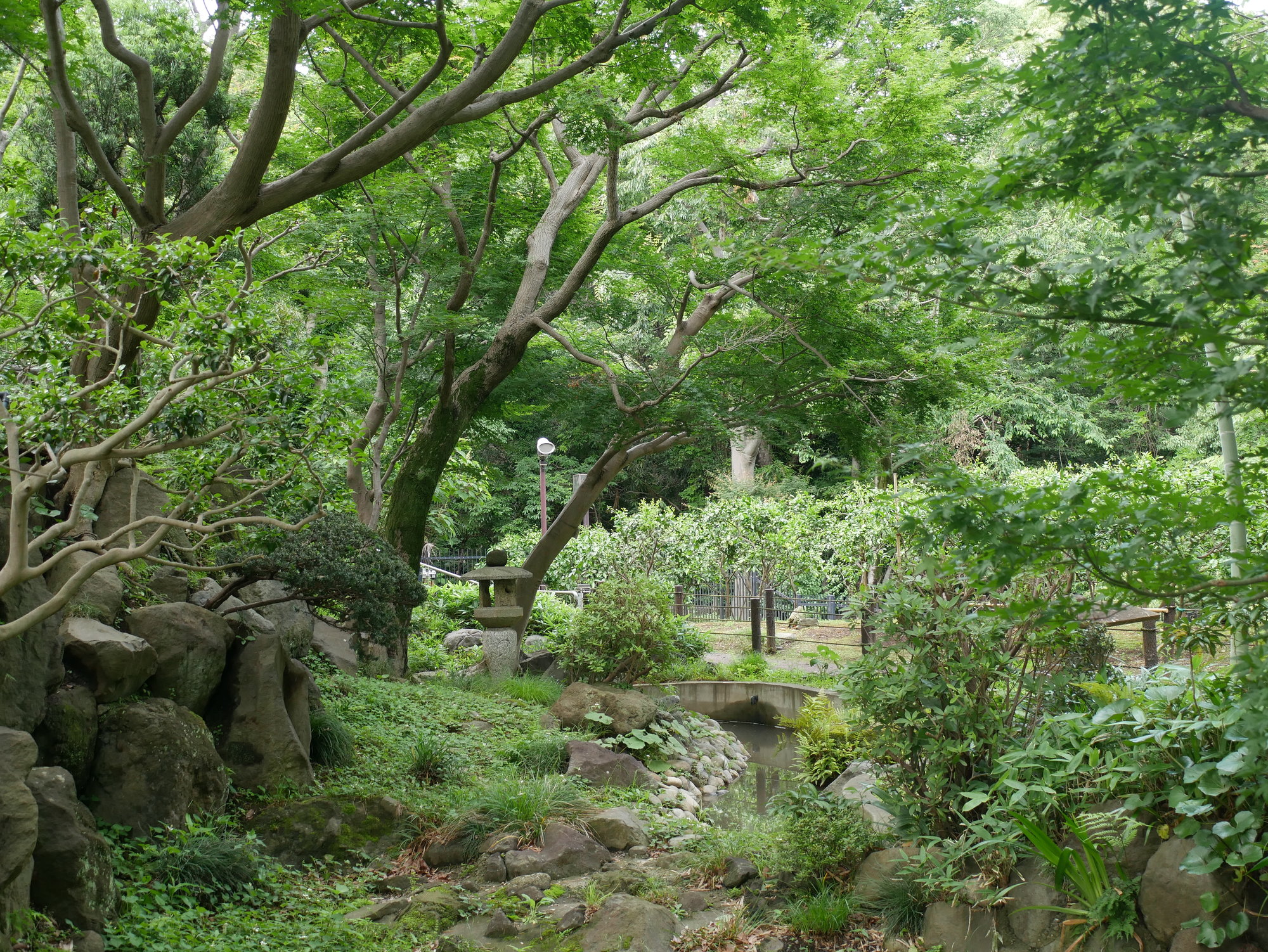
So I began the walk back, found some prehistorical graves in a nearby park. There was a very strange bird in the Todoroki river. Not a heron. Stumpier, but similar.
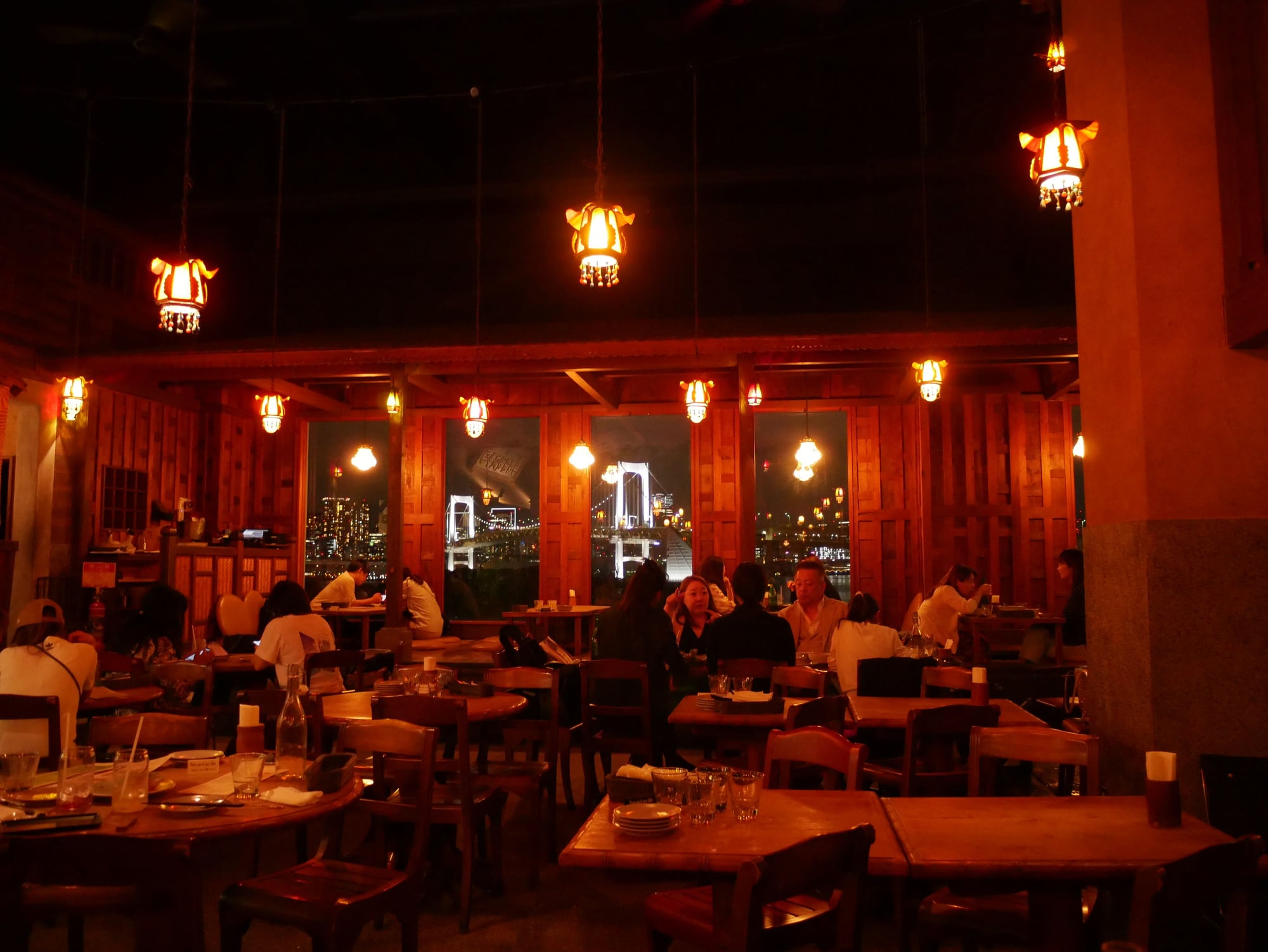
The rainbow bridge in the distance.
With the dark upon me, I headed back to the hostel to pick up my bag, and took the Rinkai Line to Teleport station in Odaiba. The Rinkai Line has some of its stations very deep underground, and you just go down, and down, and down into the earth with the escalators.
I'd planned to have dinner at La BŰheme because of the photogenic lighting, but they weren't yet open. I found another restaurant (Monsoon) in the same building which looked pretty similar and got in some Vietnamese food.
I've been to Odaiba a few times, but I'd never actually seen the Statue of Liberty, and she's definitely good-looking all lit up, so I made a stop there are well.
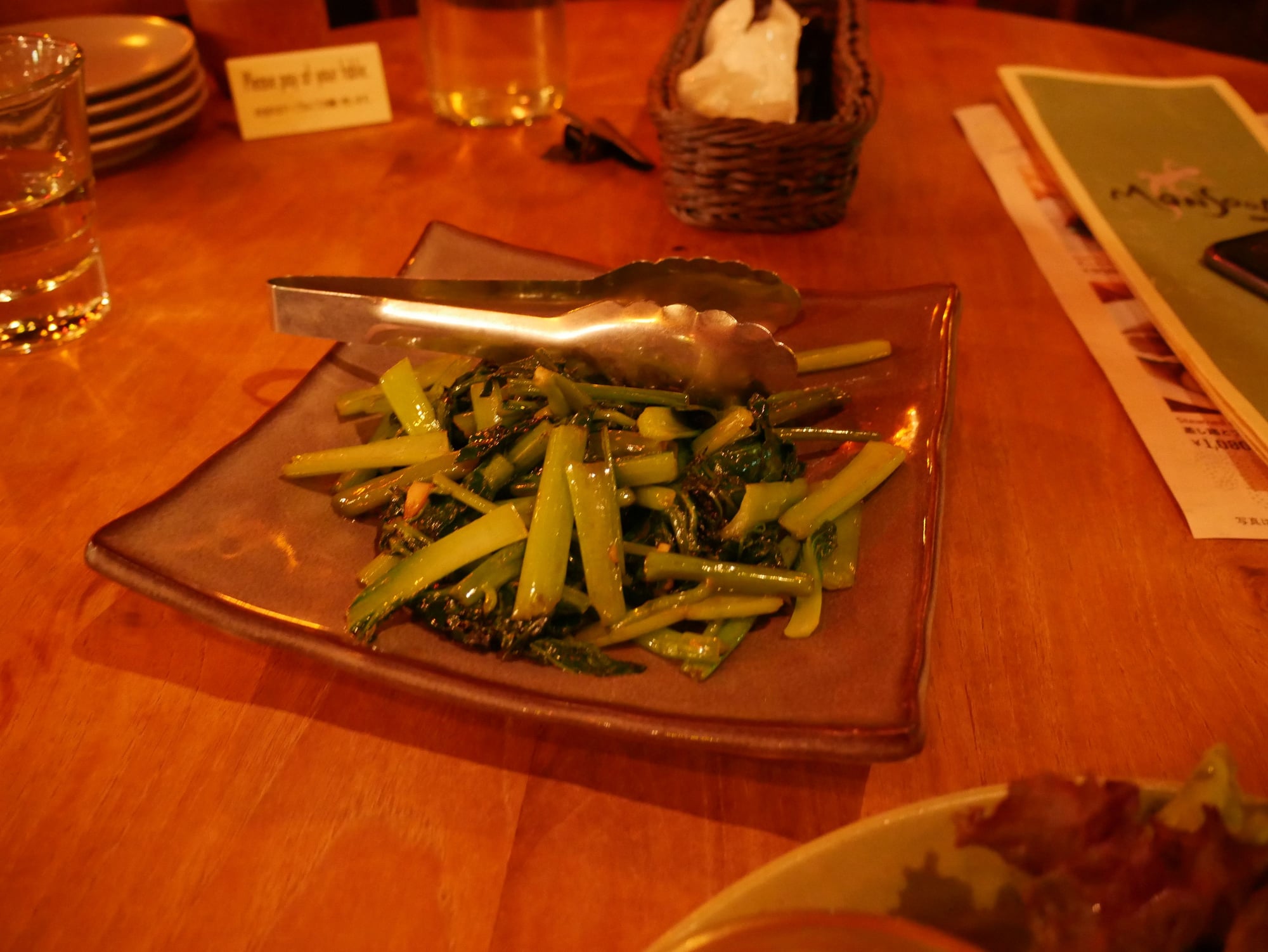
My bus departed at some time after 10pm from the Teleport station. Usually there's a Willer bus sign telling you where to stand, but there was no sign or map at the station. I re-checked the map from the Willer website and just waited around, and thankfully there were a few other people arriving and waiting for the same bus, so I stopped worrying.
The carriage arrived and we were checked onto the bus, our bags in the boot and sleep masks in place, and then off across the country!
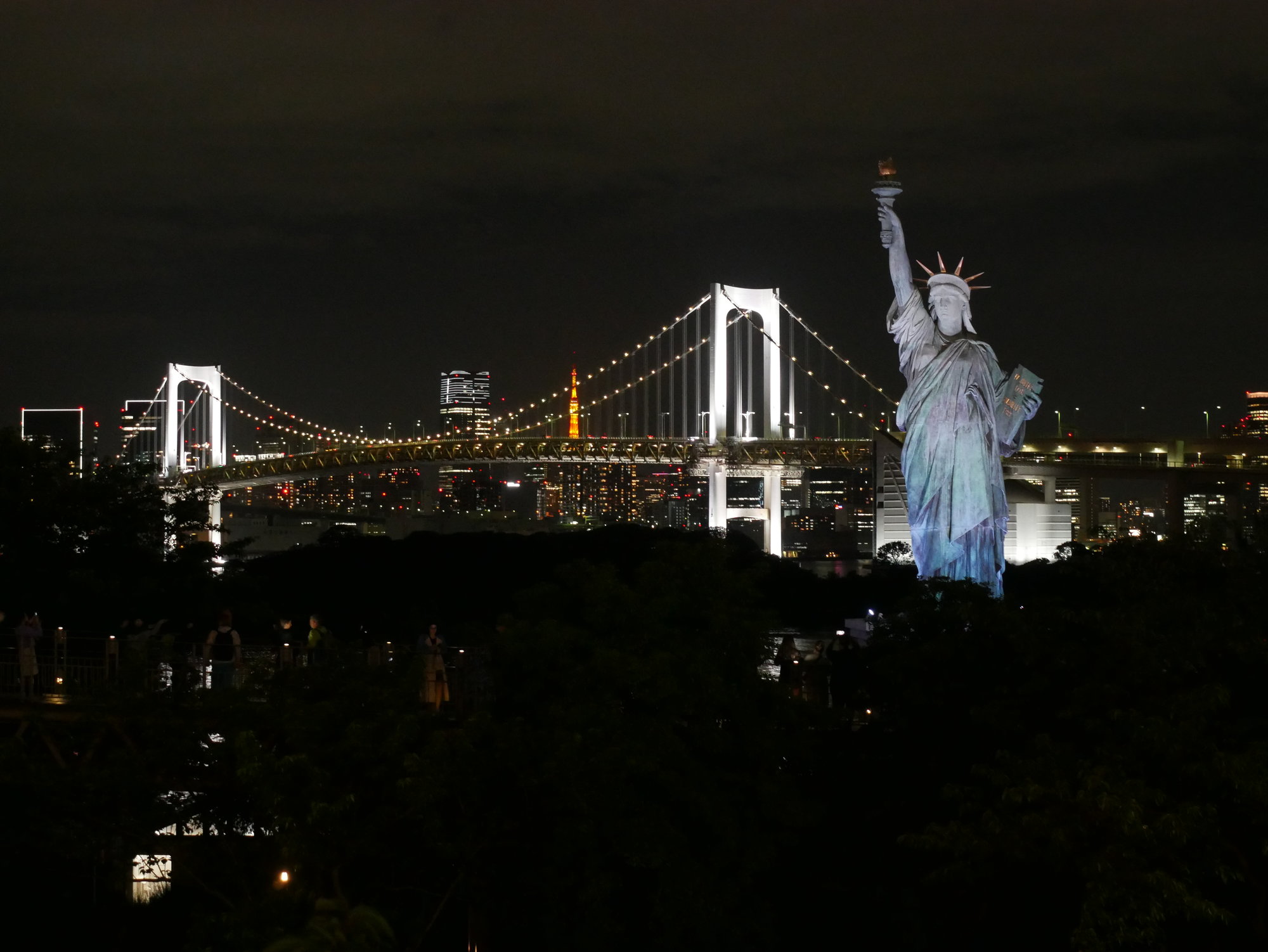

My first full day, I woke up at Cocts, checked out and left my bag downstairs, and headed straight to Zōshigaya after buying some breakfast from the convenience store. Zōshigaya is an area in the centre of Tokyo I'd been wanting to visit for a long time, for two reasons.
The first was Zōshigaya Cemetery. It has the graves of many important literary figures. The main grave I wanted to see was that of Lafcadio Hearn. I read his book Kwaidan in my teens and that awakened my interest in Japan (before that I enjoyed manga but had little interest in the country). Even today, folklore, myths and legends remain a major interest due to that book. I've read some of Hearn's travelogues and visited his former residences in Matsue and Kumamoto, but I had to pay respects to his grave at least once.

Lafcadio Hearn changed his name to Koizumi Yakumo, his Japanese name is more known in the country.
I also wanted to stop by Izumi Kyoka's grave, since I liked his book The Holy Man of Mount Kōya, and I found Natsume Soseki as well. I haven't read anything by Soseki, but I assume I will at some point!
The layout of the cemetery is well organised, but a little complicated if you're unfamiliar with the system. Essentially there are numbered zones (2-1, 1-1, 1-2, etc.), each with numbered rows. The little white pillars sit at the start of each row and tell you where you are. There is a map at the north entrance which tells you where the famous people lay.

My second reason for being here was a movie called The Girl Who Leapt Through Time. Mamoru Hosoda's movies are a bit hit or miss for me (Summer Wars was good, Wolf Children boring, I never bothered watching anything else), but this one was one of my favourite anime movies. I used to have short hair as a teenager so I really liked the main character. She (Makoto) lives in this neighbourhood, so it comes out a lot in background scenes.

Makoto goes down this hill every day on her way to school. It's not the big zoomy hill though, that one was an artistic license. I almost got run over by a bike while walking down the hill... like in the movie?!

Cool house!

This is where the three friends part ways. It's a parking nowadays, so doesn't look like in the movie, but there are many similar turn-offs in the area with more nature, if you want something more attractive.

The train crossing...

To our next stop!
After some morning walking, it was time for lunch, so I took the train down to Jiyugaoka. Jiyugaoka is a trendy area, probably one of the more vegan-friendly neighbourhoods in Tokyo. I was supposed to do a bit of a "food tour" here, going to Saigo for some vegan unagi, T’s Restaurant for some vegan montblanc, then Kosoan for some macha, and Dolala for dorayaki. In the end, I didn't have the energy for it, and just did all my eating at T’s Restaurant.
I had a salad as first, this French dish as second and ice cream with nuts and things as pudding. They sell vegan cup ramen here too.

After that I went to JŰshinji temple. This temple has been on my radar for a few years, but I've been keeping it for a summer trip, when the greenery would be on full display.
It was certainly worth waiting!

It's not the biggest temple, but it's large by Tokyo standards: a main prayer hall, three Buddha halls, a side building and a bit of a garden. The architecture shines at the entry gate though (above).

At shinto shrines you'll see komainu statues, at Buddhist temples there are nio statues like these. They usually don't look very friendly, but nio are the guardians and protectors of Buddha.

The bell tower has the best wood carvings.

Don't go into the pond! It's nice when I can actually read signs. My Japanese study has to be worth something...

Buckets at the temple cemetery. I promise I don't make a habit of visiting cemeteries. They just had a bucket shed which I thought was quite funny-looking.

Even a little rock garden, though it's not really easy to view. I think it was possible to go into the main hall, and see the garden from the side doors in there.

I forget how frequent trains are in Tokyo!
After sitting under the trees at the temple for a while, I decided to head onto the next stop and walked to the end of the road to catch the train. School kids were out and about, but I was the only one who needed to buy a ticket so there was no waiting around. The train was full, but it was only one or two stops to Todoroki.

Steps from the road down to the river
In Todoroki there's Todoroki valley. It's really a path down by the river, not far from the train station. I always imagined it to be a quiet place, but there were quite a few people (I only had one empty photo), most of them foreigners. I think the internet has popularised the walk so many longer-term tourists know about it. I probably wouldn't go there on a weekend.
It's worth noting, however, that I have an almost nonexistent tolerance for "crowds". Any place with more than five people is a crowd by my standards
 I work from home, have always lived in small towns and typically visit rural areas, so I'm not used to being around people all that much.
I work from home, have always lived in small towns and typically visit rural areas, so I'm not used to being around people all that much.
It's little more than a five minute walk from the start to the temple.

Most visitors did stick to the trail though. The two gardens next to the temple were empty, and it seems most arrived to the temple, snapped a couple pictures and left. It was a strange mix of many-people and emptiness.

At the temple there was a chinowa, that ring of grass. This is something only seen in summer and on New Years', and more common at shrines than temples. People are purified and protected from illness and evil by passing through the circle. The origin comes from a legend where Susanoo-no-mikoto shows a poor man how to make a circle out of kaya grass and wear it around his waist to stave off an epidemic, after the man sheltered the kami (God) for a night.
If you see one of these circles, what you have to do is stand in front (looking towards the temple, not with your back to it) and bow. Then walk through it and go to the left, walk through it again and go to the right, go through it again and to the left again, go through again and you're done. It's a sort of number 8 dance with three circles. There are often instructions at the shrine, if you forget the rules.

The air started getting a little chilly, the sun setting and people leaving, but I walked around the gardens. I found a patch of grass where there were some girls having a picnic, and laid down nearby for a rest, but I was there for only ten minutes before the gardener told us we had to leave since the garden was closing. Everything in Japan closes at 5pm.

So I began the walk back, found some prehistorical graves in a nearby park. There was a very strange bird in the Todoroki river. Not a heron. Stumpier, but similar.

The rainbow bridge in the distance.
With the dark upon me, I headed back to the hostel to pick up my bag, and took the Rinkai Line to Teleport station in Odaiba. The Rinkai Line has some of its stations very deep underground, and you just go down, and down, and down into the earth with the escalators.
I'd planned to have dinner at La BŰheme because of the photogenic lighting, but they weren't yet open. I found another restaurant (Monsoon) in the same building which looked pretty similar and got in some Vietnamese food.
I've been to Odaiba a few times, but I'd never actually seen the Statue of Liberty, and she's definitely good-looking all lit up, so I made a stop there are well.

My bus departed at some time after 10pm from the Teleport station. Usually there's a Willer bus sign telling you where to stand, but there was no sign or map at the station. I re-checked the map from the Willer website and just waited around, and thankfully there were a few other people arriving and waiting for the same bus, so I stopped worrying.
The carriage arrived and we were checked onto the bus, our bags in the boot and sleep masks in place, and then off across the country!

Last edited by Peter_T; Sep 24th, 2023 at 06:58 AM.
#4
Original Poster
Join Date: Feb 2016
Posts: 113
Likes: 0
Received 0 Likes
on
0 Posts
 I tried to change the username, but no luck!
I tried to change the username, but no luck!The airport was Sydney, Australia. Terminal 1, if I'm correct. I hope you enjoy the report!
#5
I'm loving your trip report - so many quiet places to visit! I hope I can add one or two of the lesser known sights on our trip!
#6
Original Poster
Join Date: Feb 2016
Posts: 113
Likes: 0
Received 0 Likes
on
0 Posts
Route day 2: Arrival 8am Komatsu station (night bus) > 08:37 Train departs Komatsu > 09:07 Arrival Awara Onsen station. Leave bag in locker > 09:30 Bus departs Awara onsen station for Eiheiji > Eiheiji temple > Maruoka castle > Pick up bag > Train to Fukui + check-in
I arrived to Komatsu... not quite refreshed, I don't think anyone who's just spent a night sleeping on a long distance bus can say that, but in decent enough shape for a new round of sightseeing. When travelling to Japan, I'm the embodiment of the phrase "I'll sleep when I'm dead". No time to waste!

I had about half an hour to find some breakfast and the right platform, and then I was on a train to Awara onsen. I had no plans to visit the onsen, but there are buses departing from Awara to many of Fukui prefecture's main sites like Eiheiji, Maruoka and Tojinbo cliffs. The goal of the day was to see Eiheiji temple, and maybe stop at Maruoka castle if time on the way back.
I put my bag in a locker at Awara station and found the bus stop just as the bus was arriving. There are only 3 return buses per day to/from Eiheiji and Maruoka to Awara (there is an additional express bus between Fukui city and Eiheiji, if I remember correctly) so I couldn't miss this bus.

Secret stairs going up to secret rooms in the gate...
The ride went smoothly, though not quickly. It was over an hour drive, first through Maruoka --I tried to glimpse the castle from the window just in case I couldn't stop to see it later on-- then through rice fields, solar panels on stilts in the rice fields, more fields, picking up some Japanese tourists at Eiheiji-guchi train station and then up the slope and into the mountains.
We were the first bus of the day to reach Eiheiji, but some people who drive cars were already there. Still, it was surprisingly calm and quiet. Most shops were closed. This is a major tourist destination, but I guess not many people go out to Fukui on a weekday.
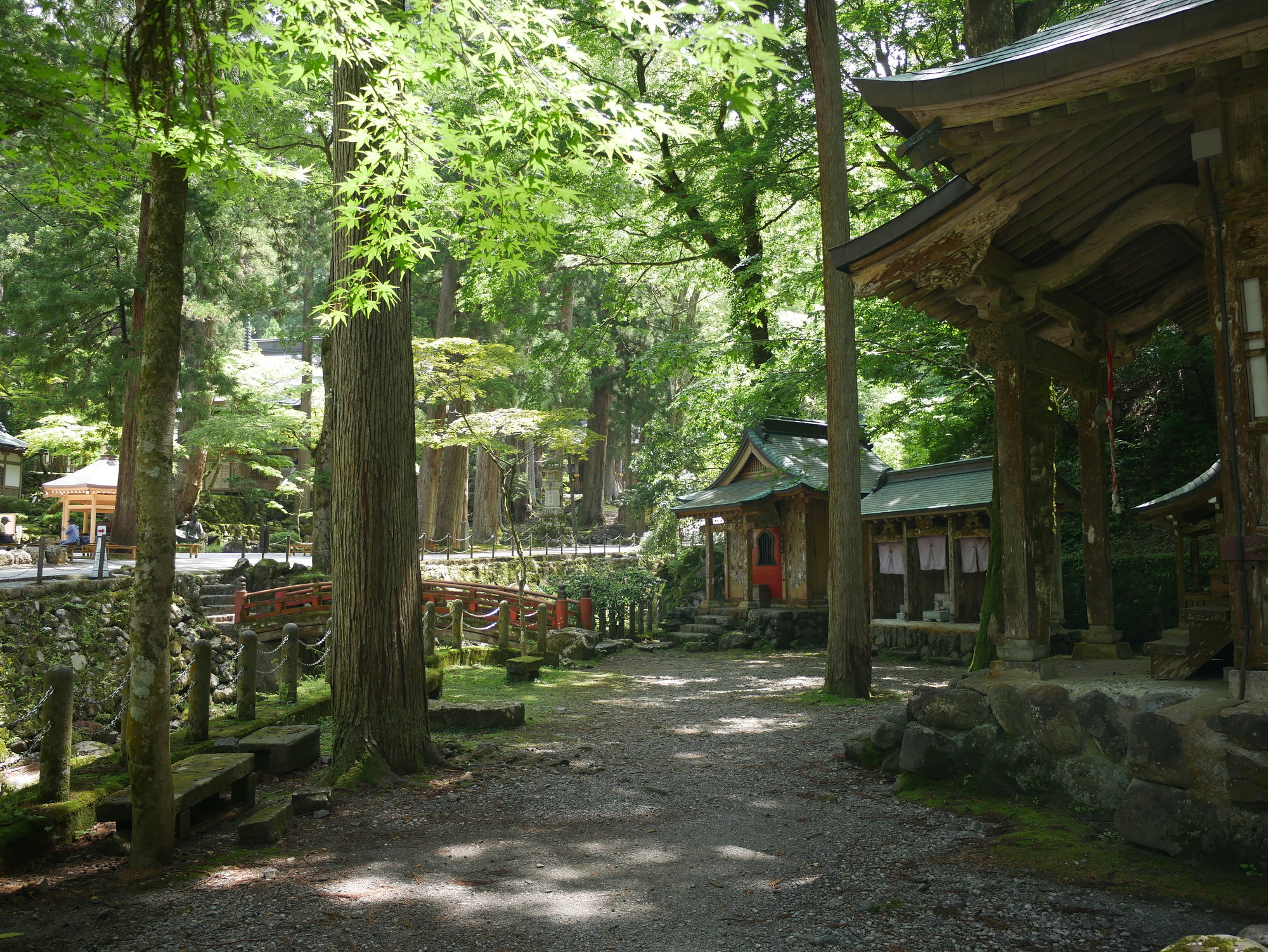
There are a handful of small shrines outside the paid area.
Eiheiji is a huge and very important temple, one of the two head temples of the Soto Zen sect of Buddhism and containing the ashes of Dogen (scholar who brought Soto Zen to Japan from China back in the 1200s). Most temples are fairly relaxed, even familial nowadays, but Eiheiji is the strictest temple I've been to. I was a little intimidated reading the rules for the overnight temple stay (I was not able to do that in the end), but as a visitor all you have to do is stick to the marked path, stay out of the way of any monks and you'll be fine.

After paying the entry fee, the sign points to the entry hall. It's a modern building, not part of the old temple, but they have the practical things (check-in for staying guests, bathrooms, a mini museum, etc.).
The visit to Eiheiji started with taking my shoes off and putting them in a plastic bag to carry with me. I have big European feet and the Japanese slippers never fit me, so sometimes I skip the slippers altogether, but I tried my best this time. I jammed half my foot into the men's Cinderella slippers and started my tour. There are a few steps and wooden corridors, passing by the dormitories of guests, the Sansong Pavilion -- a big tatami room with lacquered ceilings and a large Mt.Fuji painted roll at the tokonoma -- then the hallway opens up straight onto the Sanmon gate.
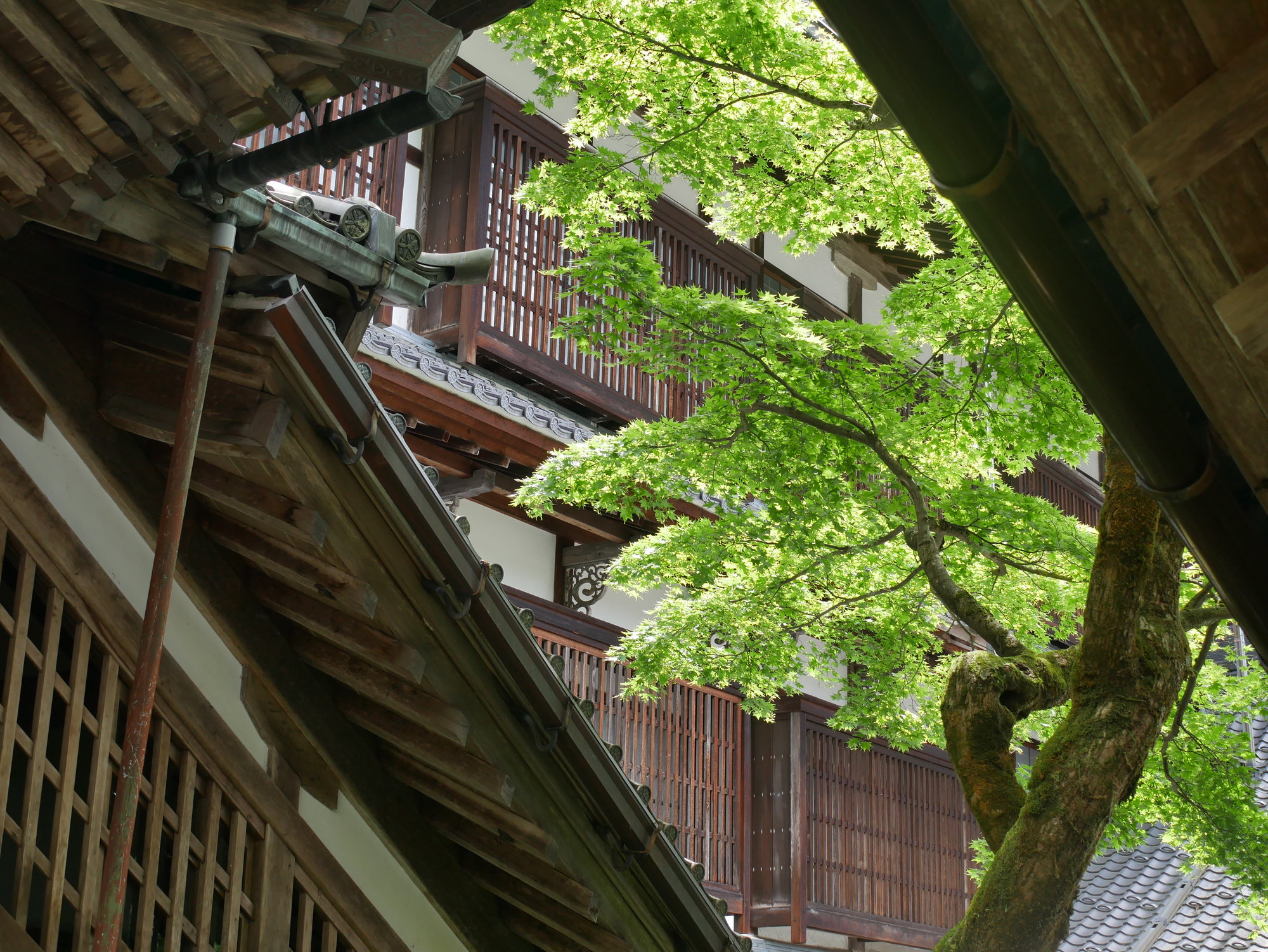
This is where the greenery begins. I just stood there, looking at the gorgeous temple around me. It's a breathtaking place. The wood with the bursts of trees and moss, the ocean of browns. The temple is unassuming in its simplicity, yet so complex that you just don't know where to look, what to focus on when everything is worth looking at.

For the next almost two hours I walked up and down wooden hallways, taking the steps one at a time. Staring at tiles and rocks and leaves. Sat on benches and listened to the sounds around me.
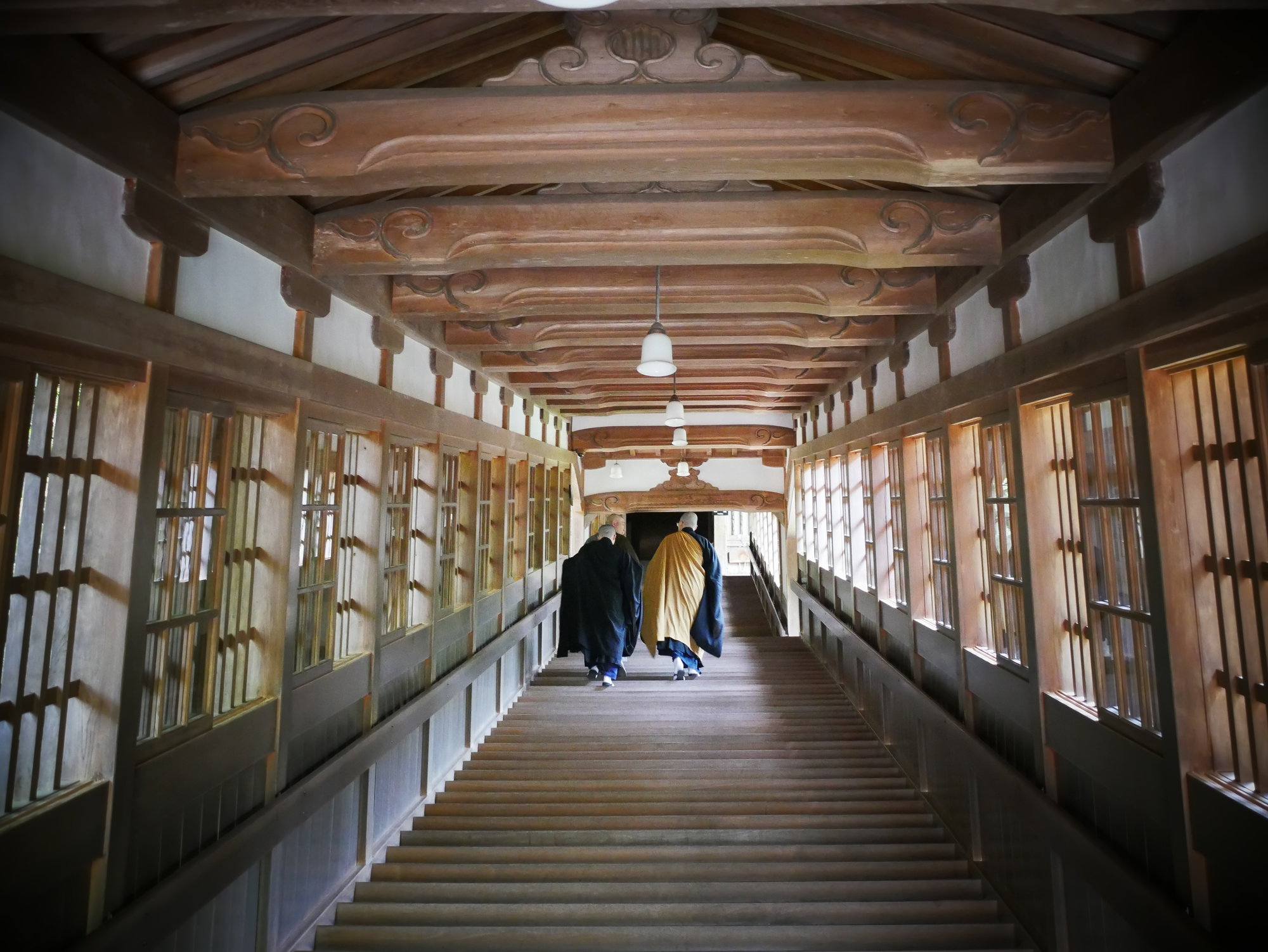
I said watch out for the monks before because they move from hall to halls for prayers (Eiheiji is an active monastery). There are at least twenty of them and they power-walk through the halls like they're on a mission. I almost got run over by all twenty of them, but managed to plaster myself against a wall just in time.
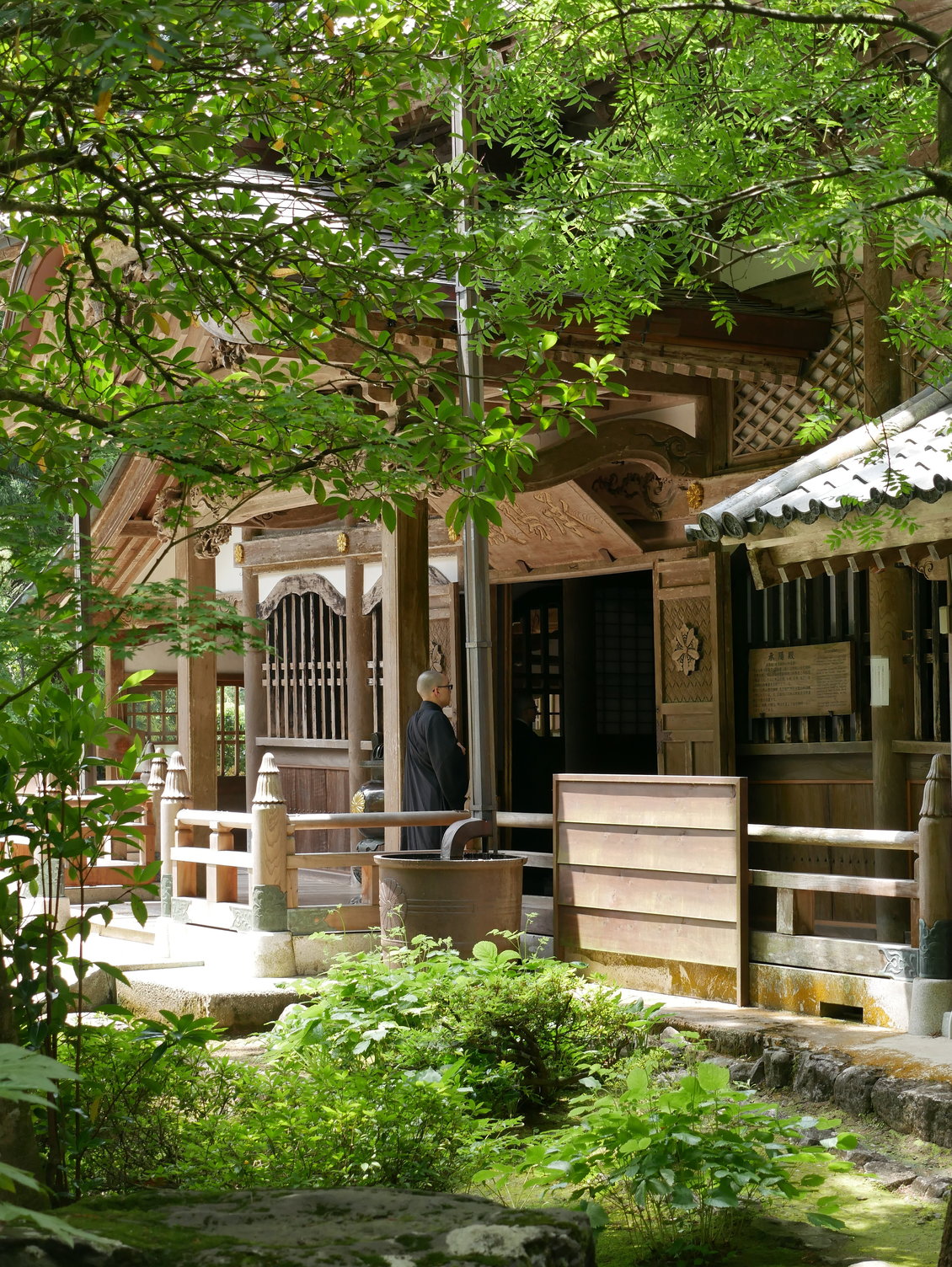
If you aren't getting trampled, it's nice to hear their chanting.

Senjafuda are these slips of paper / stickers. You'll see them in many shrines and temples in Japan, though they aren't allowed on all buildings since the glue destroys the wood. They basically have the name of the visitor and they're placed in an "I was here!" sort of way.
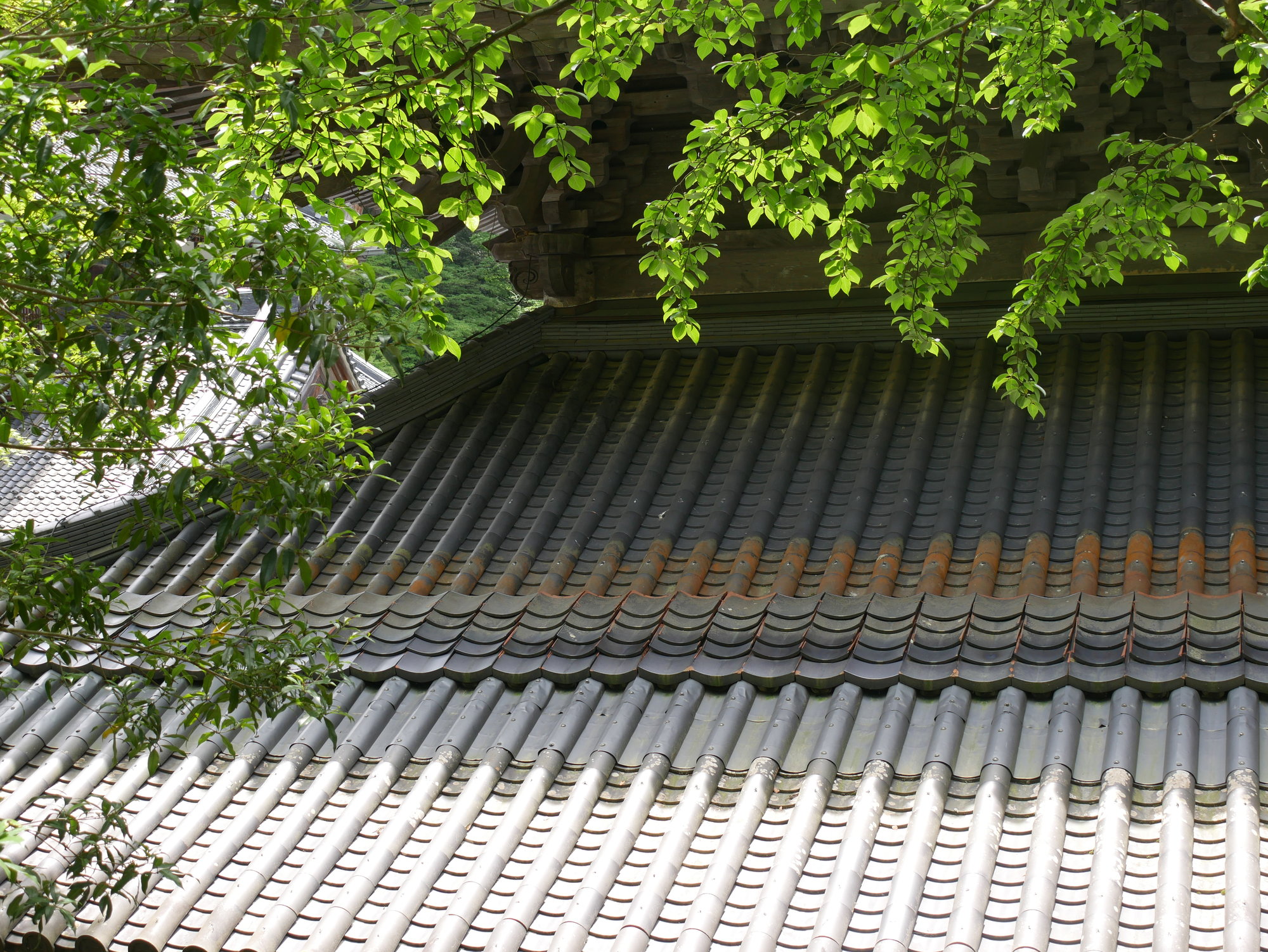
I always love the roof tiles.
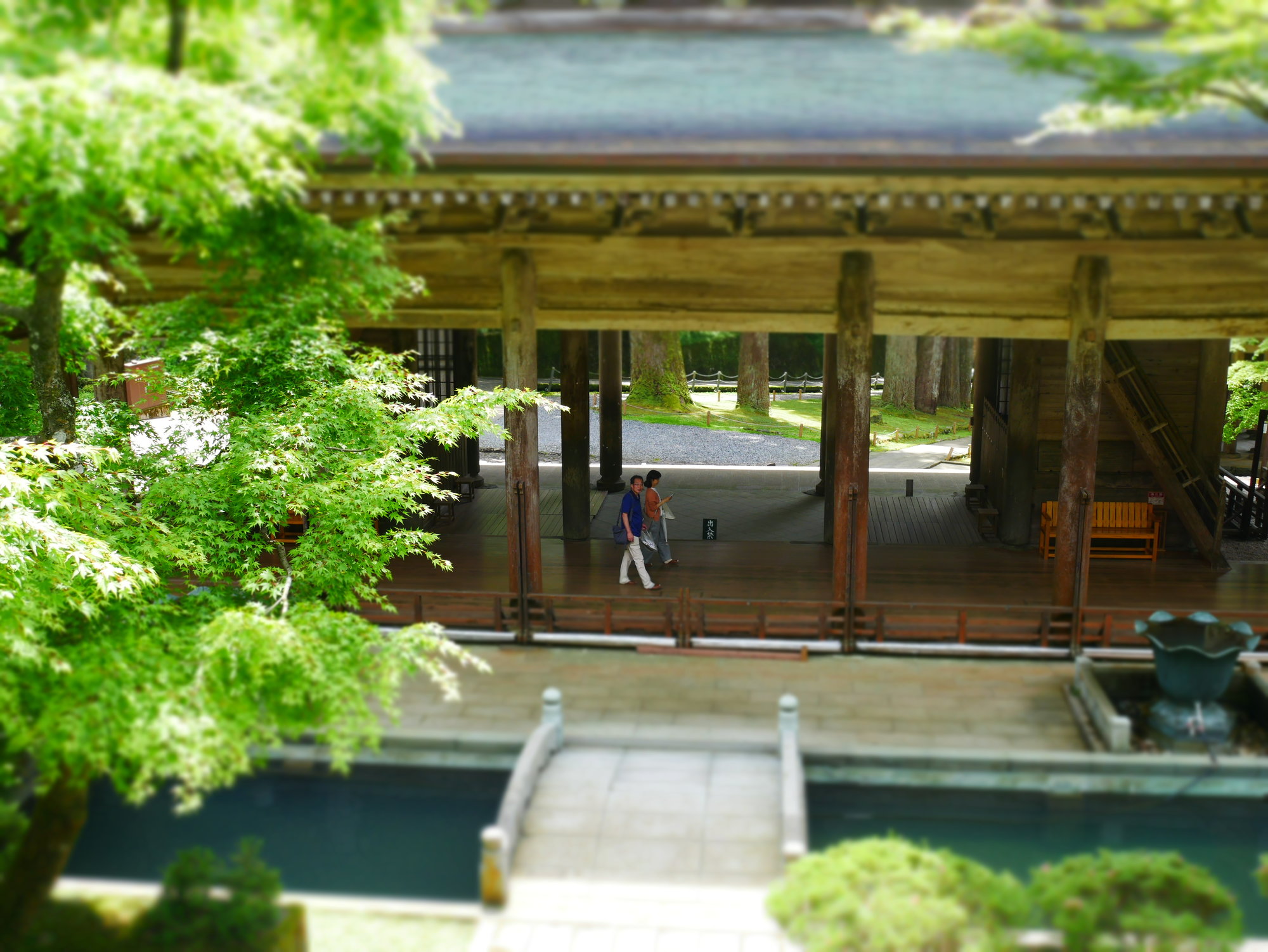
I was playing around with my camera settings during my trip, so you'll have to suffer through some of these style photos. I'll keep them to a minimum, I promise. I always loved the faux-diorama effect so I went a bit wild once I discovered how to do it. I'll stop taking them once it's out of my system...
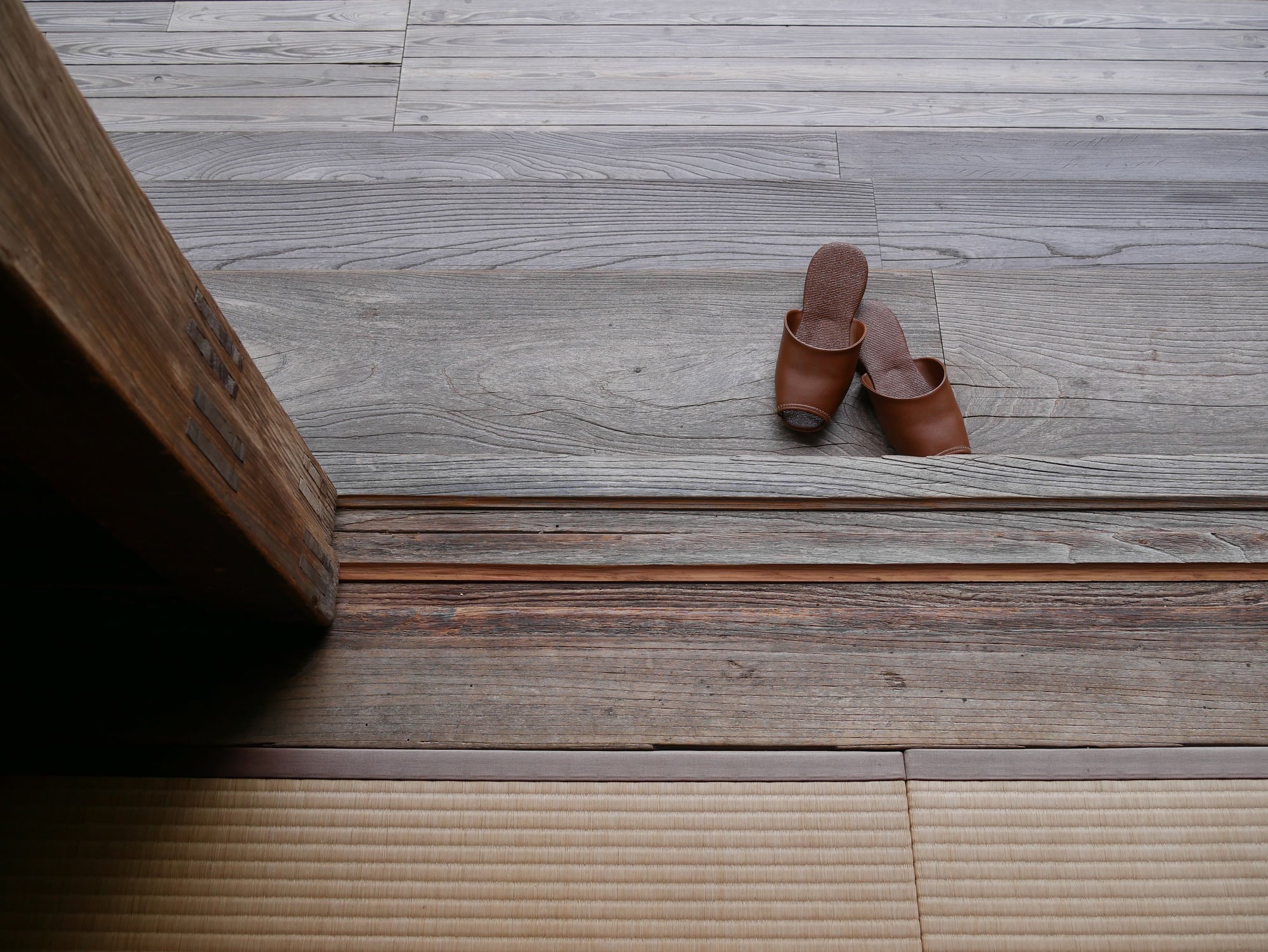
Sometimes the shoe or no shoe etiquette can be tricky, especially when you're new to Japan. There's one that never fails though: no shoes or slippers allowed on tatami mats.
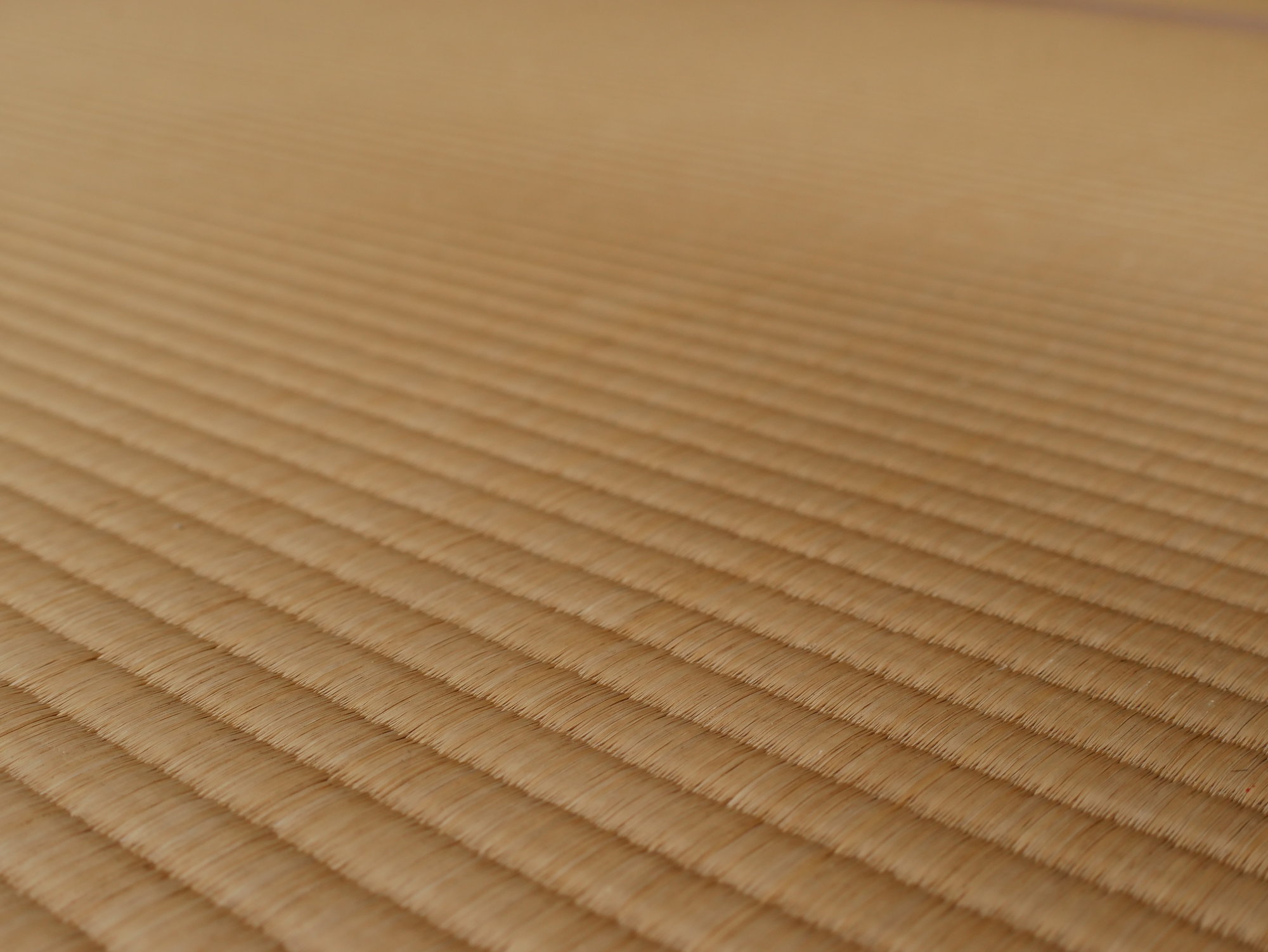
There was a mausoleum for the Matsudaira, but I wasn't sure which Matsudaira. There's definitely a famous Matsudaira clan, the Yūki-Matsudaira ruled this area, but there wasn't much information about them around Eiheiji. I'll have to do deeper research to figure out whose grave that is. We aren't allowed to access it, just looking at it from below.

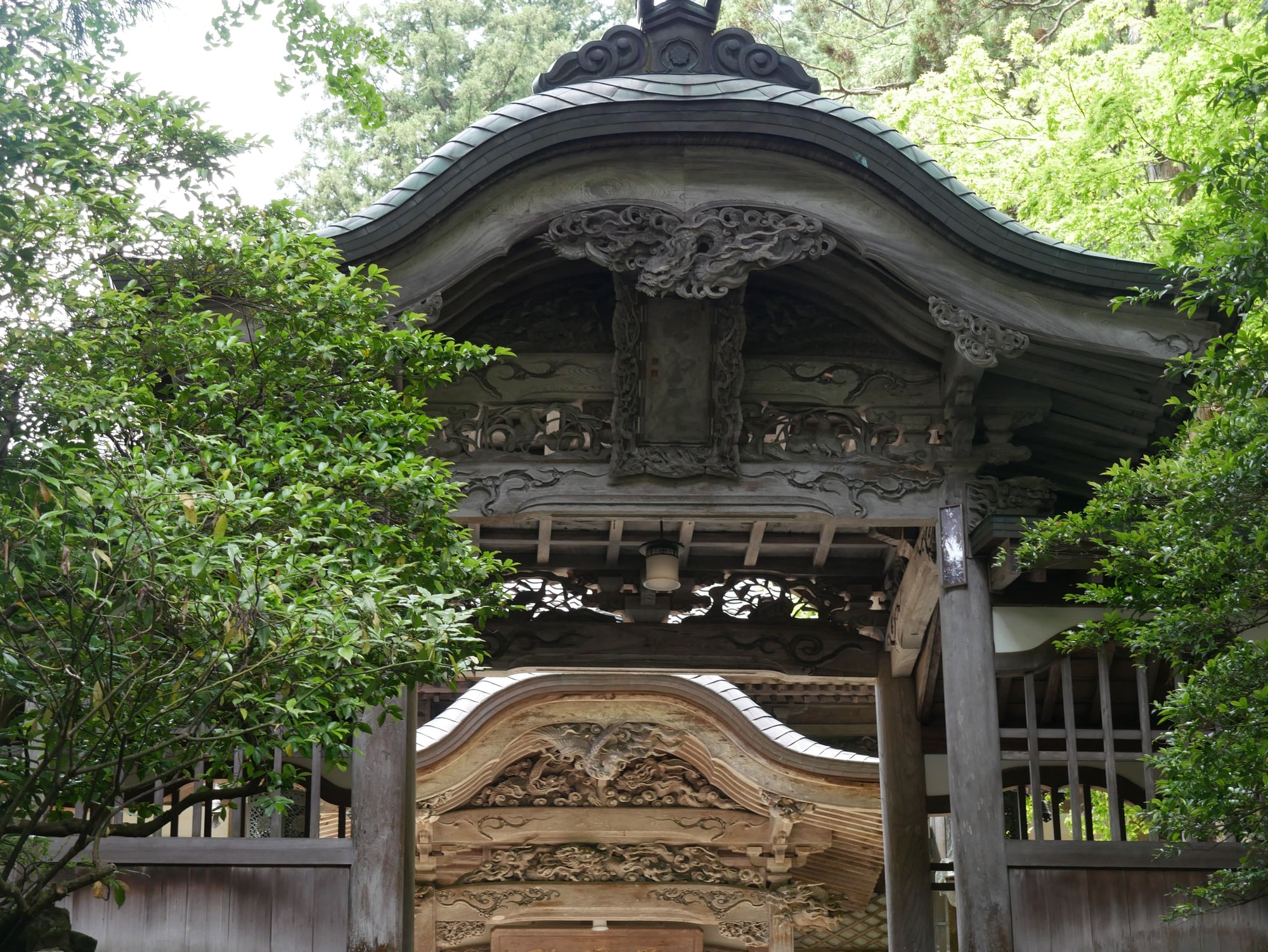
Amazing woodwork everywhere.

Another example of nio statues. I call these the "Chinese style" (like some in Nikko) since they don't look very Japanese, but I'm not sure what influences they've had. Maybe they're just old-school inspired, from the Asuka or Nara periods.

Lots of moss on the outskirts of the buildings.
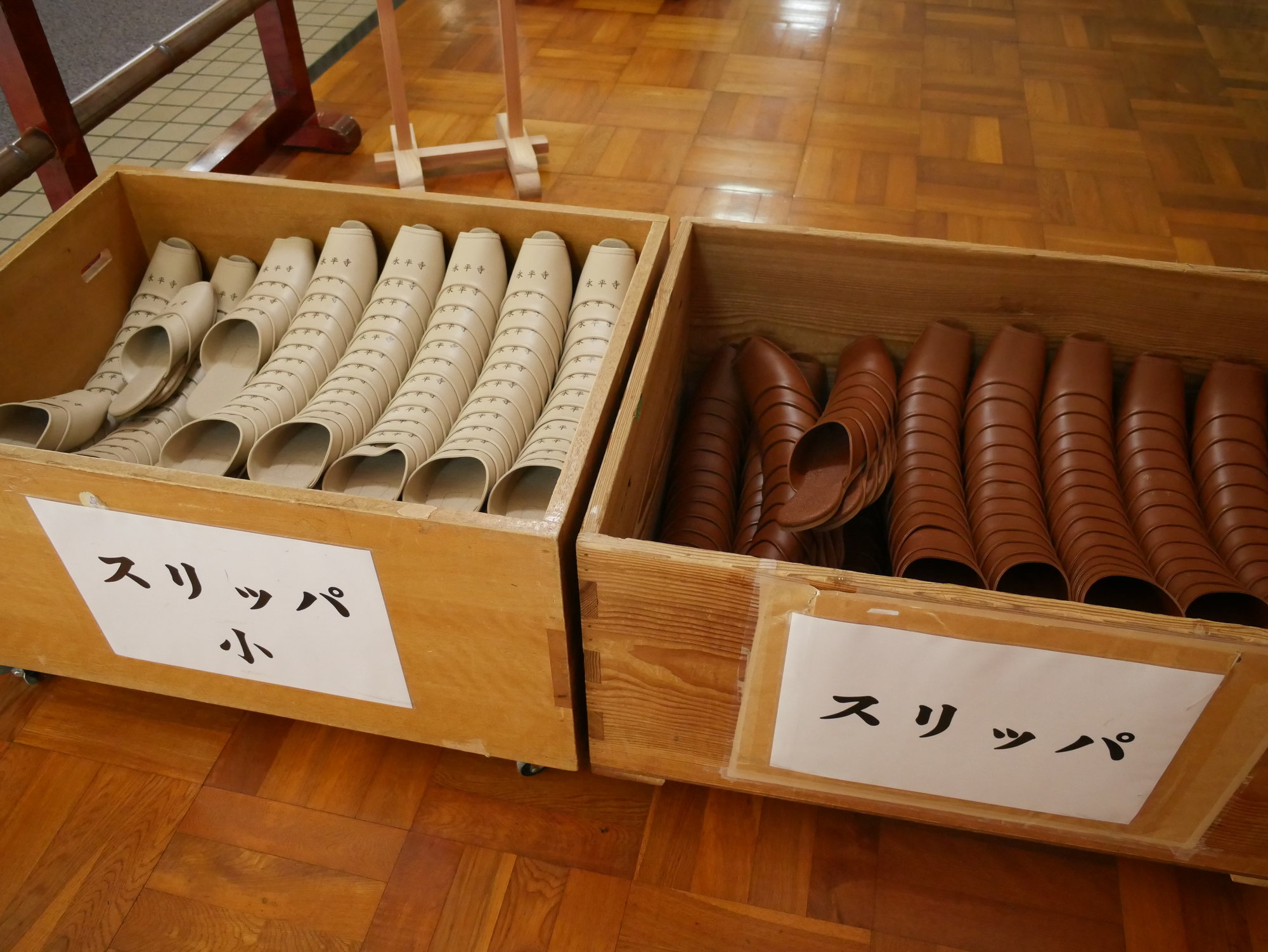
I returned my slippers to their box at the end of my visit. There was still time before the next bus, so I went along the path a little and up the hill to see what was around the corner.
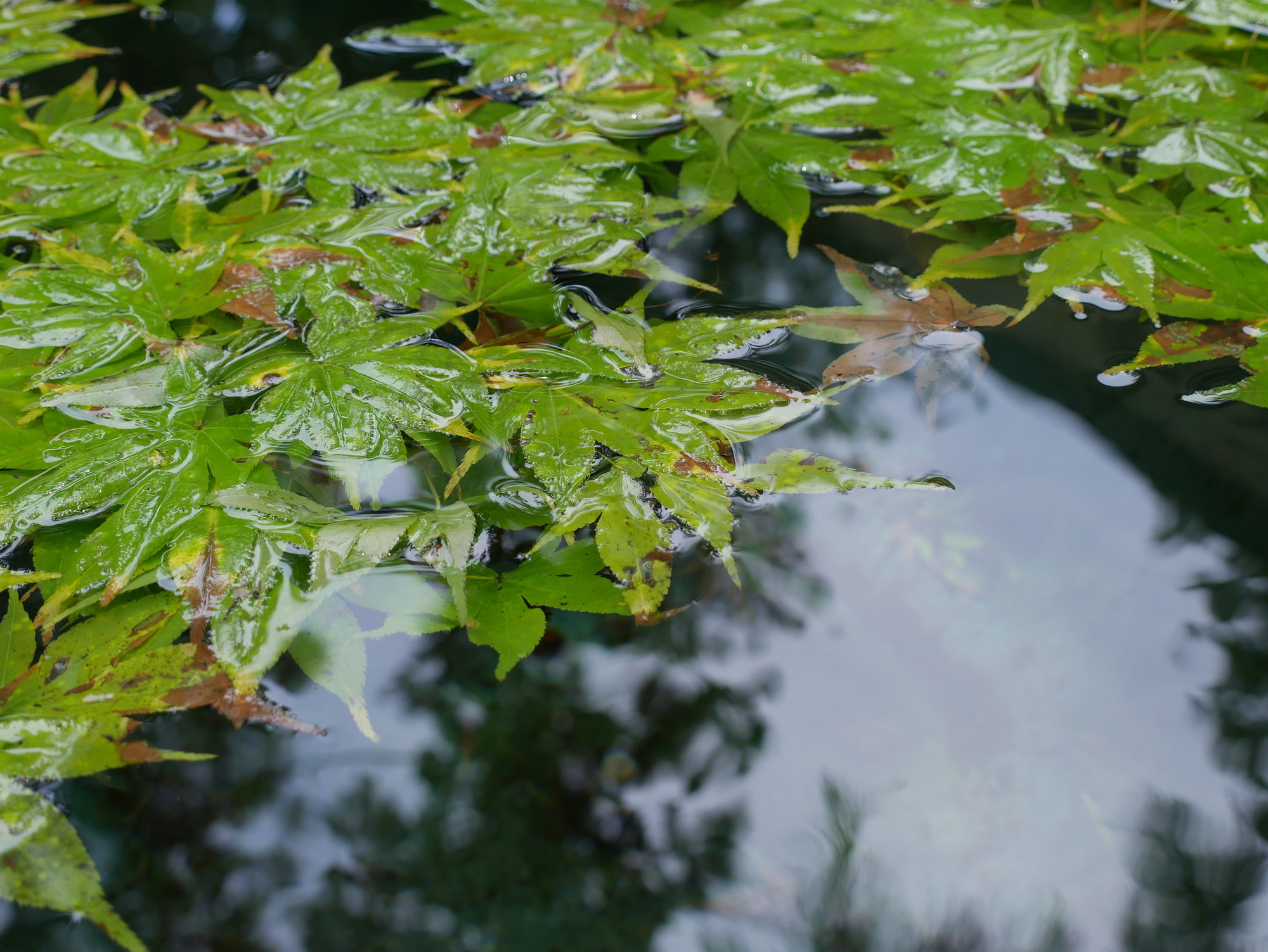
More greenery. And a cemetery. I guess I do spend my days visiting cemeteries...


These rounded tomb stones belong to previous head monks of the temple. You'll find them in many temple cemeteries. Not usually stacked on top like this though!
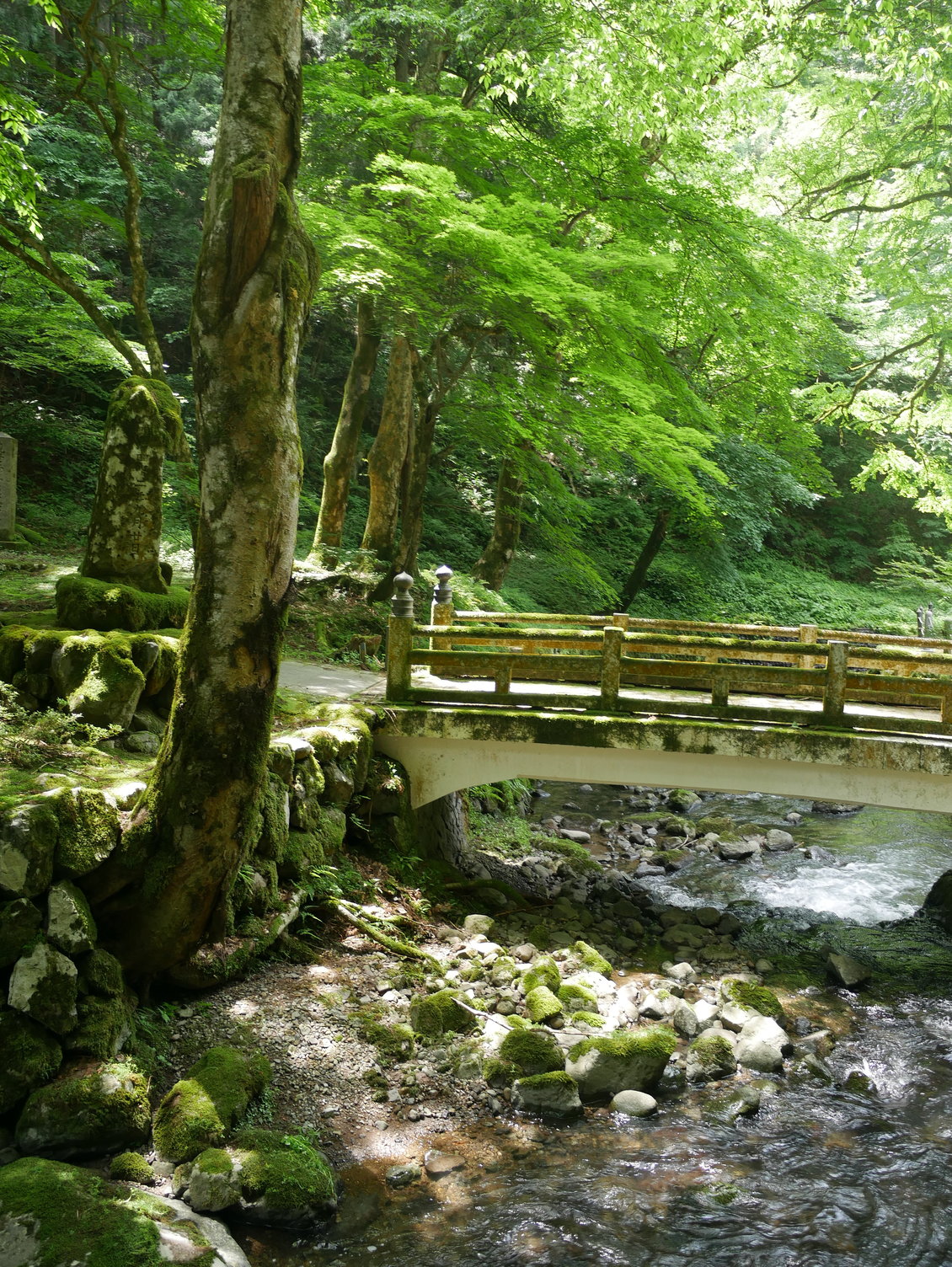
Eiheiji is a beautiful spot to spend a few hours walking in nature.
The specialty of Eiheiji is tofu and these mochi pictured below. I bought one of both, ate the tofu while waiting for the bus and bought the mochi back to Spain. It's very difficult to get my family to eat mochi, or really any sort of Japanese food, but everyone devoured this one. I would've bought an extra box for myself had I known it would disappear so quickly!
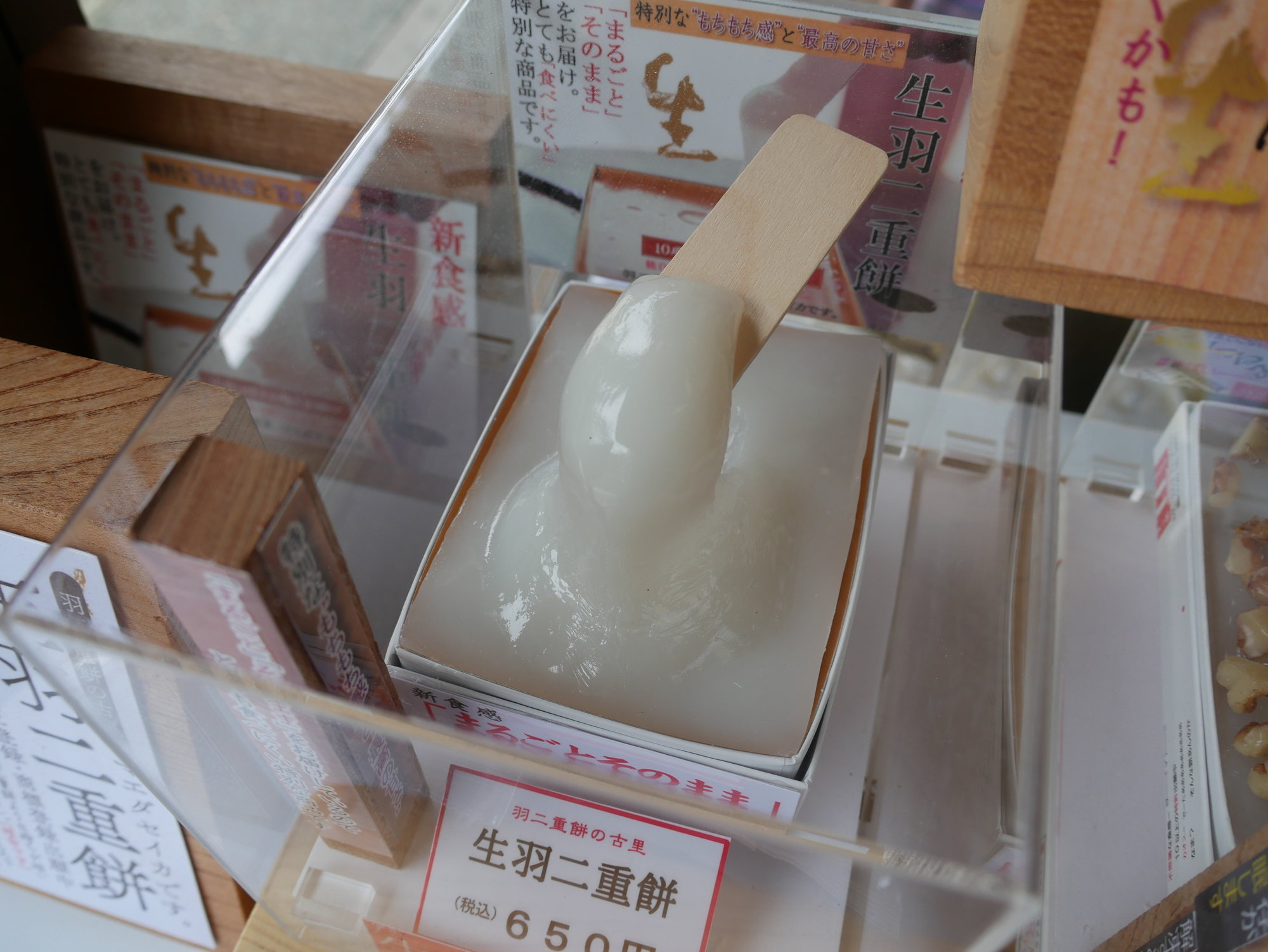
I did have time to catch the bus to Maruoka. I'll cover that in the next post!
I arrived to Komatsu... not quite refreshed, I don't think anyone who's just spent a night sleeping on a long distance bus can say that, but in decent enough shape for a new round of sightseeing. When travelling to Japan, I'm the embodiment of the phrase "I'll sleep when I'm dead". No time to waste!

I had about half an hour to find some breakfast and the right platform, and then I was on a train to Awara onsen. I had no plans to visit the onsen, but there are buses departing from Awara to many of Fukui prefecture's main sites like Eiheiji, Maruoka and Tojinbo cliffs. The goal of the day was to see Eiheiji temple, and maybe stop at Maruoka castle if time on the way back.
I put my bag in a locker at Awara station and found the bus stop just as the bus was arriving. There are only 3 return buses per day to/from Eiheiji and Maruoka to Awara (there is an additional express bus between Fukui city and Eiheiji, if I remember correctly) so I couldn't miss this bus.

Secret stairs going up to secret rooms in the gate...
The ride went smoothly, though not quickly. It was over an hour drive, first through Maruoka --I tried to glimpse the castle from the window just in case I couldn't stop to see it later on-- then through rice fields, solar panels on stilts in the rice fields, more fields, picking up some Japanese tourists at Eiheiji-guchi train station and then up the slope and into the mountains.
We were the first bus of the day to reach Eiheiji, but some people who drive cars were already there. Still, it was surprisingly calm and quiet. Most shops were closed. This is a major tourist destination, but I guess not many people go out to Fukui on a weekday.

There are a handful of small shrines outside the paid area.
Eiheiji is a huge and very important temple, one of the two head temples of the Soto Zen sect of Buddhism and containing the ashes of Dogen (scholar who brought Soto Zen to Japan from China back in the 1200s). Most temples are fairly relaxed, even familial nowadays, but Eiheiji is the strictest temple I've been to. I was a little intimidated reading the rules for the overnight temple stay (I was not able to do that in the end), but as a visitor all you have to do is stick to the marked path, stay out of the way of any monks and you'll be fine.

After paying the entry fee, the sign points to the entry hall. It's a modern building, not part of the old temple, but they have the practical things (check-in for staying guests, bathrooms, a mini museum, etc.).
The visit to Eiheiji started with taking my shoes off and putting them in a plastic bag to carry with me. I have big European feet and the Japanese slippers never fit me, so sometimes I skip the slippers altogether, but I tried my best this time. I jammed half my foot into the men's Cinderella slippers and started my tour. There are a few steps and wooden corridors, passing by the dormitories of guests, the Sansong Pavilion -- a big tatami room with lacquered ceilings and a large Mt.Fuji painted roll at the tokonoma -- then the hallway opens up straight onto the Sanmon gate.

This is where the greenery begins. I just stood there, looking at the gorgeous temple around me. It's a breathtaking place. The wood with the bursts of trees and moss, the ocean of browns. The temple is unassuming in its simplicity, yet so complex that you just don't know where to look, what to focus on when everything is worth looking at.

For the next almost two hours I walked up and down wooden hallways, taking the steps one at a time. Staring at tiles and rocks and leaves. Sat on benches and listened to the sounds around me.

I said watch out for the monks before because they move from hall to halls for prayers (Eiheiji is an active monastery). There are at least twenty of them and they power-walk through the halls like they're on a mission. I almost got run over by all twenty of them, but managed to plaster myself against a wall just in time.

If you aren't getting trampled, it's nice to hear their chanting.

Senjafuda are these slips of paper / stickers. You'll see them in many shrines and temples in Japan, though they aren't allowed on all buildings since the glue destroys the wood. They basically have the name of the visitor and they're placed in an "I was here!" sort of way.

I always love the roof tiles.

I was playing around with my camera settings during my trip, so you'll have to suffer through some of these style photos. I'll keep them to a minimum, I promise. I always loved the faux-diorama effect so I went a bit wild once I discovered how to do it. I'll stop taking them once it's out of my system...

Sometimes the shoe or no shoe etiquette can be tricky, especially when you're new to Japan. There's one that never fails though: no shoes or slippers allowed on tatami mats.

There was a mausoleum for the Matsudaira, but I wasn't sure which Matsudaira. There's definitely a famous Matsudaira clan, the Yūki-Matsudaira ruled this area, but there wasn't much information about them around Eiheiji. I'll have to do deeper research to figure out whose grave that is. We aren't allowed to access it, just looking at it from below.


Amazing woodwork everywhere.

Another example of nio statues. I call these the "Chinese style" (like some in Nikko) since they don't look very Japanese, but I'm not sure what influences they've had. Maybe they're just old-school inspired, from the Asuka or Nara periods.

Lots of moss on the outskirts of the buildings.

I returned my slippers to their box at the end of my visit. There was still time before the next bus, so I went along the path a little and up the hill to see what was around the corner.

More greenery. And a cemetery. I guess I do spend my days visiting cemeteries...


These rounded tomb stones belong to previous head monks of the temple. You'll find them in many temple cemeteries. Not usually stacked on top like this though!

Eiheiji is a beautiful spot to spend a few hours walking in nature.
The specialty of Eiheiji is tofu and these mochi pictured below. I bought one of both, ate the tofu while waiting for the bus and bought the mochi back to Spain. It's very difficult to get my family to eat mochi, or really any sort of Japanese food, but everyone devoured this one. I would've bought an extra box for myself had I known it would disappear so quickly!


I did have time to catch the bus to Maruoka. I'll cover that in the next post!
#7
Original Poster
Join Date: Feb 2016
Posts: 113
Likes: 0
Received 0 Likes
on
0 Posts
Here's a map of the area, by the way:

I arrived to Komatsu (purple) took the train to Awara, bus through Maruoka to Eiheiji and back through Maruoka, then to Fukui to sleep. On another day I took the bus from Kaga to Yamanaka. Kanazawa is just out of the map a little further north.

I arrived to Komatsu (purple) took the train to Awara, bus through Maruoka to Eiheiji and back through Maruoka, then to Fukui to sleep. On another day I took the bus from Kaga to Yamanaka. Kanazawa is just out of the map a little further north.
#9
Join Date: Oct 2012
Posts: 1,291
Likes: 0
Received 0 Likes
on
0 Posts
I used to work at a theatre company in Washington, DC that did a staging of Kwaidan (means 'weird tales') as ambulatory theatre. The audience is divided into groups and moves around from scene to scene. Very spooky, so the cemetery you visited is an appropriate place to meet up with Hearn. The idea was that ghostly interactions in an unreal world could lead to a spiritual awakening. Photo:
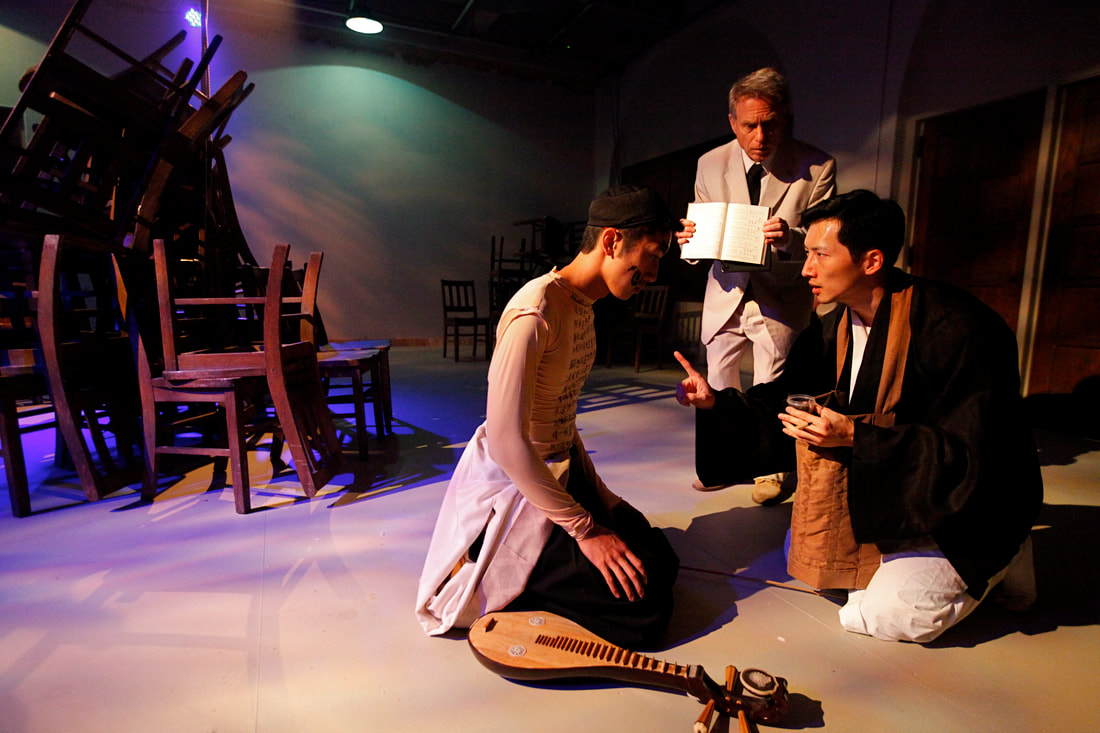
Scene from Kwaidan at Spooky Action Theatre Company.

Scene from Kwaidan at Spooky Action Theatre Company.
Last edited by shelemm; Sep 24th, 2023 at 05:13 PM.
#10
Original Poster
Join Date: Feb 2016
Posts: 113
Likes: 0
Received 0 Likes
on
0 Posts
Mara That was also me! You have such good memory, I don't remember all the reports I've read  That Hiroshima report was my second trip to Japan, I was 20 at the time. I don't think my dad has ever posted anything.
That Hiroshima report was my second trip to Japan, I was 20 at the time. I don't think my dad has ever posted anything.
shelemm That looks fun! I've never been to an interactive theatre before. It looks like a modern rendition of the folktales from the book.
 That Hiroshima report was my second trip to Japan, I was 20 at the time. I don't think my dad has ever posted anything.
That Hiroshima report was my second trip to Japan, I was 20 at the time. I don't think my dad has ever posted anything.shelemm That looks fun! I've never been to an interactive theatre before. It looks like a modern rendition of the folktales from the book.
#12
Original Poster
Join Date: Feb 2016
Posts: 113
Likes: 0
Received 0 Likes
on
0 Posts
From Eiheiji, I took the bus back direction Awara onsen passing through Maruoka and got off at Maruoka castle. Maruoka castle isn't very big, but it's one of only twelve original castle keeps that have stood the test of time. The rest have been burnt during battles, bombed in WWII, dismantled (many during the Meiji period) or otherwise destroyed. Maruoka castle claims to be the oldest surviving castle tower in Japan, though the claim is disputed by Inuyama or Matsumoto castles.
Either way, it's one of the "Twelve Main Keeps" so worth a visit for castle enthusiasts.

When I arrived it was afternoon, the sun was warm and cicadas singing, green trees with a little wind. Perfect day for sightseeing, but no other visitors were there. The man at the counter sold me a combination ticket with the small history museum next door, and then also left, so I had the castle well and truly to myself!
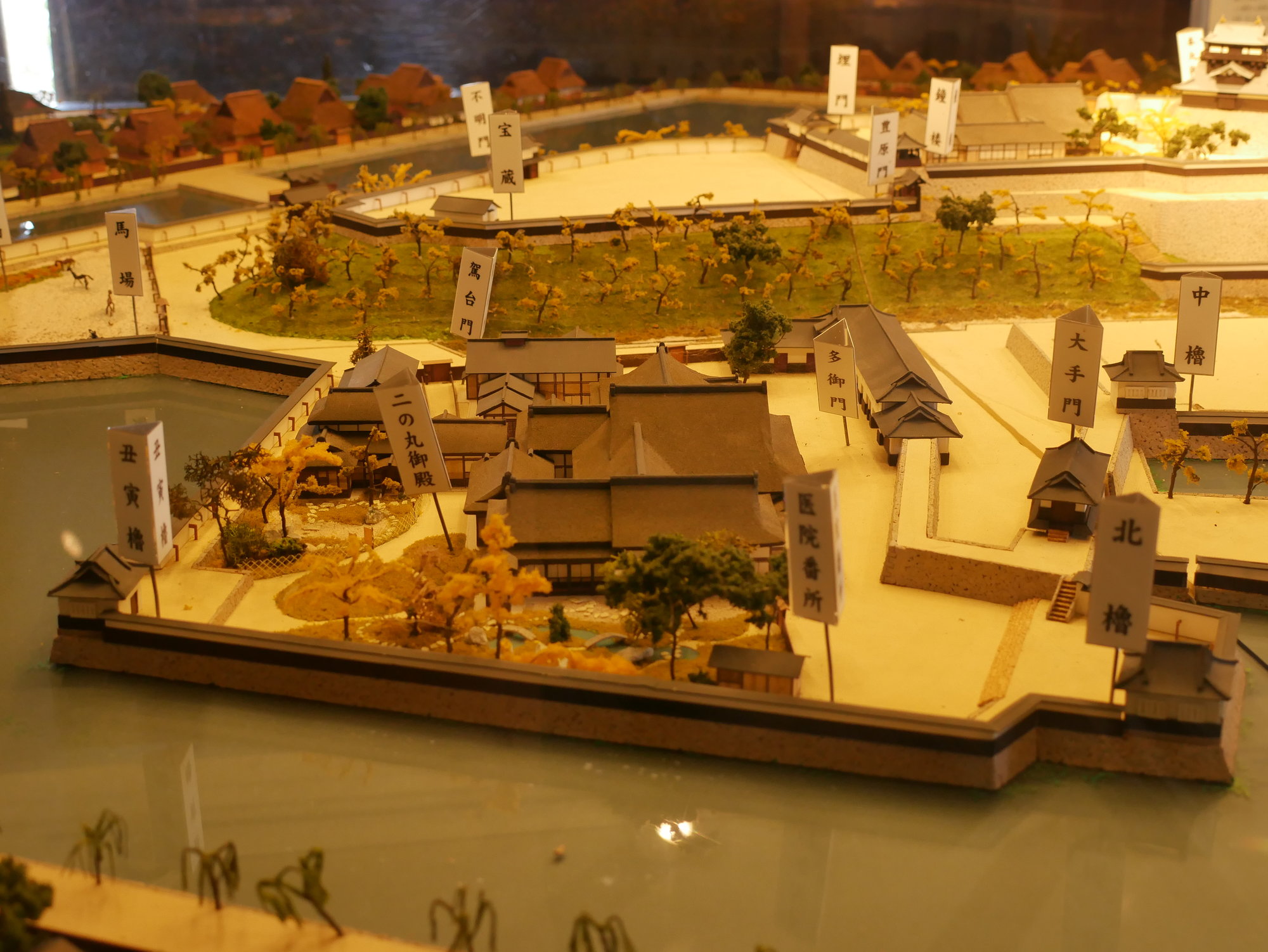
There are two legends surrounding Maruoka castle. The first is that a thick mist appears and hides the castle from view whenever an enemy approaches, earning the castle the nickname of "mist castle". The second legend is that, during construction, the stone base kept collapsing and so someone suggested a human sacrifice to appease the gods. This was a practice known as hitobashira and was done for construction projects often involving water (ex.bridges), sometimes castles. Though not necessarily common practice it did last until the late sixteenth century.
Oshizu, a woman whose husband had passed away, was living in poverty with her two children and was selected as the human pillar. She accepted on the condition that one of her children would be made a samurai, securing a future for him. After her sacrifice, the construction of the base was successfully completed. However, the promise was never fulfilled, the kid didn't become a samurai, and the resentful spirit of Oshizu began to make the castle moat overflow every year. Eventually a small tomb was built to soothe her spirit.
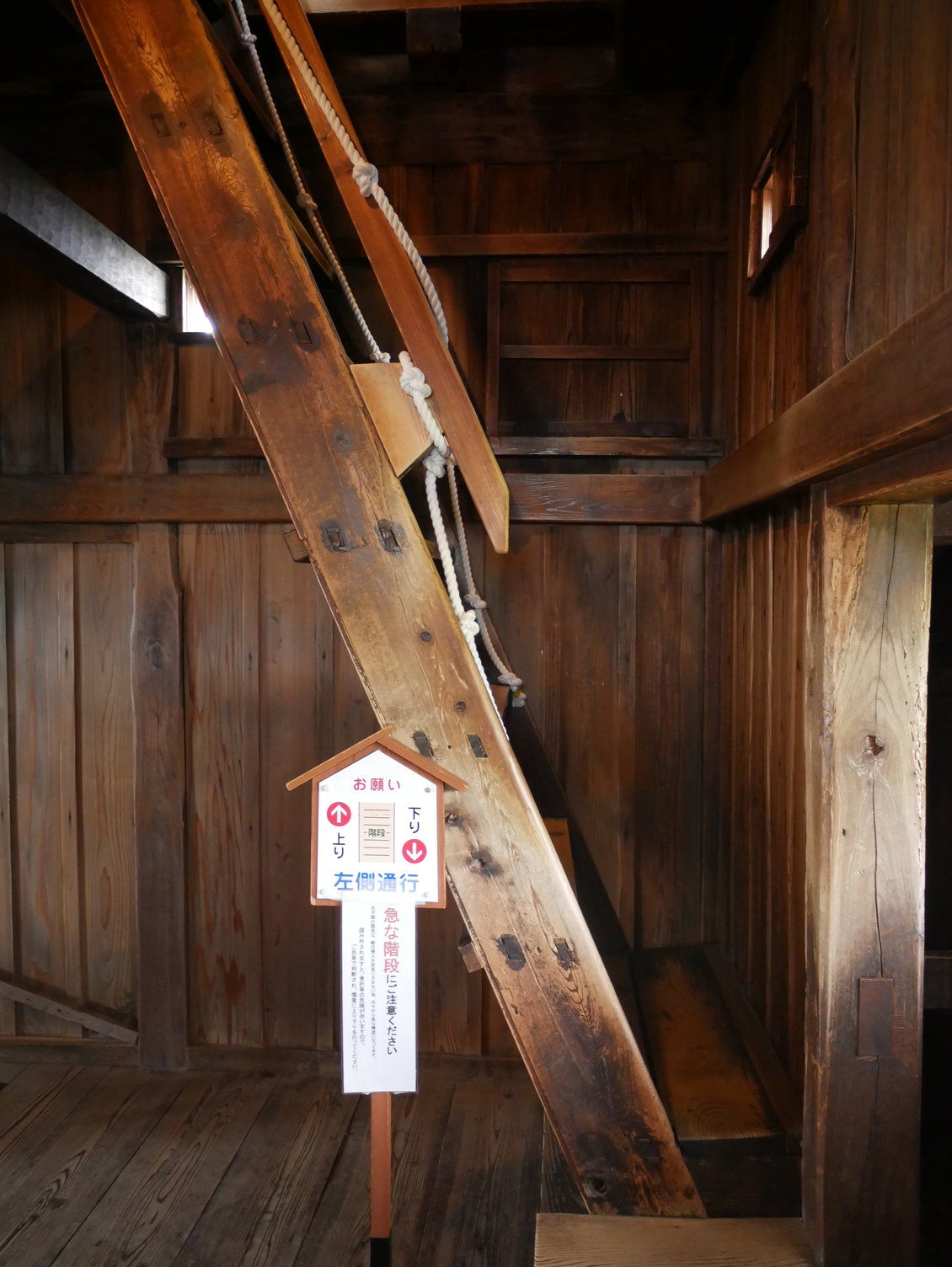
Inside nowadays the castle is small and has kept the bare wooden feel, so really no museum / displays to speak of. I went up to the top to see the views, using the steepest ladder I've ever seen! The stairs at Matsue castle were pretty steep, but I needed a rope to make it up these ones. The problem is that if you're wearing socks, these old wooden floorboards are very slippery, so caution is needed.

Ta-daa
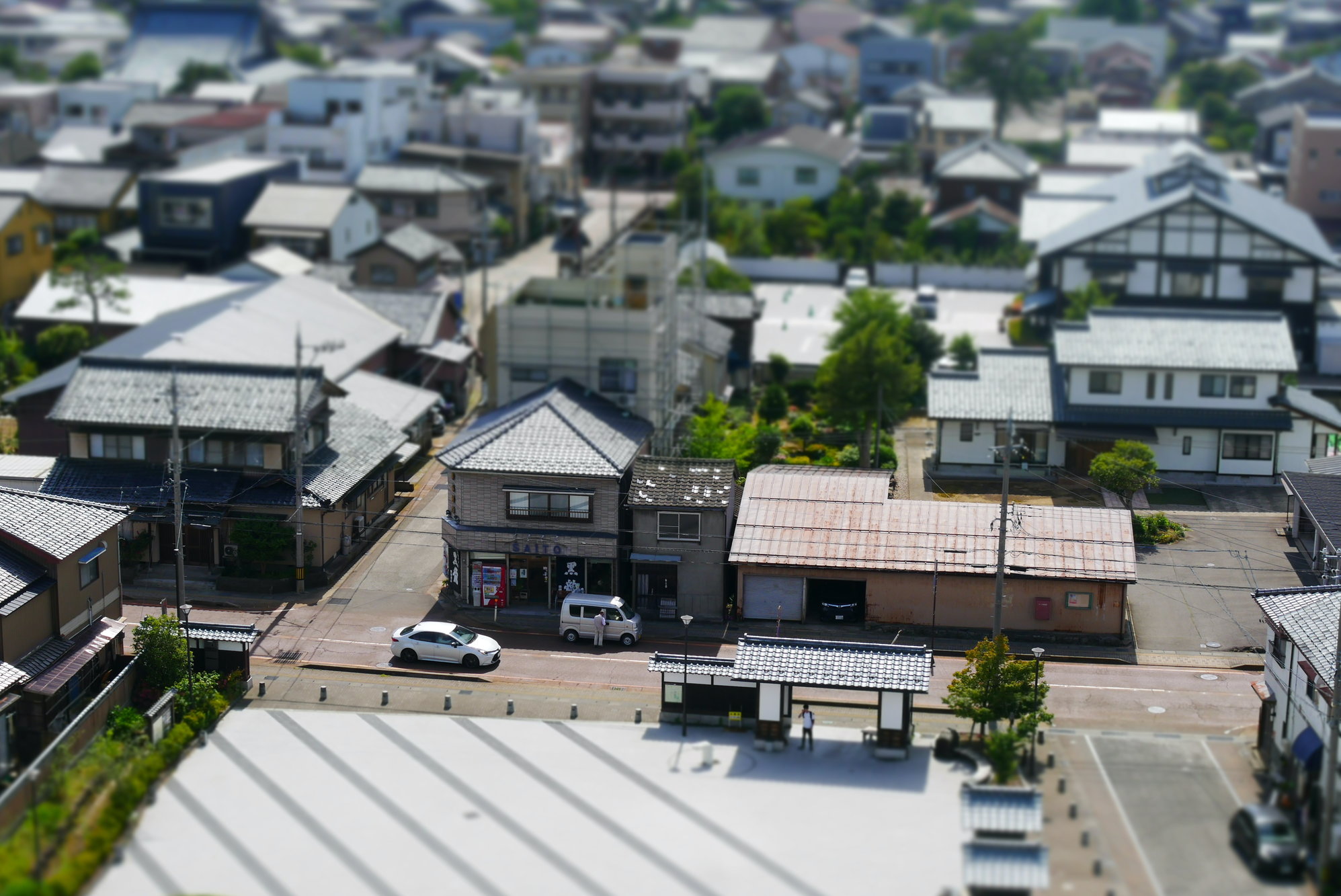
That's what the faux-model camera settings are for.

The castle was built by Shibata Katsutoyo in the 1500s, but he died of illness and the castle was given to the Aoyama clan. That didn't last long either because they were on the losing side of the great Battle of Sekigahara (1600) and dispossessed. Echizen province was given to Tokugawa Ieyasu (shogun)'s son Yuki Hideyasu, but one of the successors, Honda Shigemasu, was an alcoholic and incompetent and also dispossessed in the late 1600s. After that, the Arima clan ruled Maruoka for eighth generations until the Meiji period. There were a couple manga-style cut-outs of warlords, but considering how often the castle changed hands, I wasn't sure who they're supposed to represent.
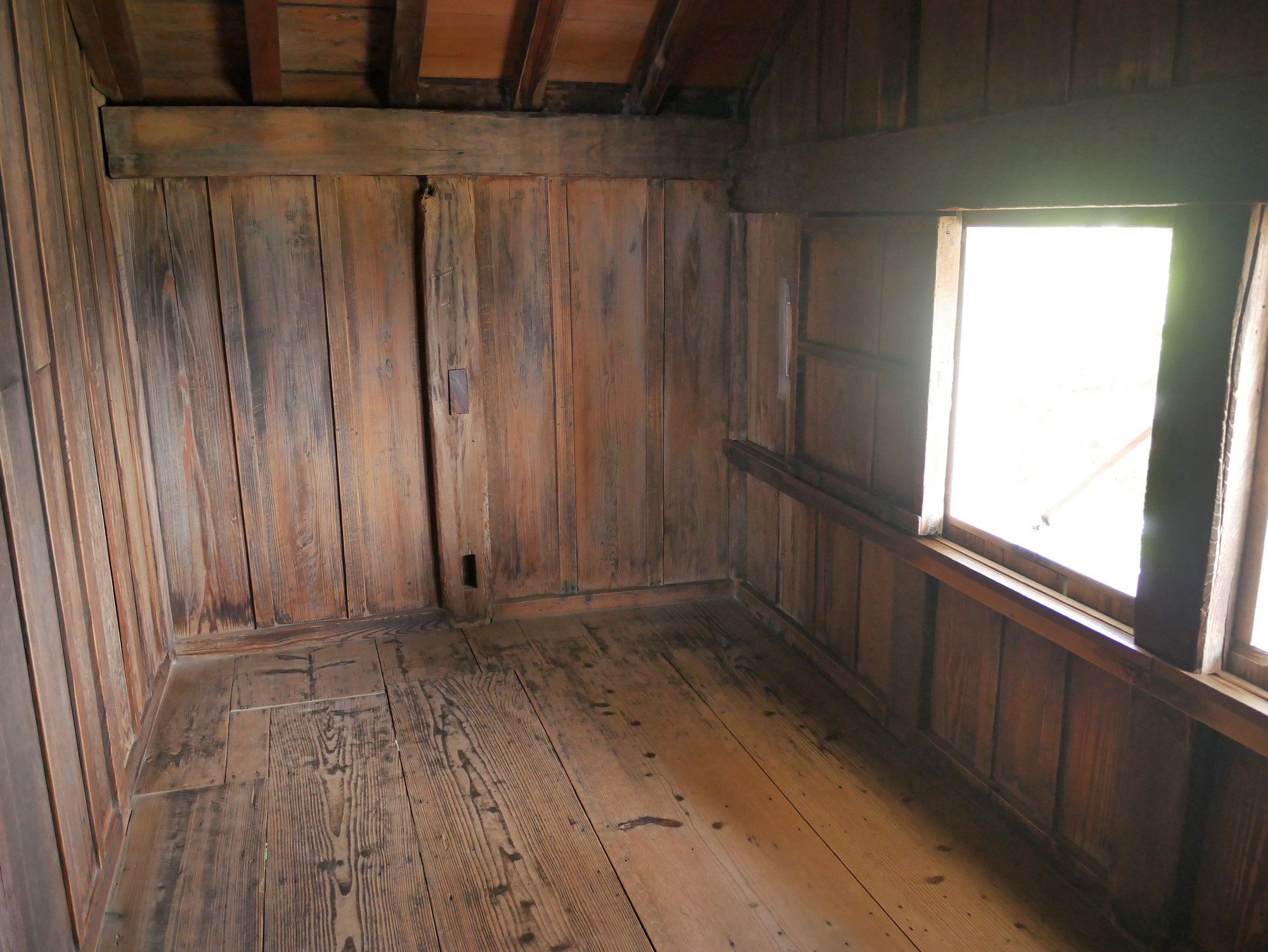
I liked these little rooms off to the side on the second floor. Very cosy. Though not during a siege, I suppose.
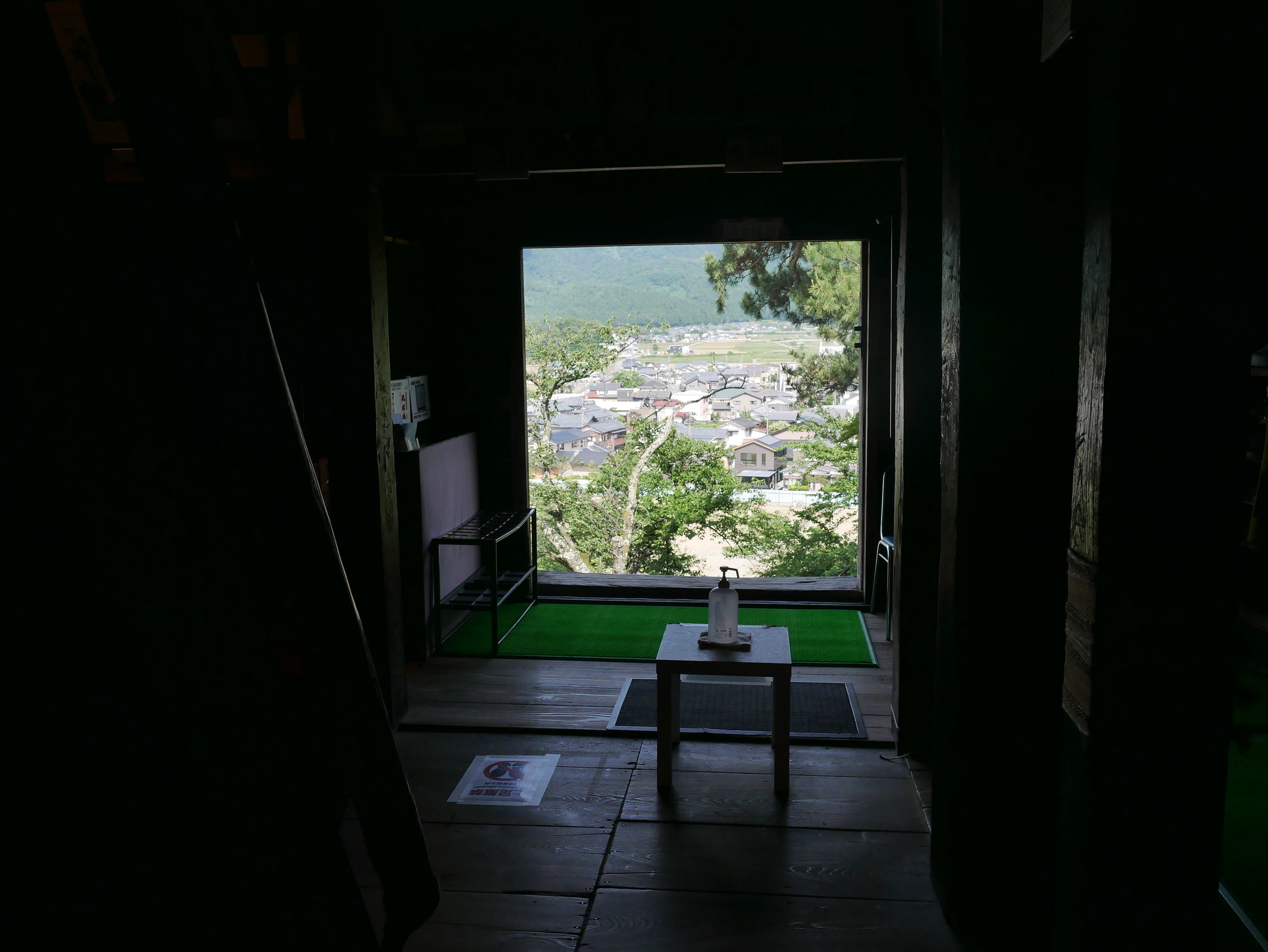
Looking out from the castle entry/exit.

A small group of Japanese tourists arrived as I was leaving. They were on the bus with me that morning, from Awara to Eiheiji, and again on the second bus from Eiheiji to Maruoka. We all laughed when we crossed paths once again on the third bus, back to Awara, and sat to talk. They said they take a trip somewhere around Japan every year, since their kids are adults now, and this time they were spending a handful of days in Yamanaka. They'd also visited Spain when they were younger!
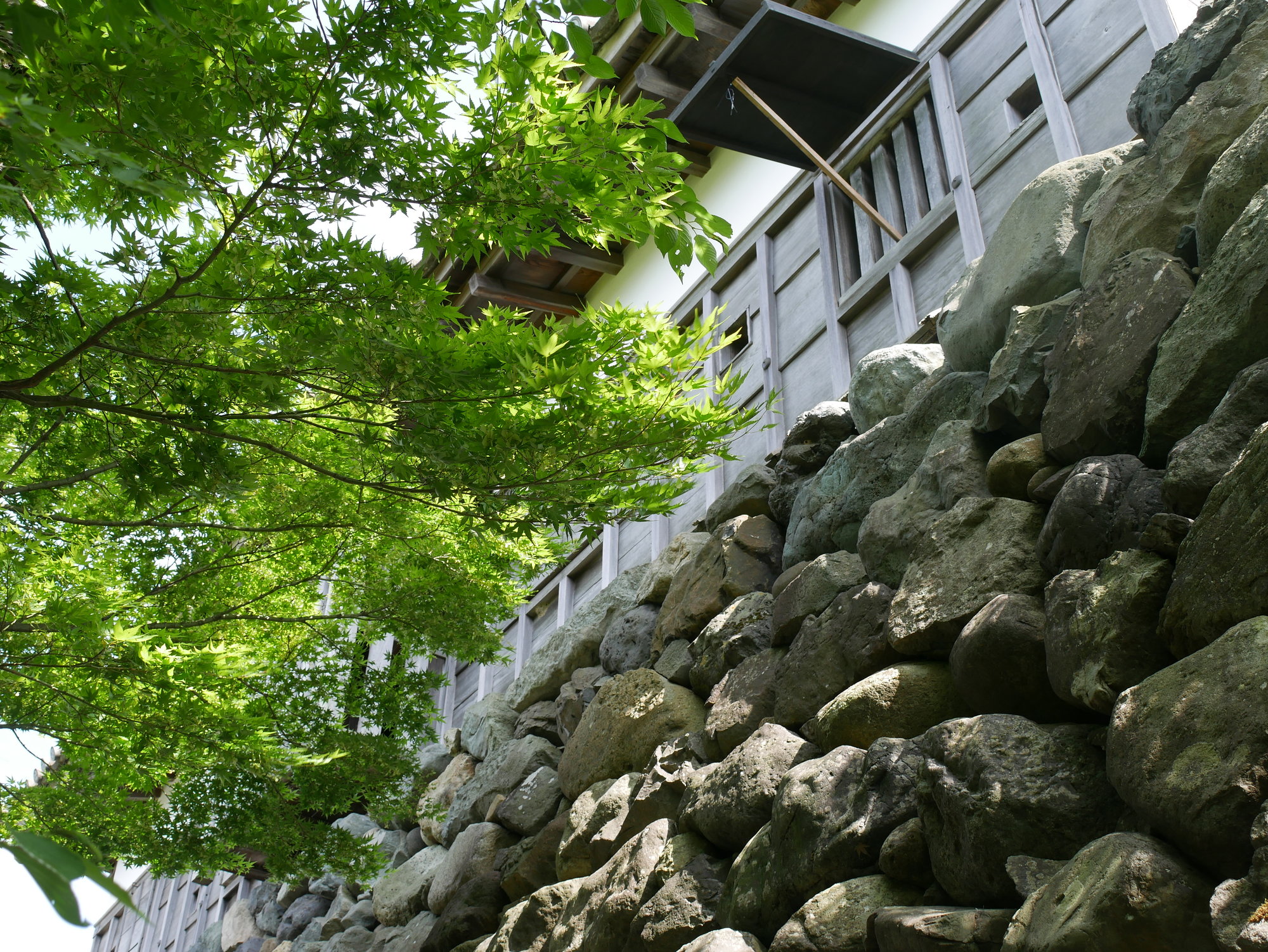
I walked around the castle keep, there's a trail, and down to the sake store I'd seen from the top floor of the castle, and then I headed to the history museum next. There was nothing of much interest. Some photos of a festival, mostly, but nothing in English or that I could read, an armour.
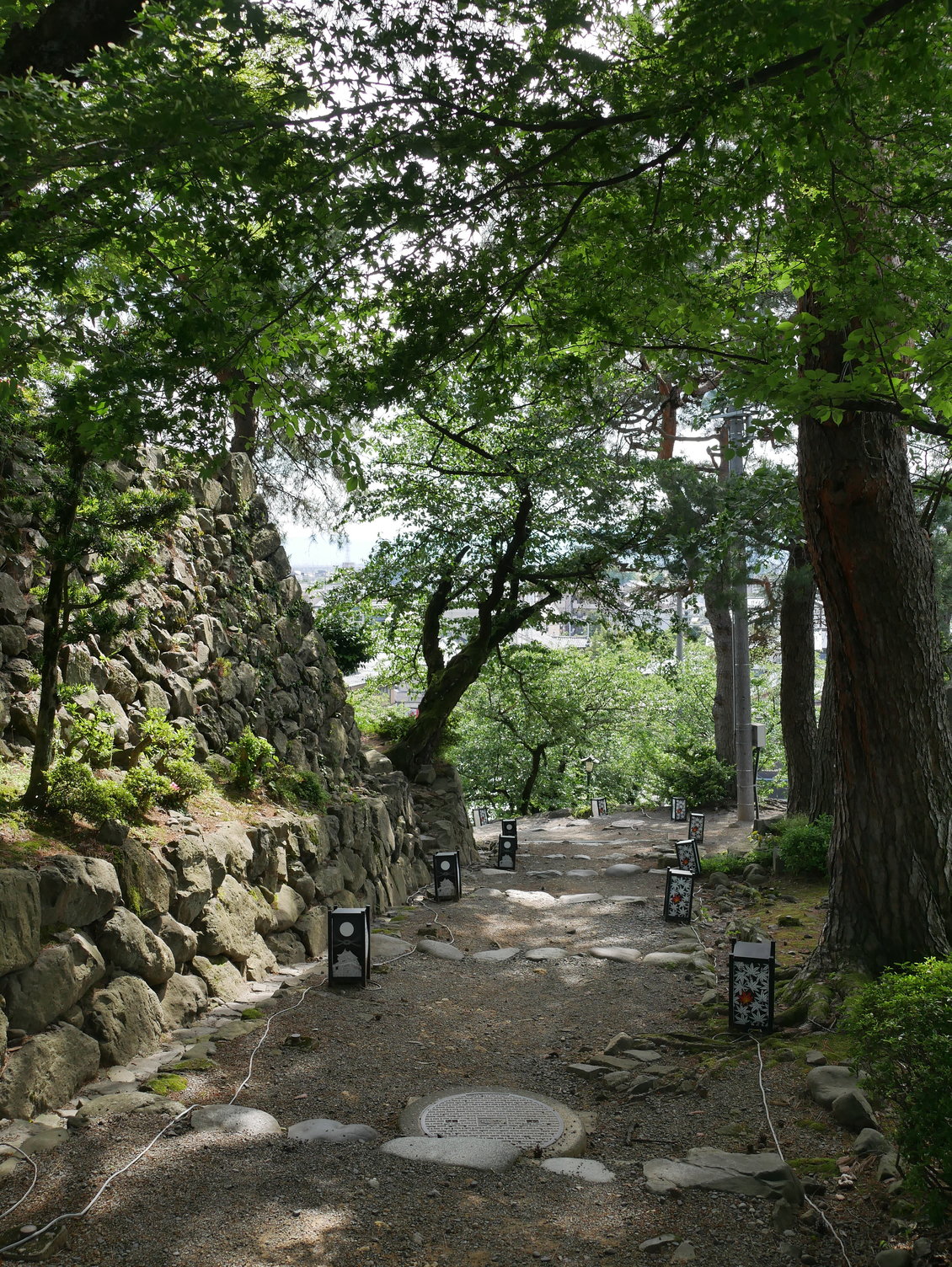
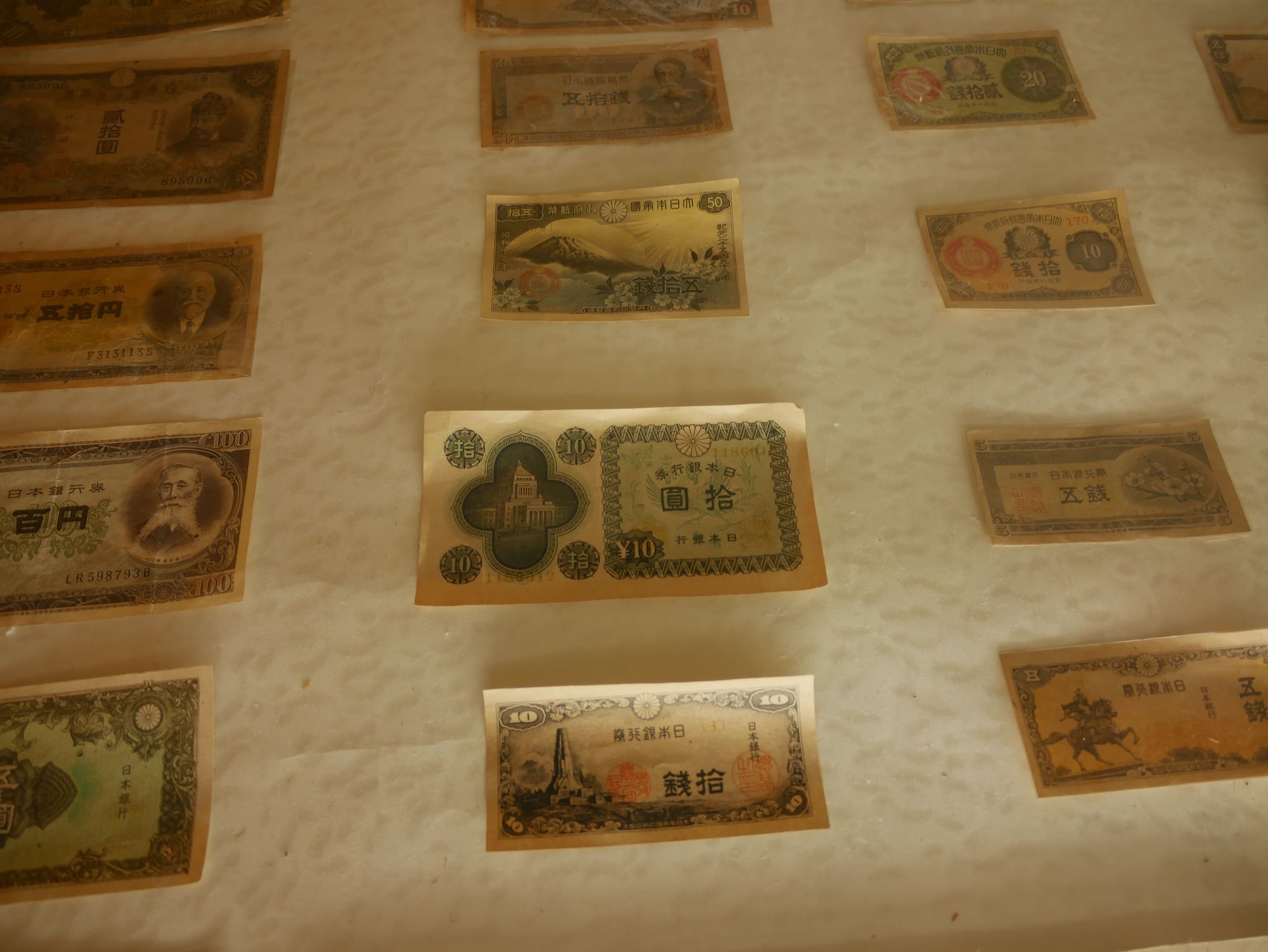
They did have a little money collection. That •10 note was in circulation during the US occupation of Japan after WWII. I met a woman in Gunma once who told me all about the note, the significance of the different drawings and elements, and she sold me one for •100. I've forgotten it all now, but she did say they are technically still allowed to be used, though nobody does.
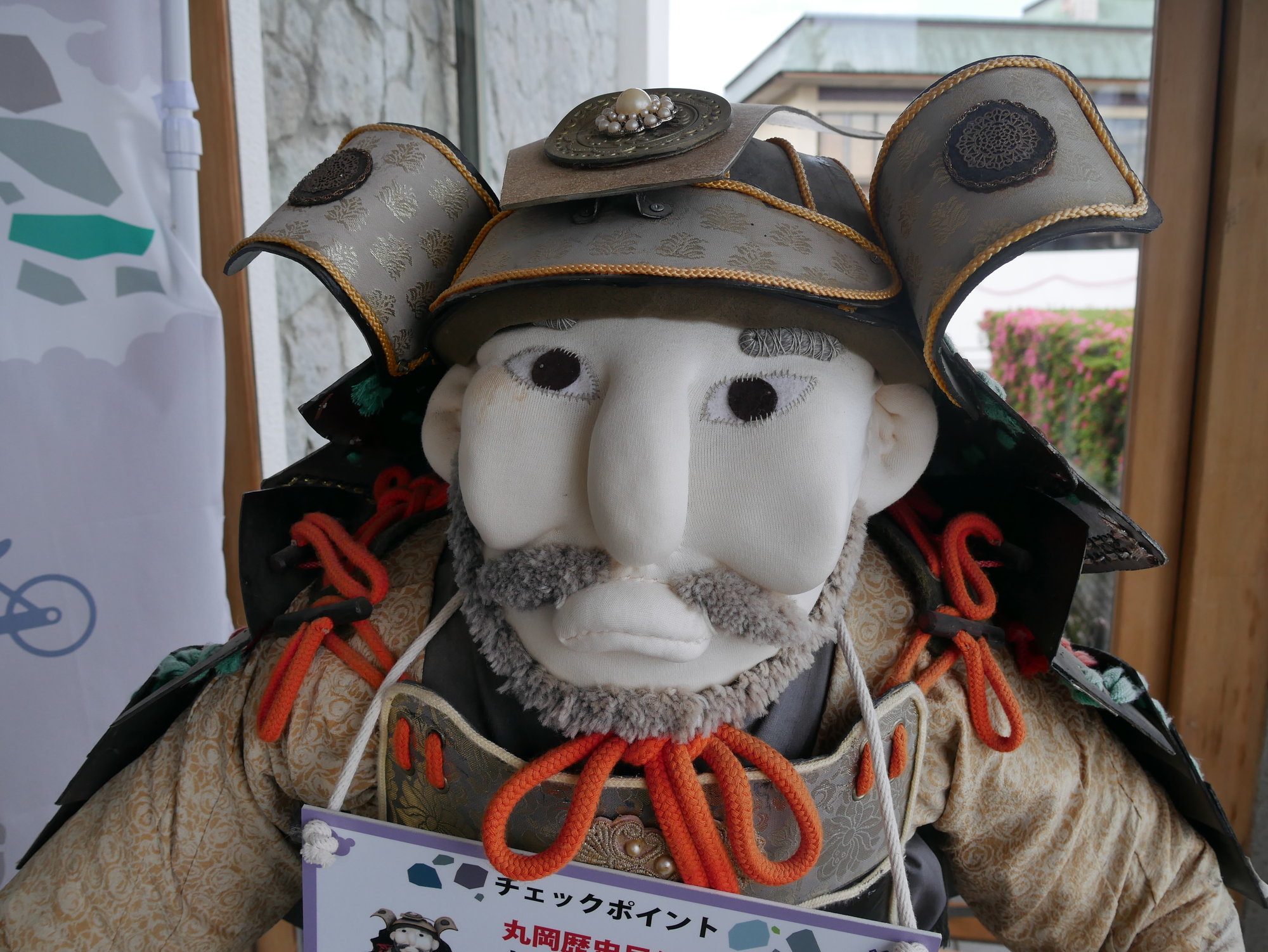
They also had this cute samurai scarecrow at the entry.
With that, I went to the bus stop and was soon on the bus back to Awara, picking up my bag from the locker, and then on a train to Fukui. The hostel I'd found was pretty close to Fukui station and I made it there in no time. A girl checked me in and told me the only other guest had cancelled his stay, so I had the place to myself. Unfortunately, as I soon learnt, there was a typhoon warning which would hit Fukui the following day, so no sightseeing would be possible.
The girl left soon after, making sure I was settled, and left a phone number on the counter in case I needed anything.
And with that, I put on a hanten that was there (a sort of padded winter kimono jacket) and sat down for some cup noodles dinner, resting my legs and waiting for tomorrow!
Either way, it's one of the "Twelve Main Keeps" so worth a visit for castle enthusiasts.

When I arrived it was afternoon, the sun was warm and cicadas singing, green trees with a little wind. Perfect day for sightseeing, but no other visitors were there. The man at the counter sold me a combination ticket with the small history museum next door, and then also left, so I had the castle well and truly to myself!

There are two legends surrounding Maruoka castle. The first is that a thick mist appears and hides the castle from view whenever an enemy approaches, earning the castle the nickname of "mist castle". The second legend is that, during construction, the stone base kept collapsing and so someone suggested a human sacrifice to appease the gods. This was a practice known as hitobashira and was done for construction projects often involving water (ex.bridges), sometimes castles. Though not necessarily common practice it did last until the late sixteenth century.
Oshizu, a woman whose husband had passed away, was living in poverty with her two children and was selected as the human pillar. She accepted on the condition that one of her children would be made a samurai, securing a future for him. After her sacrifice, the construction of the base was successfully completed. However, the promise was never fulfilled, the kid didn't become a samurai, and the resentful spirit of Oshizu began to make the castle moat overflow every year. Eventually a small tomb was built to soothe her spirit.

Inside nowadays the castle is small and has kept the bare wooden feel, so really no museum / displays to speak of. I went up to the top to see the views, using the steepest ladder I've ever seen! The stairs at Matsue castle were pretty steep, but I needed a rope to make it up these ones. The problem is that if you're wearing socks, these old wooden floorboards are very slippery, so caution is needed.

Ta-daa

That's what the faux-model camera settings are for.

The castle was built by Shibata Katsutoyo in the 1500s, but he died of illness and the castle was given to the Aoyama clan. That didn't last long either because they were on the losing side of the great Battle of Sekigahara (1600) and dispossessed. Echizen province was given to Tokugawa Ieyasu (shogun)'s son Yuki Hideyasu, but one of the successors, Honda Shigemasu, was an alcoholic and incompetent and also dispossessed in the late 1600s. After that, the Arima clan ruled Maruoka for eighth generations until the Meiji period. There were a couple manga-style cut-outs of warlords, but considering how often the castle changed hands, I wasn't sure who they're supposed to represent.

I liked these little rooms off to the side on the second floor. Very cosy. Though not during a siege, I suppose.

Looking out from the castle entry/exit.

A small group of Japanese tourists arrived as I was leaving. They were on the bus with me that morning, from Awara to Eiheiji, and again on the second bus from Eiheiji to Maruoka. We all laughed when we crossed paths once again on the third bus, back to Awara, and sat to talk. They said they take a trip somewhere around Japan every year, since their kids are adults now, and this time they were spending a handful of days in Yamanaka. They'd also visited Spain when they were younger!

I walked around the castle keep, there's a trail, and down to the sake store I'd seen from the top floor of the castle, and then I headed to the history museum next. There was nothing of much interest. Some photos of a festival, mostly, but nothing in English or that I could read, an armour.


They did have a little money collection. That •10 note was in circulation during the US occupation of Japan after WWII. I met a woman in Gunma once who told me all about the note, the significance of the different drawings and elements, and she sold me one for •100. I've forgotten it all now, but she did say they are technically still allowed to be used, though nobody does.

They also had this cute samurai scarecrow at the entry.
With that, I went to the bus stop and was soon on the bus back to Awara, picking up my bag from the locker, and then on a train to Fukui. The hostel I'd found was pretty close to Fukui station and I made it there in no time. A girl checked me in and told me the only other guest had cancelled his stay, so I had the place to myself. Unfortunately, as I soon learnt, there was a typhoon warning which would hit Fukui the following day, so no sightseeing would be possible.
The girl left soon after, making sure I was settled, and left a phone number on the counter in case I needed anything.
And with that, I put on a hanten that was there (a sort of padded winter kimono jacket) and sat down for some cup noodles dinner, resting my legs and waiting for tomorrow!
#13
Original Poster
Join Date: Feb 2016
Posts: 113
Likes: 0
Received 0 Likes
on
0 Posts
I'd wanted to go to the Ichijodani ruins on my second day. The ruins have been on my must-see Japan list for years, and I was so excited to finally go there. They were the reason I was in Fukui! I was going to combine the town with a hike up to Ichijodaki Waterfall, where one of my favourite historical figures, Kojiro Sasaki, invented his tsubamegaeshi sword move, and hopefully see some fireflies in the evening.
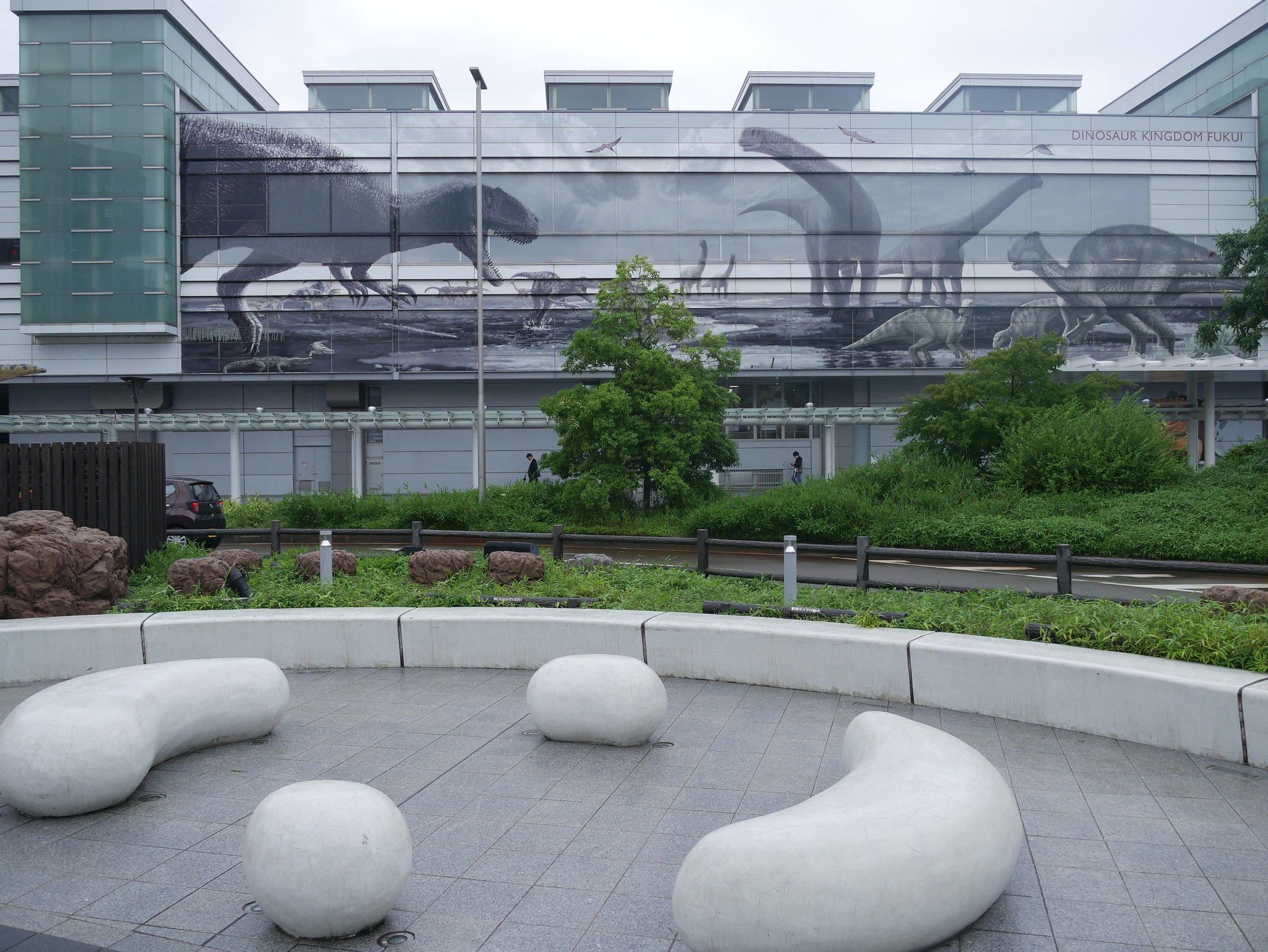
Alas, the weather did not allow. Over the course of the night, typhoon Mawar had been downgraded to just "typhoon rains", so while we were hit with heavy rainfall all day long and hiking / fireflies were out of the question, there were no strong winds. My plans for Ichijodani were cancelled so I slept in and stayed in during the morning, going out for lunch once the rain calmed a little.
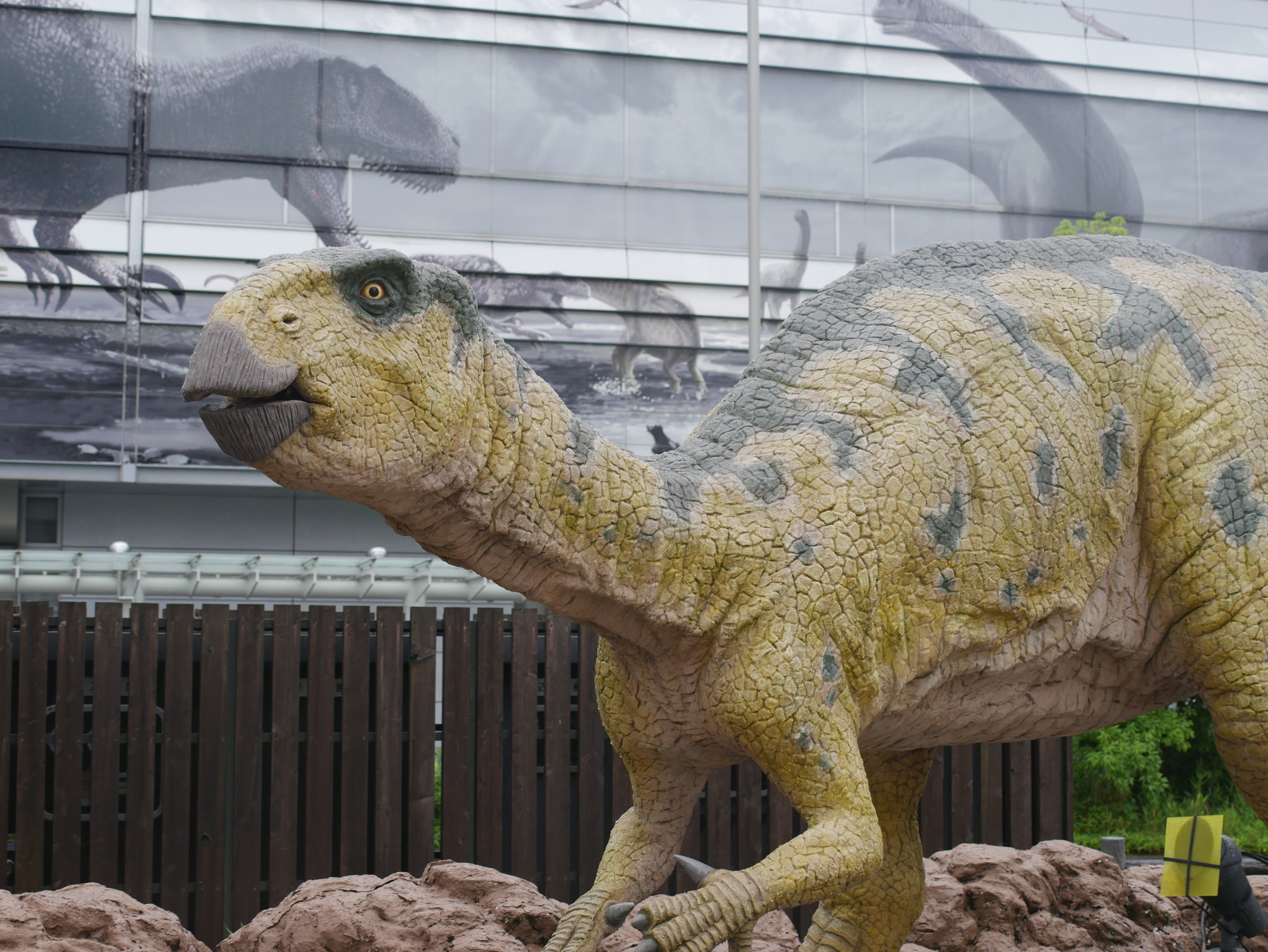
Life-sized Fukuisaurus in front of the station. They move and roar every so often.
Fukui prefecture is known for its dinosaur discoveries, and has one of the best dinosaur museums in all of Asia (closed for renovations when I was there). Around Fukui I saw many dinosaur-themed murals and toys, and the gift shops are full of dinosaur souvenirs. I bought food to cook dinner at the hostel as well, including some Fukui specialties from an indoor market. I wasn't sure which habutae mochi to buy, so I bought a couple different boxes, the "naruto mochi" (spiral) and the "yomogi mochi" (yomogi is mugwort, a somewhat uncommon ingredient and more expensive due to its quality). Yomogi / kusa is often appreciated though, every time I share yomogi mochi with someone they go "ehhh! You bought yomogi?!" like it's a special thing. The owner of the hostel in Fukui came to visit me that evening to make sure I was okay, and she said she'd never tried the green habutae before, was very happy to have a few
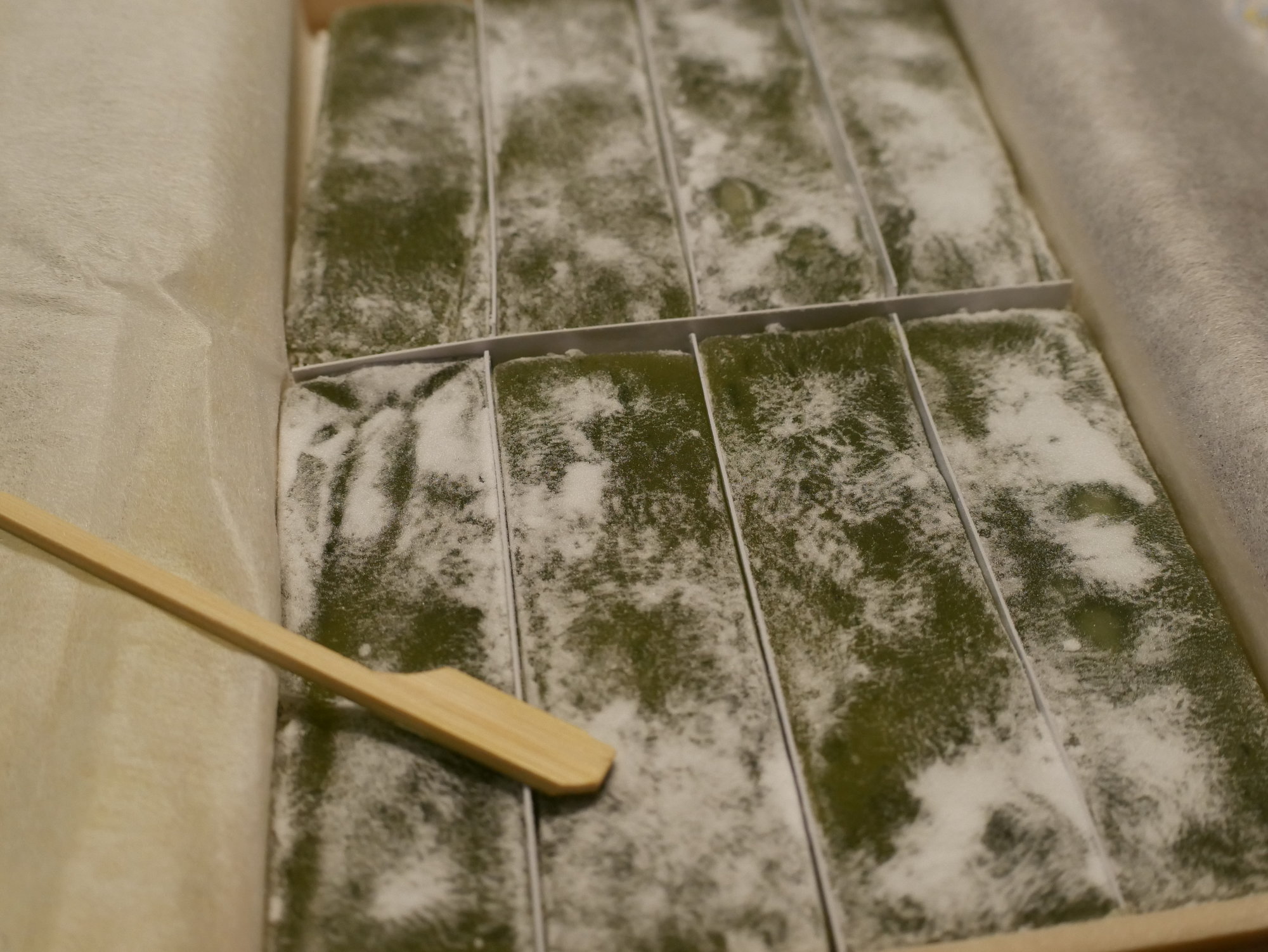
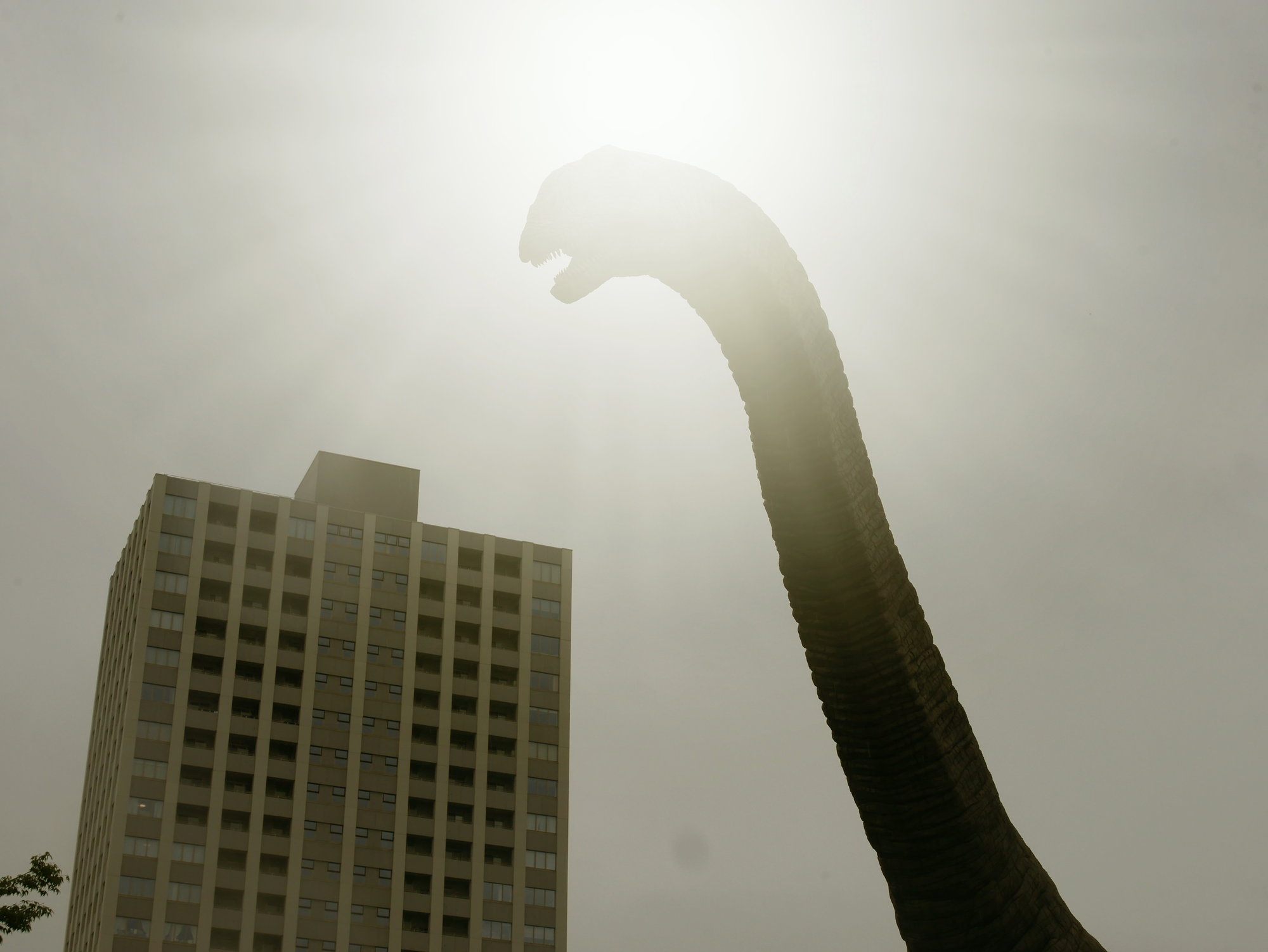
Fukuititan. These are the real names, by the way. Fukuiraptor is also at the station. These species of dinosaurs were discovered in Fukui.
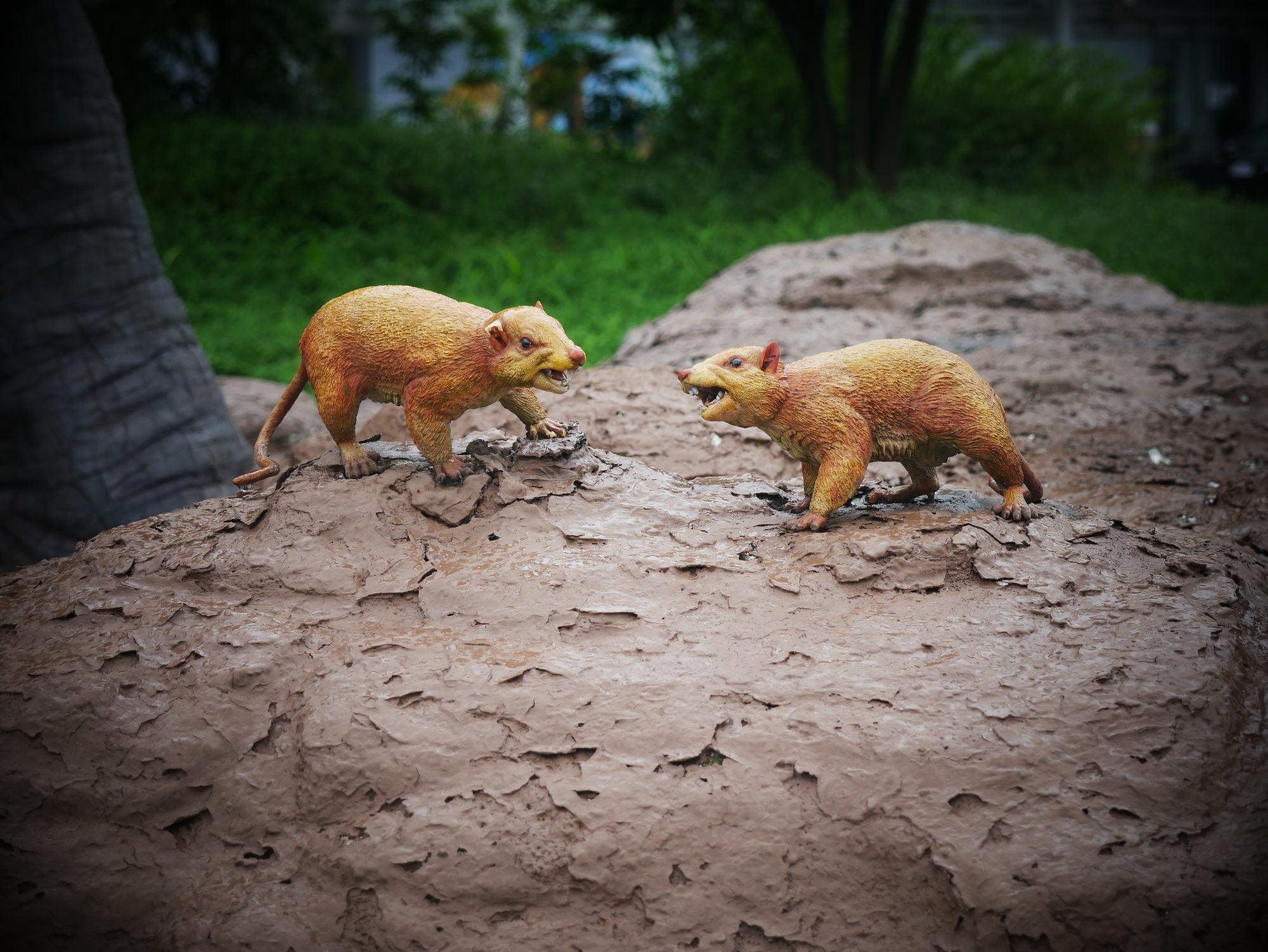
Even the rats were vicious.
I was feeling unmotivated with all the rain, so I didn't take the tram out to the museums in the city. I went to see the castle moat after lunch (I ate at Fukamidori, the only vegan cafe in town; not much food on the plate but nice for a light meal) and then hid under a roofed bench area for a bit.

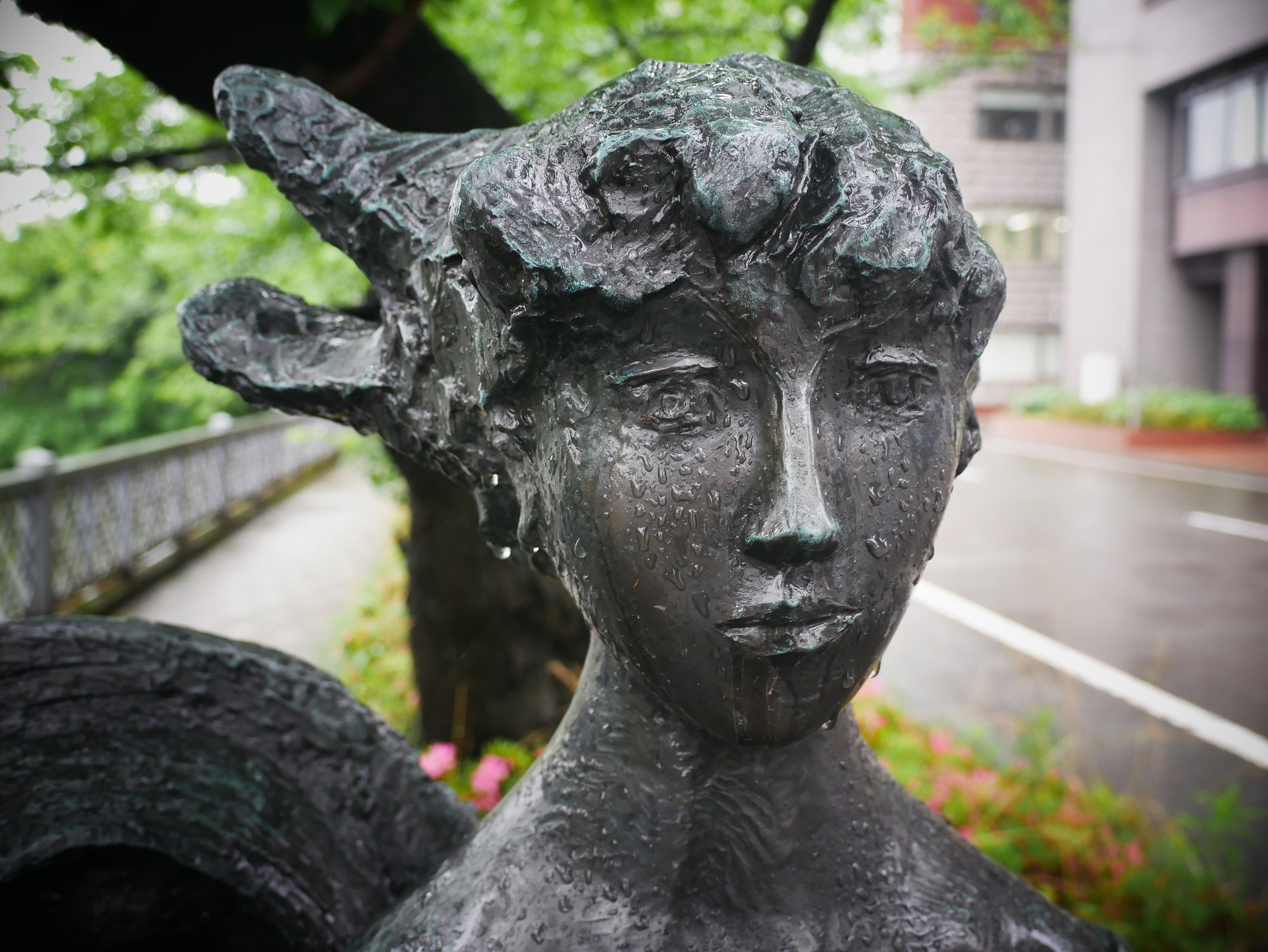
She doesn't look very happy...
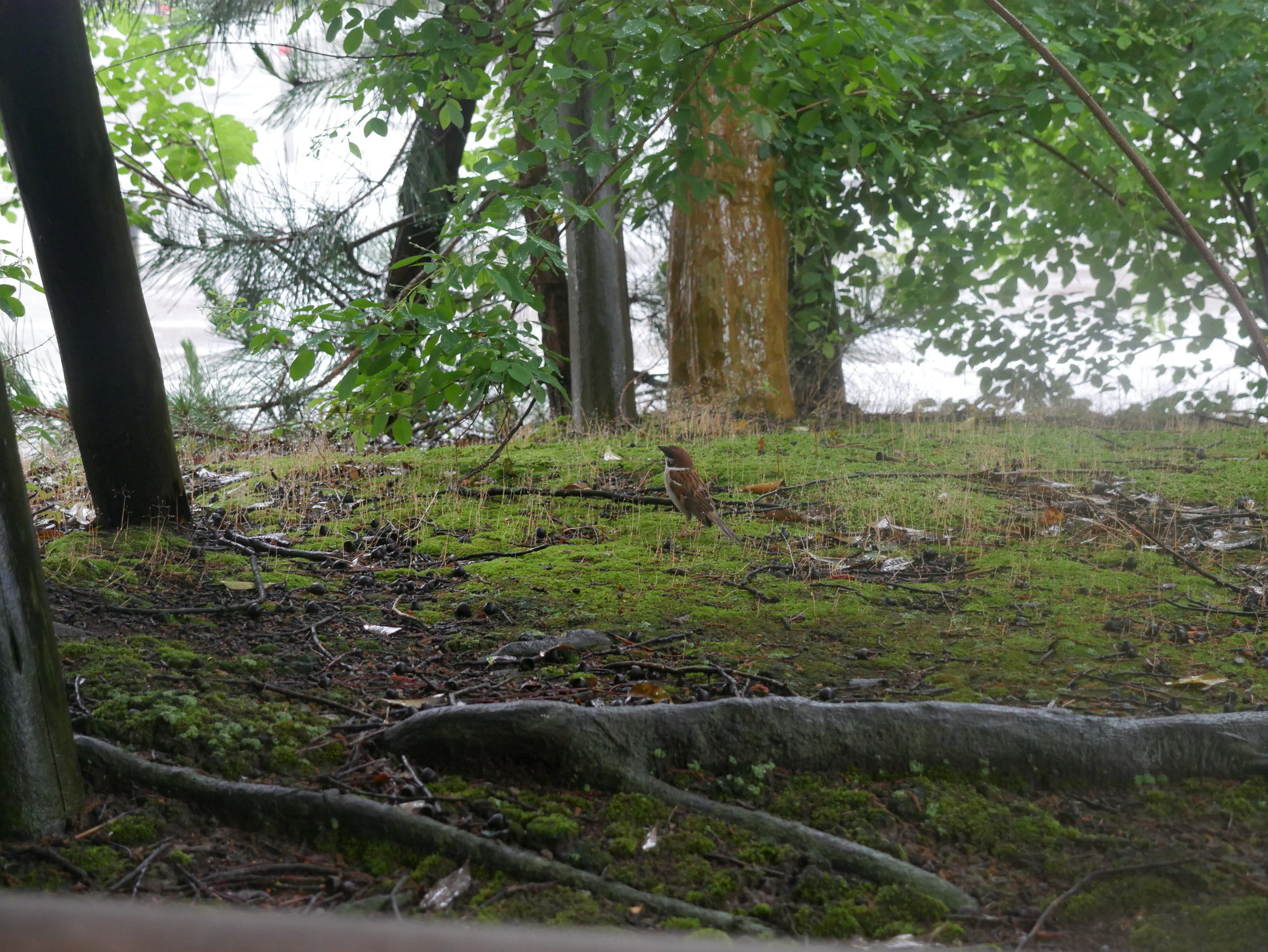
And looked at some real life dinosaurs. Hard to believe that birds are of the same group as the T-Rex!


Not a great day to be a dinosaur
Anyway, since I did nothing I have nothing to share. It was a pity to miss out on some proper sightseeing, but two days were never enough for Fukui in the first place. It's an area I'll have to revisit in the future, give it some decent space in my itinerary.
I went to sleep early, ready for an early start. The next day would be very busy!
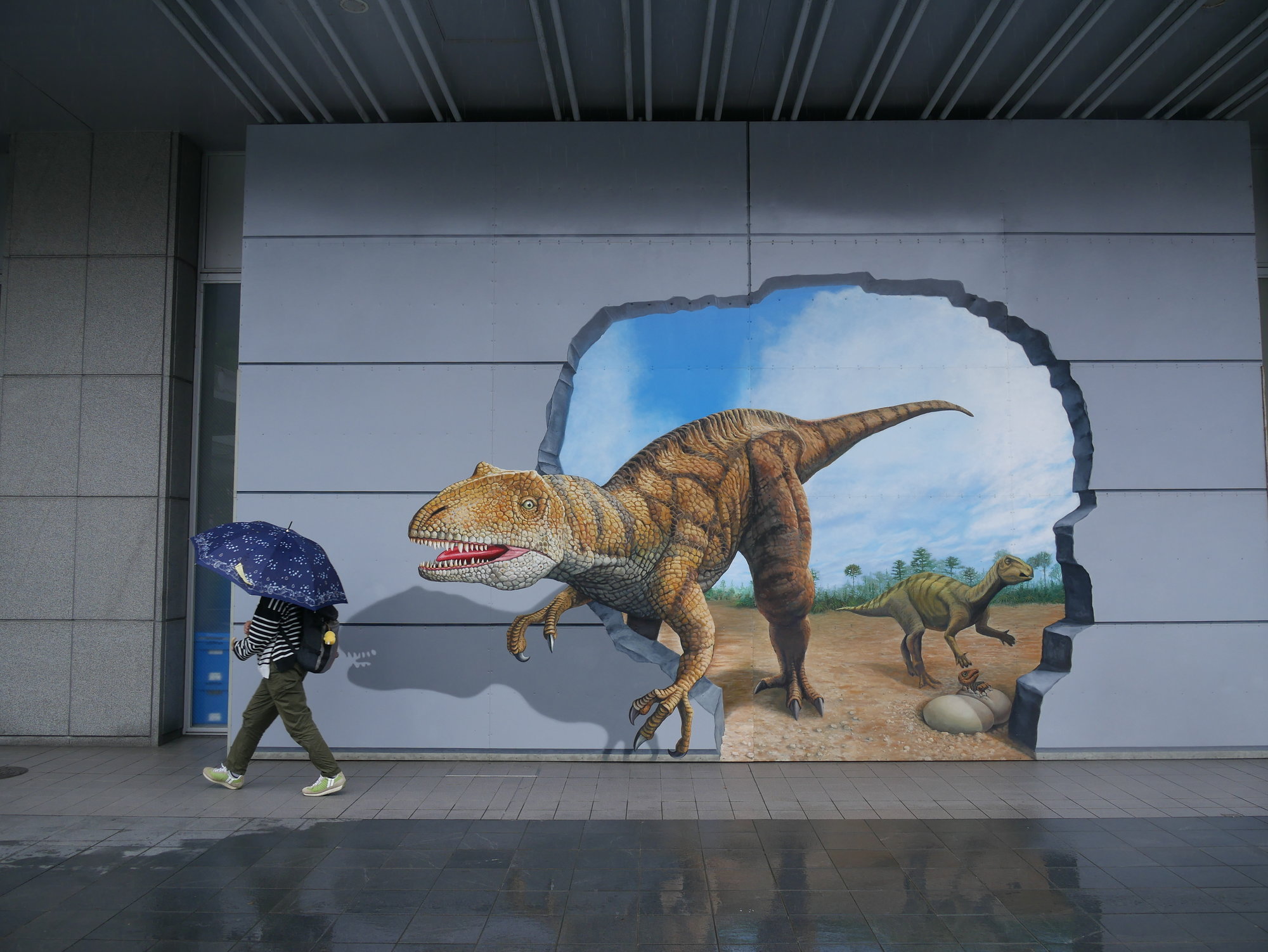


Alas, the weather did not allow. Over the course of the night, typhoon Mawar had been downgraded to just "typhoon rains", so while we were hit with heavy rainfall all day long and hiking / fireflies were out of the question, there were no strong winds. My plans for Ichijodani were cancelled so I slept in and stayed in during the morning, going out for lunch once the rain calmed a little.

Life-sized Fukuisaurus in front of the station. They move and roar every so often.
Fukui prefecture is known for its dinosaur discoveries, and has one of the best dinosaur museums in all of Asia (closed for renovations when I was there). Around Fukui I saw many dinosaur-themed murals and toys, and the gift shops are full of dinosaur souvenirs. I bought food to cook dinner at the hostel as well, including some Fukui specialties from an indoor market. I wasn't sure which habutae mochi to buy, so I bought a couple different boxes, the "naruto mochi" (spiral) and the "yomogi mochi" (yomogi is mugwort, a somewhat uncommon ingredient and more expensive due to its quality). Yomogi / kusa is often appreciated though, every time I share yomogi mochi with someone they go "ehhh! You bought yomogi?!" like it's a special thing. The owner of the hostel in Fukui came to visit me that evening to make sure I was okay, and she said she'd never tried the green habutae before, was very happy to have a few



Fukuititan. These are the real names, by the way. Fukuiraptor is also at the station. These species of dinosaurs were discovered in Fukui.

Even the rats were vicious.
I was feeling unmotivated with all the rain, so I didn't take the tram out to the museums in the city. I went to see the castle moat after lunch (I ate at Fukamidori, the only vegan cafe in town; not much food on the plate but nice for a light meal) and then hid under a roofed bench area for a bit.


She doesn't look very happy...

And looked at some real life dinosaurs. Hard to believe that birds are of the same group as the T-Rex!


Not a great day to be a dinosaur
Anyway, since I did nothing I have nothing to share. It was a pity to miss out on some proper sightseeing, but two days were never enough for Fukui in the first place. It's an area I'll have to revisit in the future, give it some decent space in my itinerary.
I went to sleep early, ready for an early start. The next day would be very busy!


#16
Original Poster
Join Date: Feb 2016
Posts: 113
Likes: 0
Received 0 Likes
on
0 Posts
Thanks mrwunrfl ! 
Route day 4 (ignoring late trains): 07:49 Train departs Fukui > 08:22 Arrival Kaga onsen. Leave bag in locker. Buy pass on bus > 8:45 Bus to Yamanaka > Visit Bashō no Yakata Museum, Kakusenkei gorge, Yamanaka-za Theatre, Ioji > 12:01 Bus to Natadera > 13:44 Bus to Kaga onsen, train to Kanazawa, Hyukumangoku festival > 20:09 Train back to Kaga onsen, pick up bag, night bus return to Tokyo
After a day of rain, the sun shined again. The weather couldn't have been better as I checked-out of the hostel and headed off to the station to take the train up to Kaga onsen. It was a complicated day to plan, trying to fit my itinerary around the three daily buses around Yamanaka and Kaga, but if I made it to each bus on time then I would be able to tick off some of the best sites.
I left early so I thought I had plenty time to wait around at the platform... when I arrived to the station there was an endless line of people buying tickets. Apparently there was a festival in Kanazawa that day and everyone was heading up north to see it (it was also a weekend). I almost pulled my hair out waiting in line, the big clock stealing the minutes away right in front of me, and it was my turn at the machine just the minute my train should be departing from the station. I bought a ticket at lightening speed and ran up the stairs...

Only for the train to be twenty minutes late. This is unusual in Japan, so I hadn't factored late trains into my plan. It was possible I wouldn't make it to the bus in time. People piled up on the platform, all of us lined up in front of where the doors would open. When the train arrived it was already packed full, but my Tokyo rush hour skills came in handy and I slid into the car as if my body was water.
When we arrived to Kaga onsen station, I was running again, to the lockers to leave my backpack, I just dumped and pushed everything inside, and then zooming across the parking lot to a bus I saw parked. The bus should've left two minutes earlier, but it had waited around without much hurry, and when I practically fell in through the doorway, trying to catch my breath, the driver and a tour guide were delighted to see me.
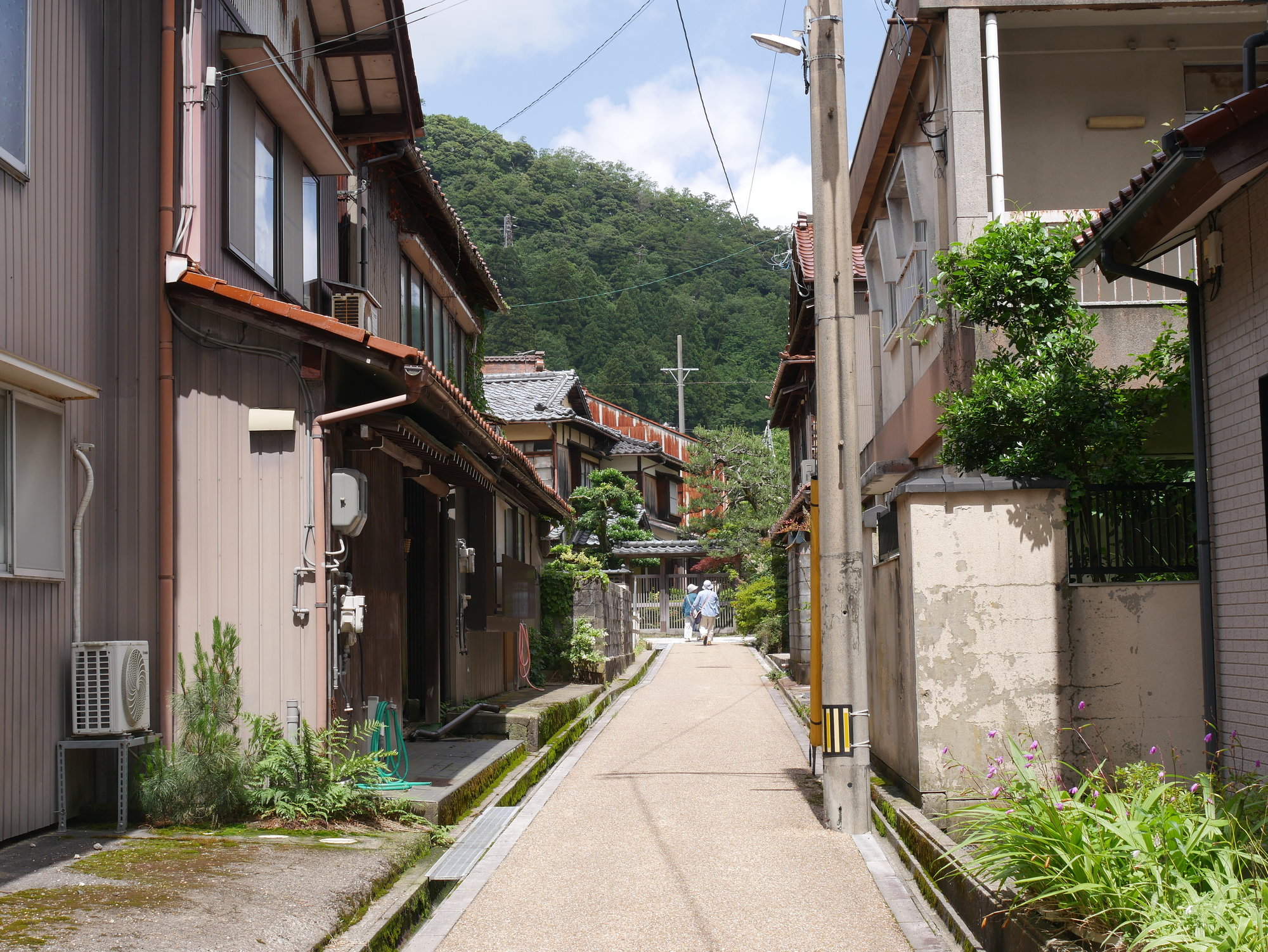
The lady asked where I was going (to Yamanaka-za stop) and she gave me a pamphlet of the area. I bought for a day pass ticket (photo above) which would be a bit of a discount for the three buses I'd be taking that day. The Can bus is a circular bus that goes around the major tourist stops of the area. With that, the bus was off, I was the only passenger, and I was able to relax as the guide tried to point out some things to me in some basic Japanese (like the lacquerware centre).
Finally reaching Yamanaka, I hopped off and stretched, sighing in relief after the tumultuous journey.

The ink drawing on the left are Basho and Sora departing from Tokyo/Edo to Oku. There's a mural under the Senju bridge in Tokyo if anyone wants to visit the spot.
I headed first to my must-see, the Basho Museum.
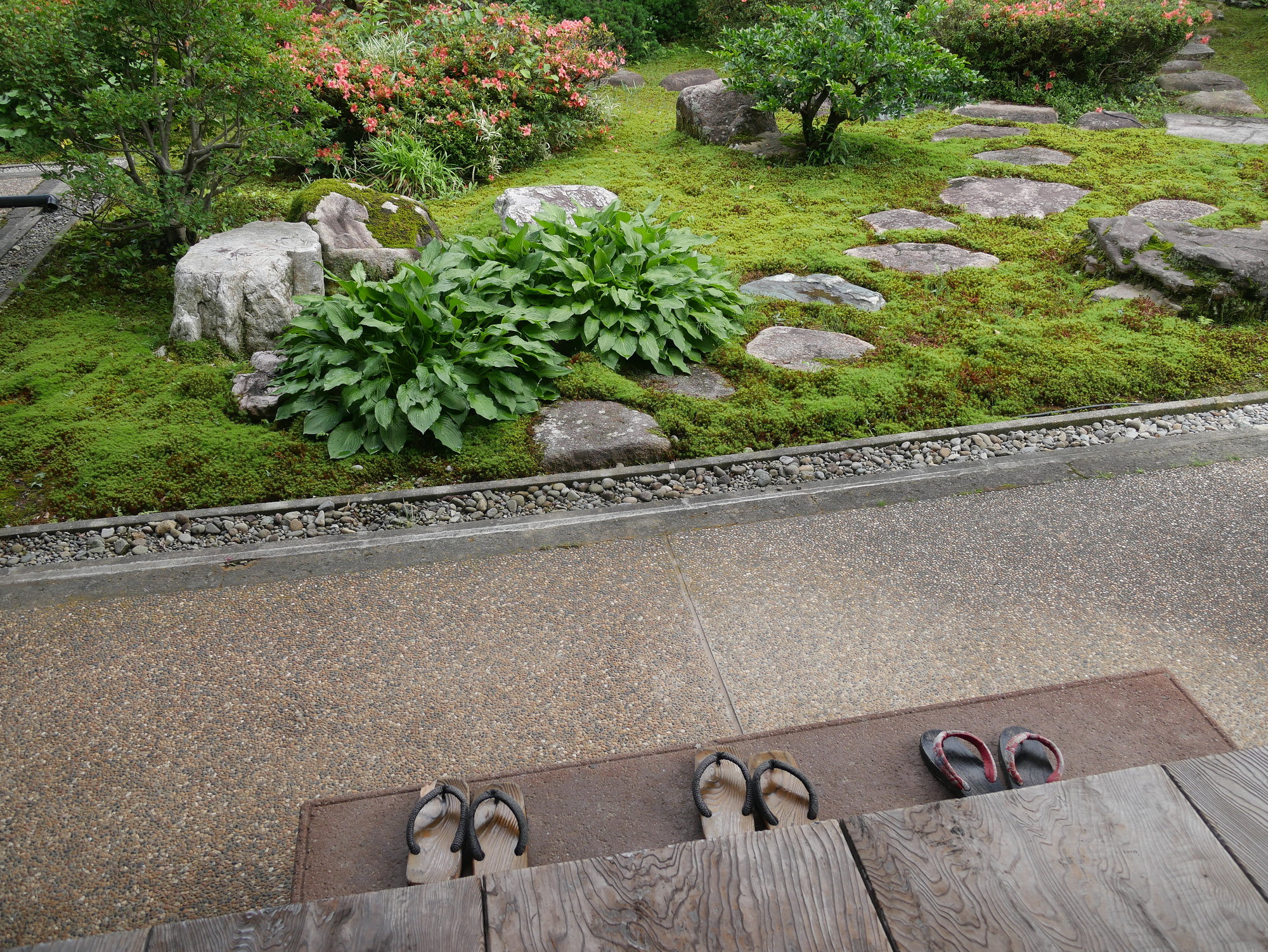
Over the years of travelling I've been visiting Basho and Sora around Japan. Basho was a haiku poet in the 1600s, most famous for his work Oku no Hosomichi (Narrow Road to the Deep North), in which he and his travel companion Sora departed from Tokyo and travelled north through Tohoku, down the coast of the Japan Sea to Ogaki, and then taking a boat down the river to his hometown of Iga-Ueno. I went to Tohoku as my third trip and would read his journal on the train every day, his poems while standing at each site; as such, it became a special book for me and I've tried to follow his steps as much as possible.
In Yamanaka, Basho wrote:

Basho stayed in Yamanaka a few nights (in the very building that is now the Basho Museum). It's also where Sora and he parted ways, so it was a particularly special visit for me.
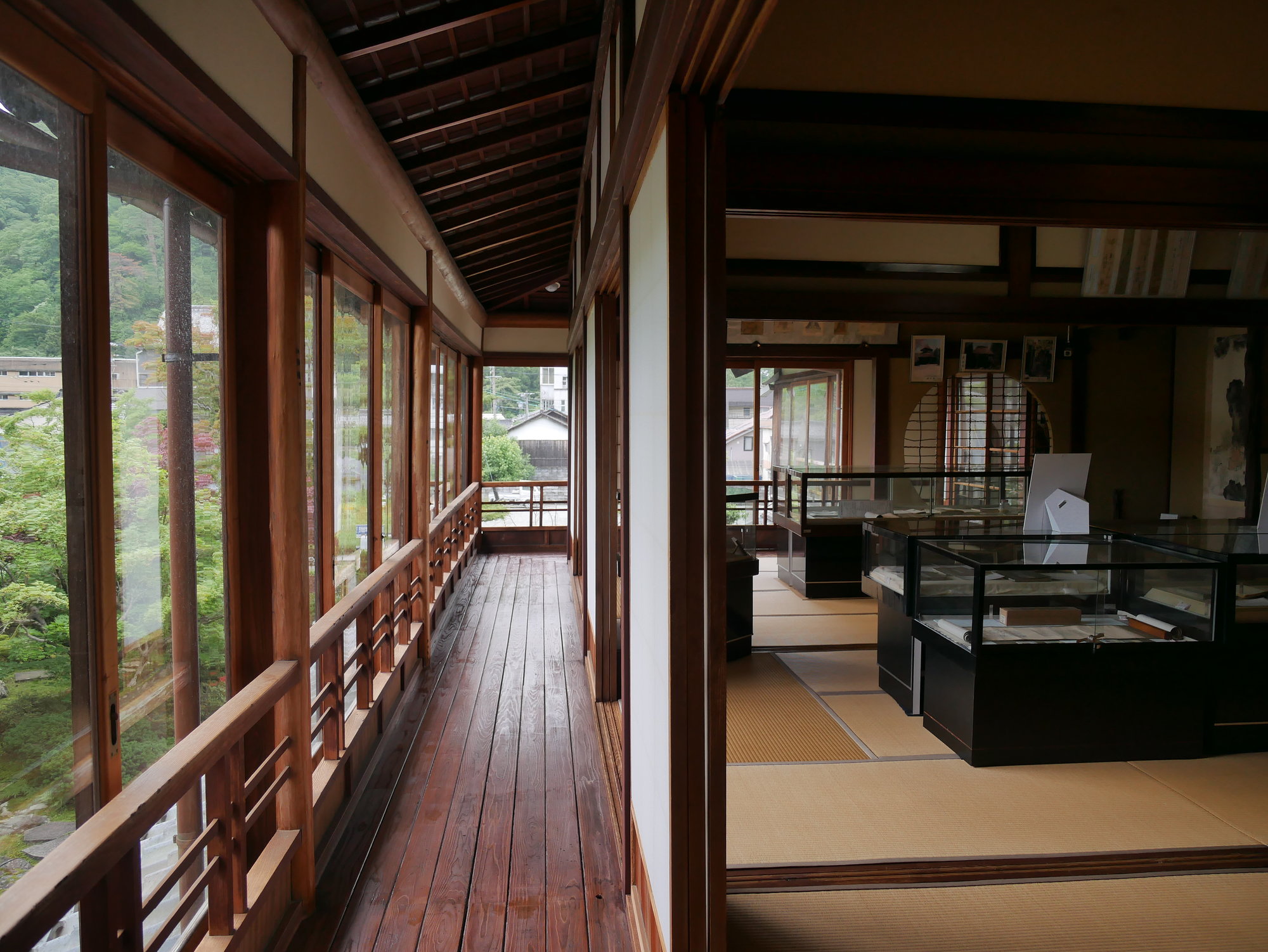
The museum had a few tatami rooms and displays of old editions of the Oku no hosomichi, scrolls with ink drawings, even an original scroll that Basho himself wrote! There's nothing in English so it wouldn't be of much interest to any foreigners without a particular soft spot for the poet.

There is a nice garden though, and they have the geta shoes so anyone can walk around the garden if they wish (you have to leave your shoes at the entrance before heading into the museum). There's also a couple pieces of Yamanaka lacquerware, some Taisho-era prints, maps and photos of festivals.
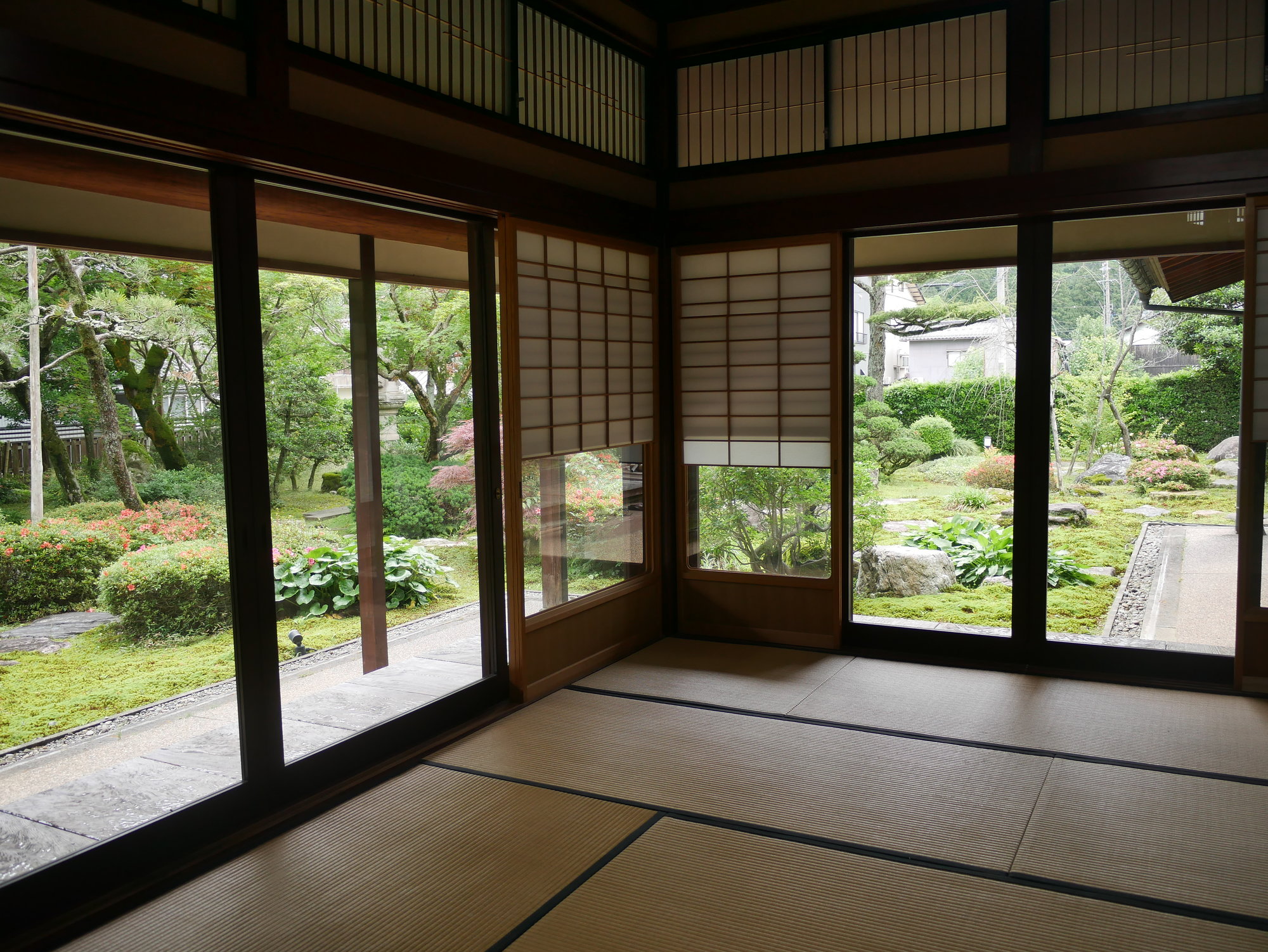
I took a lot longer than I expected in the museum, especially since the man selling tickets gave me a bit of a tour and then made some origami for me. I took a selfie with the Basho and Sora statue out front and then decided to go down to the gorge. Ayatori bridge is just a stone's throw from the museum and it's a big purple steel structure, impossible to miss. Ideally one would start the walk from Kurotani Bridge further up; Ayatori is about halfway along, but sacrifices must be made when time is limited. There were a few people out and about at that time, but overall it was a calm day.


Kakusenkei Gorge is gorgeous in summer and autumn. There's a paved path down the river with little waterfalls, benches, moss, occasional shrines.
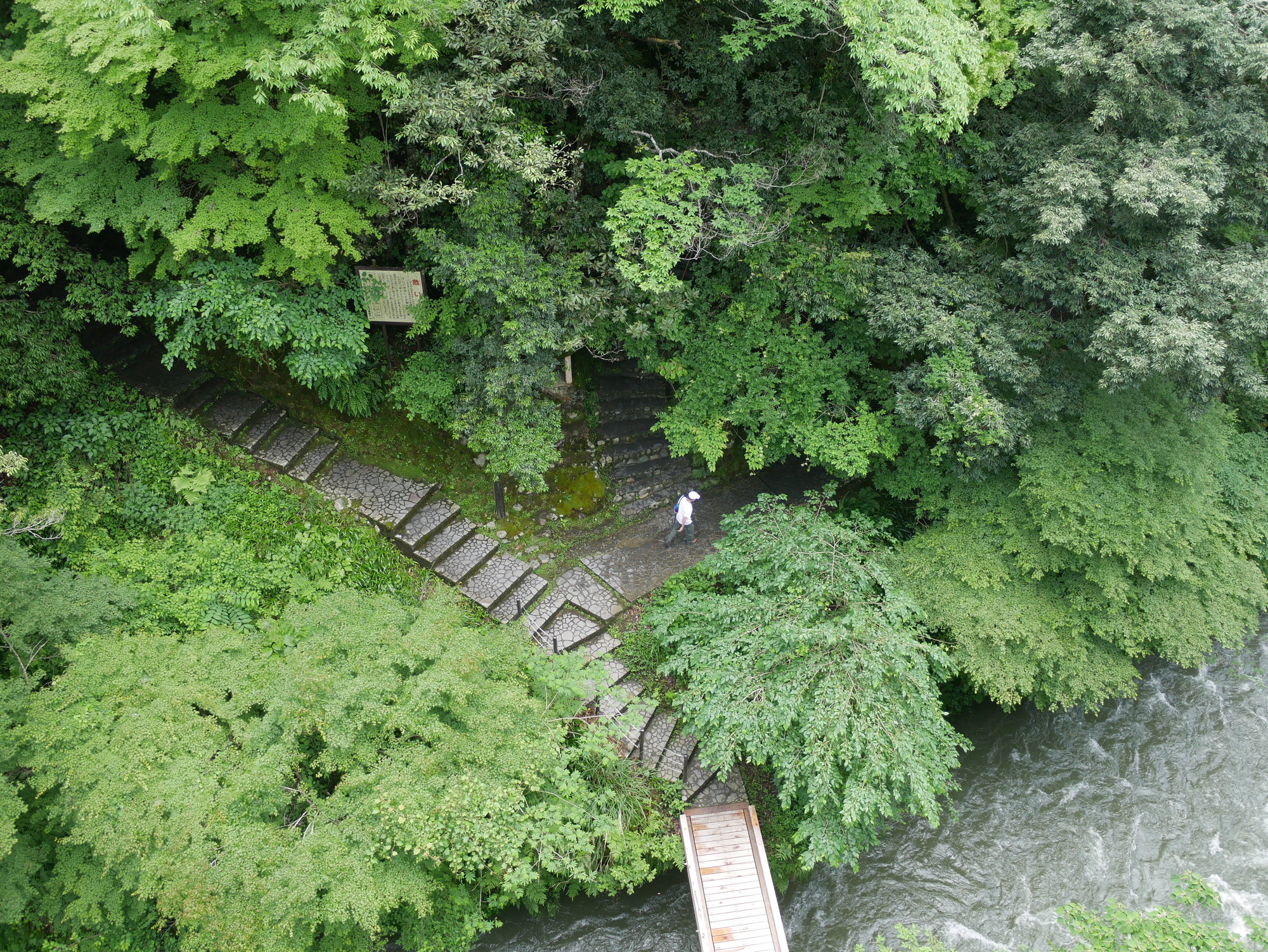
Looking down from the bridge.

You want to go and just spend the morning walking around, enjoying nature and the peace of the place.
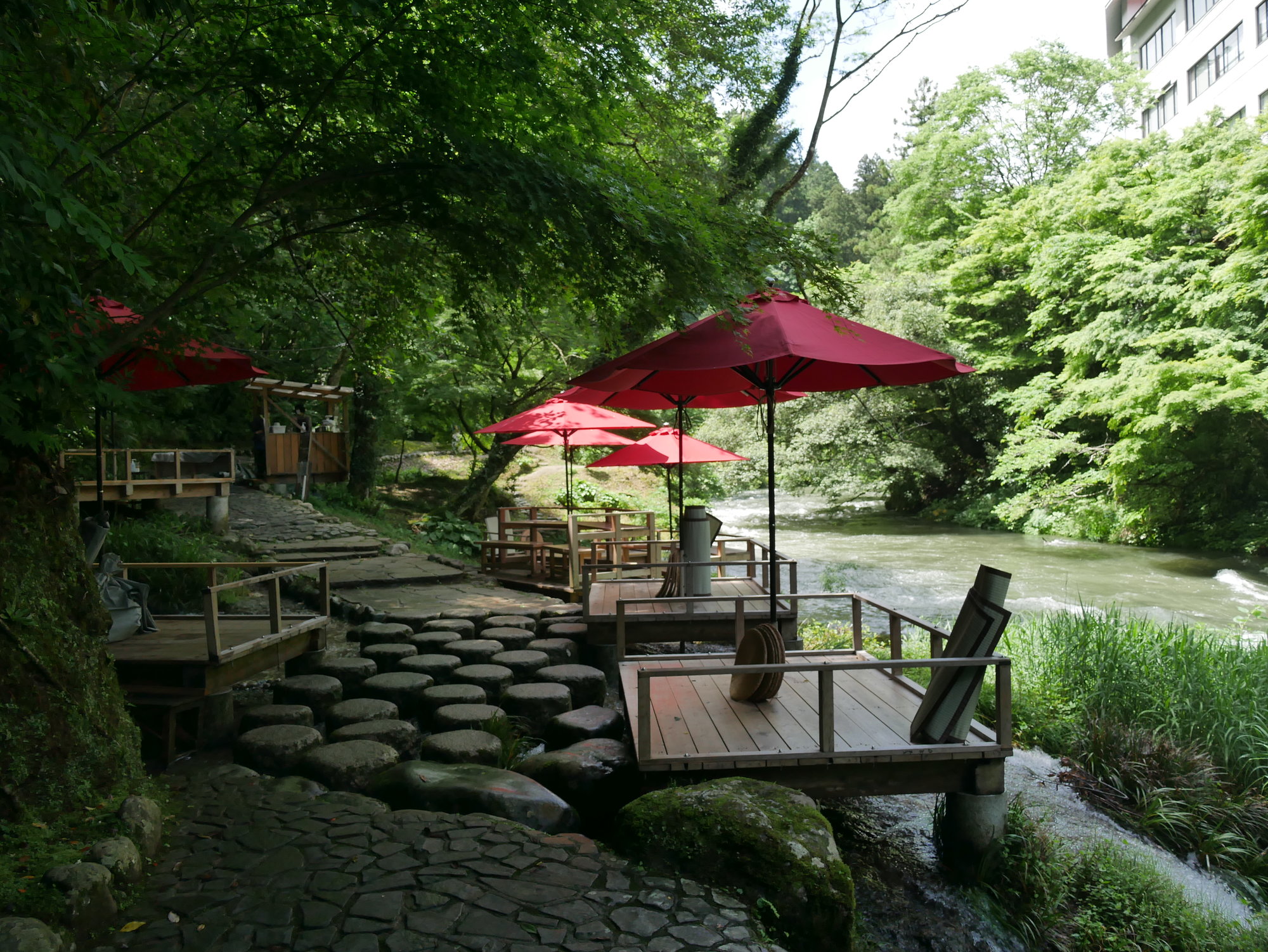
Along the way there's this cafe of sorts. It's a kawadoko, a cafe/restaurant right next to or on top of a river. In August I'm sure they have the mats rolled out, but since it wasn't a busy day I took one of the benches. These terraces are right on top of the water, excapt one which is up next to the waterfall (one might get splashed a little).
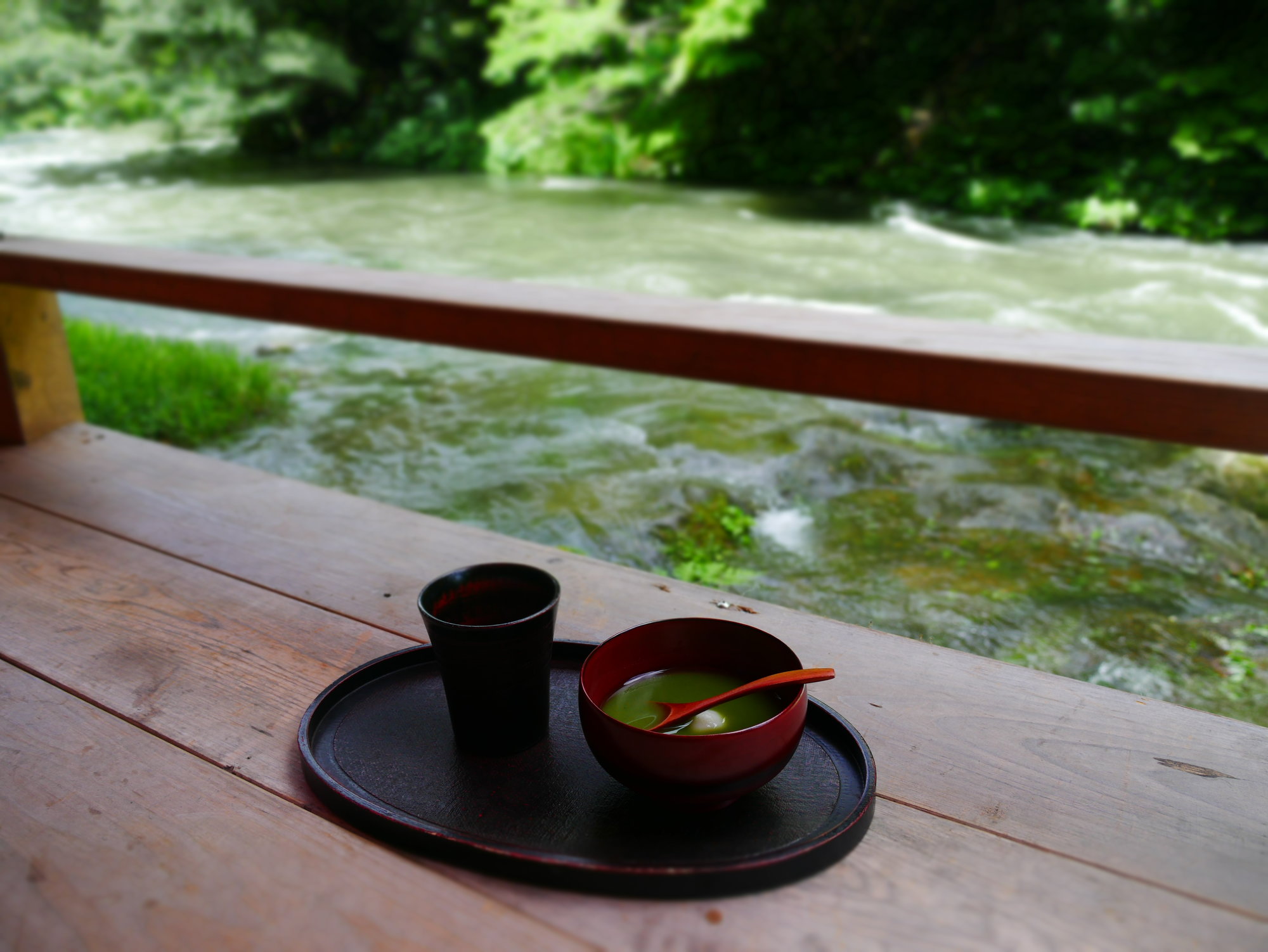
I had some macha oshiruko and tea, there wasn't much else to choose from. The soup was more watery than anything, but you go for the experience / view, not the menu
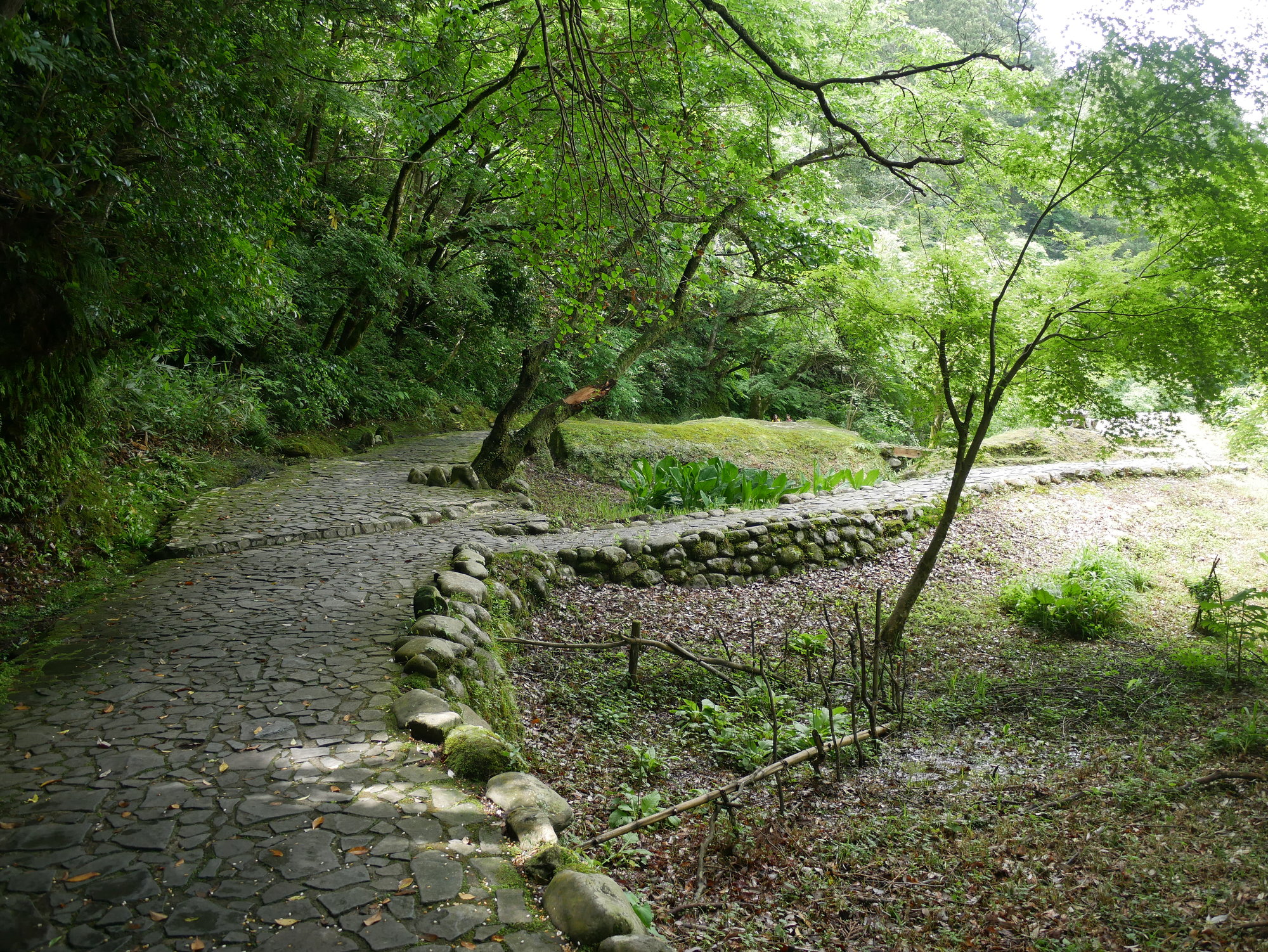

Hairy little monster
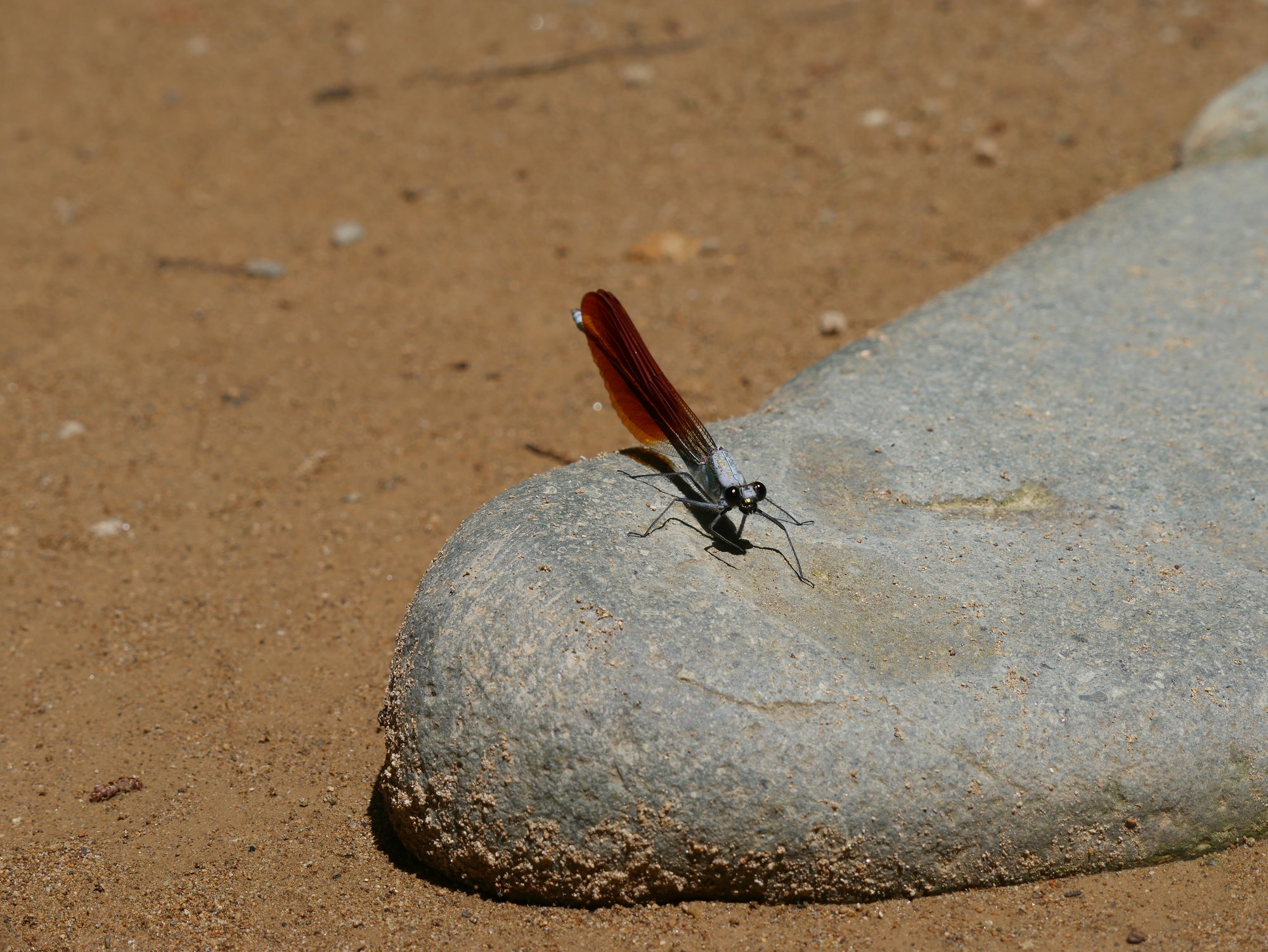
I don't know how it let me get so close before flying away. It's hard taking photos of bugs sometimes.
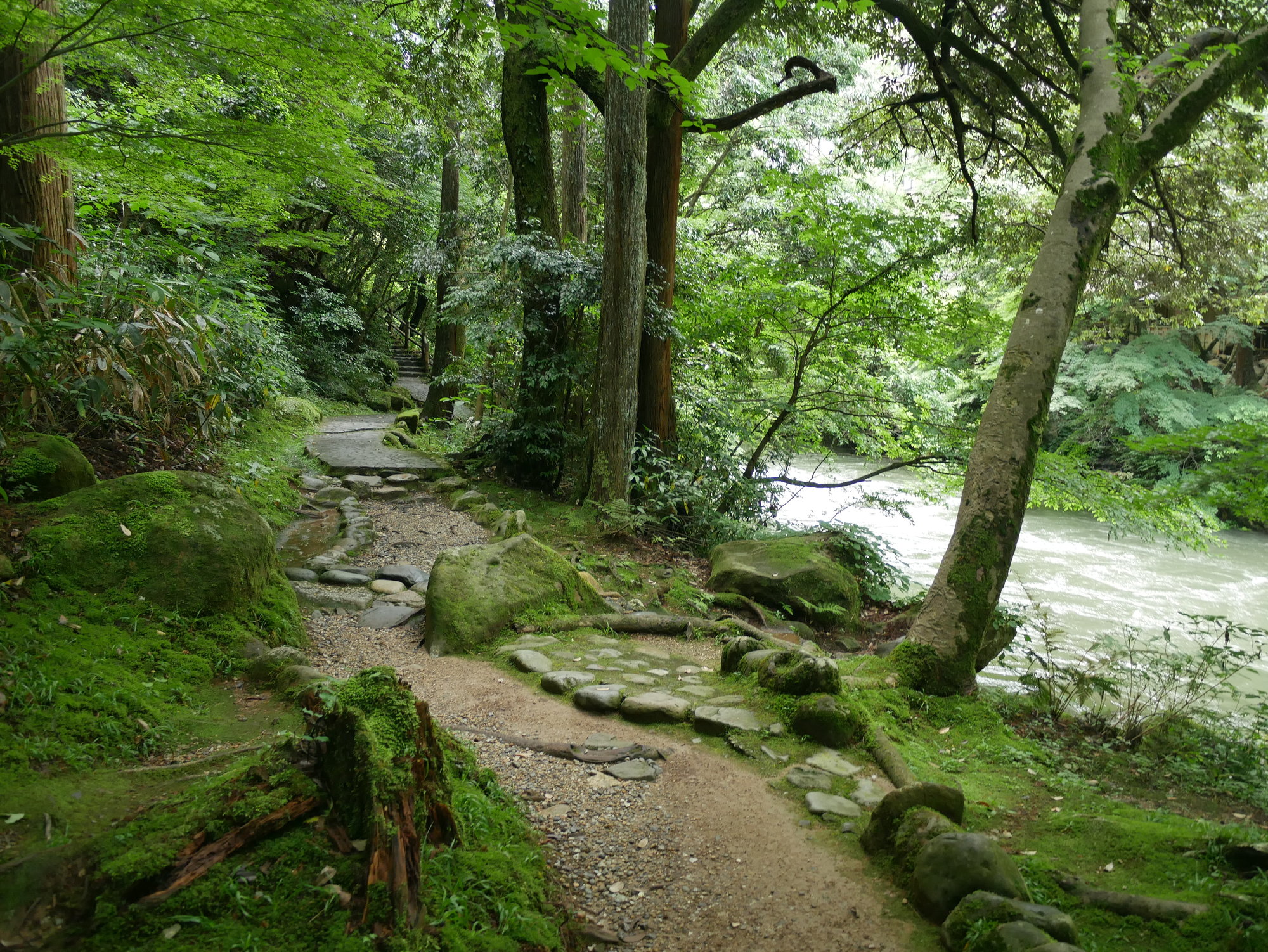

At the end there's this stamp desk. The sign says Visiting Basho's Footsteps / Oku no hosomichi stamp rally. I found a little poster at the museum so I put my stamp on that.

The end of the walk, going back into town
The path continues a little more, up some steps to the street above and to Korogi Bridge. From there, I was at the southern end of town, and I walked along the main street looking at some of the shops. I had some 35 minutes before the next bus, so didn't have much time to stop at any restaurants or for a bath in the hot spring.
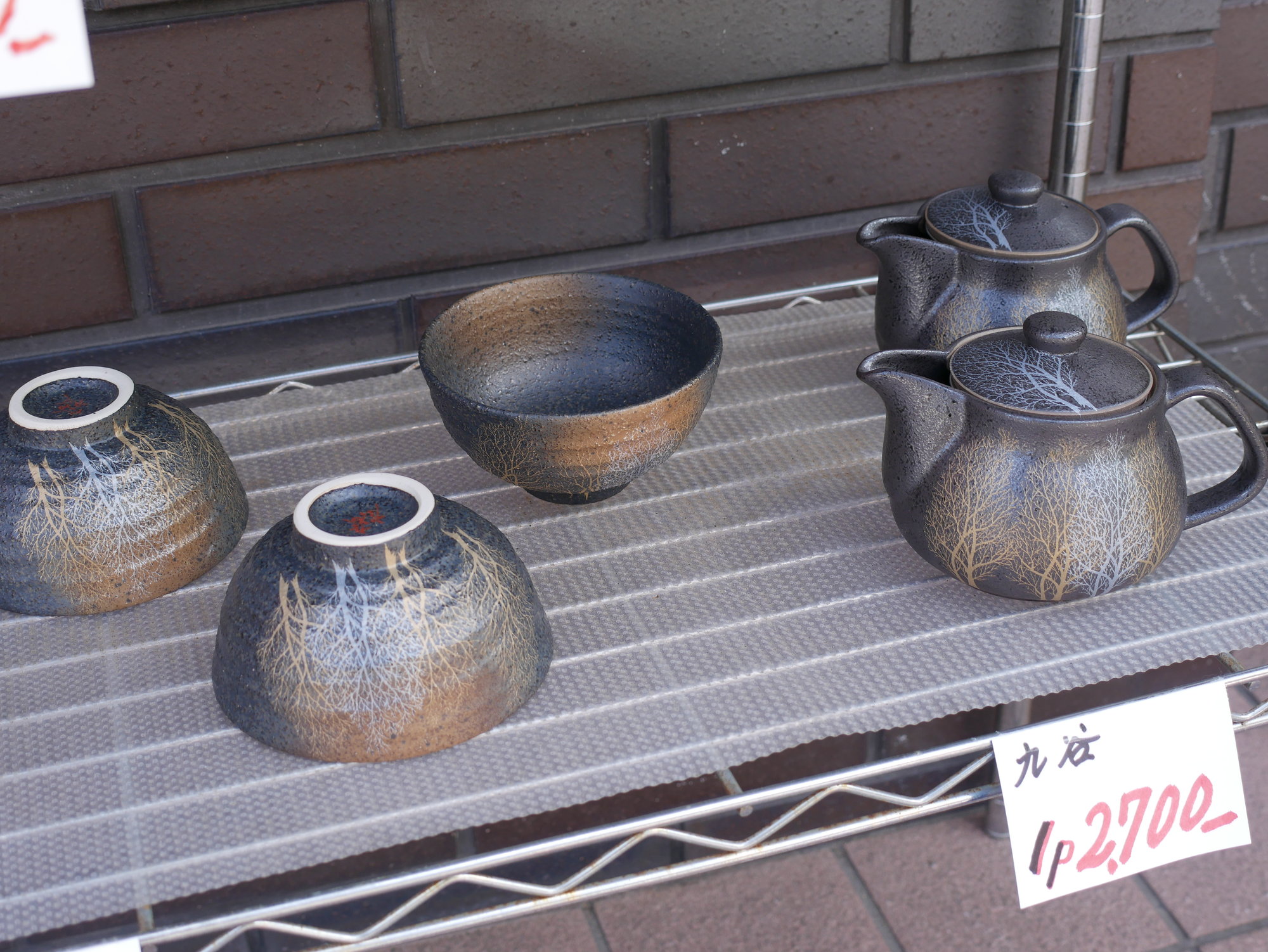
Gorgeous teapots

The bus stop is in front of Yamanaka-za, it's a theatre where they do geisha dances on weekends. It's very affordable so I highly recommend it! When they aren't using it, you can go in for free to look around. They have some lacquered artwork outside and some noh dolls as well.

And the theatre has a souvenir shop at the entry, where I found some ankoro mochi. This is a speciality of Ishikawa prefecture and found everywhere in Kanazawa. It's unique in that it has the mochi hidden inside the bean paste, rather than having the paste inside the mochi. They're inside out, basically. Makes for a delightful chewy snack.
The hot spring (below) is also the same building. I dipped my fingers in the foot bath outside and considered that qualified as "having a bath in Yamanaka", so then I had to buy some milk at the vending machine.

It's a Japanese custom to drink milk after an onsen. I had some Hokkaido soy milk, very nice:

There were still some 10-15 minutes before the bus, so I decided I could visit Ioji temple if I made a run for it. I did run, but I couldn't find the steps to the temple. It took me a while just to find the path. In fact, it was right there: from Yamanaka-za, take the road west straight up. I've made the map for ease' sake:

It's straight up under the expressway, don't take a turn further north!

Anyway, with less time, I still made it to the temple (it really is right there). It was a deserted place, and a shrine off to the side with boar statues instead of komainu guardians. I looked up why that was the case later on, and discovered it probably has to do with Wake no Kiyomaro. Kiyomaru was a a trusted advisor Emperor Kanmu, alive during the time of Buddhism's introduction to Japan in the 700s.
The monk Dokyo, who had also gained the trust of Emperor Kanmu, reported that there was an oracle from an important shrine who'd seen that Dokyo would become the next emperor after Empress Shotoku. Emperor Dokyo sent Kiyomaru to the shrine to confirm or deny this; when Kiyomaro returned, he reported that the throne is inherited by the imperial family and Dokyo wouldn't be next in line. Dokyo branded Kiyomaro a liar, cut off his leg and exiled him. He sent assassins after him as he headed for exile, but 300 wild boars appeared from the mountains and protected Kiyomaro.
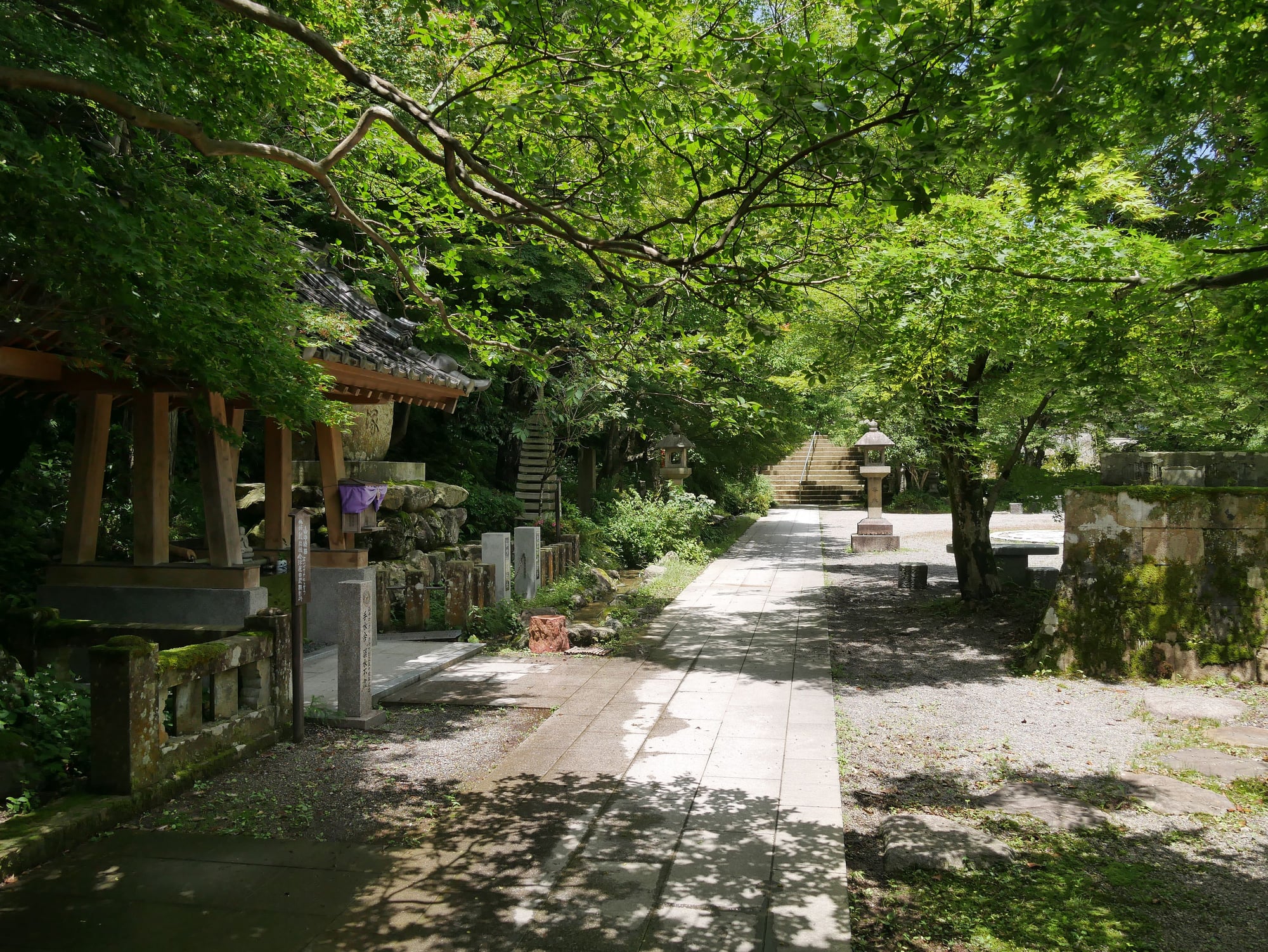
Kiyomaru later returned when Dokyo was exiled, so there's a happy ending to that story.

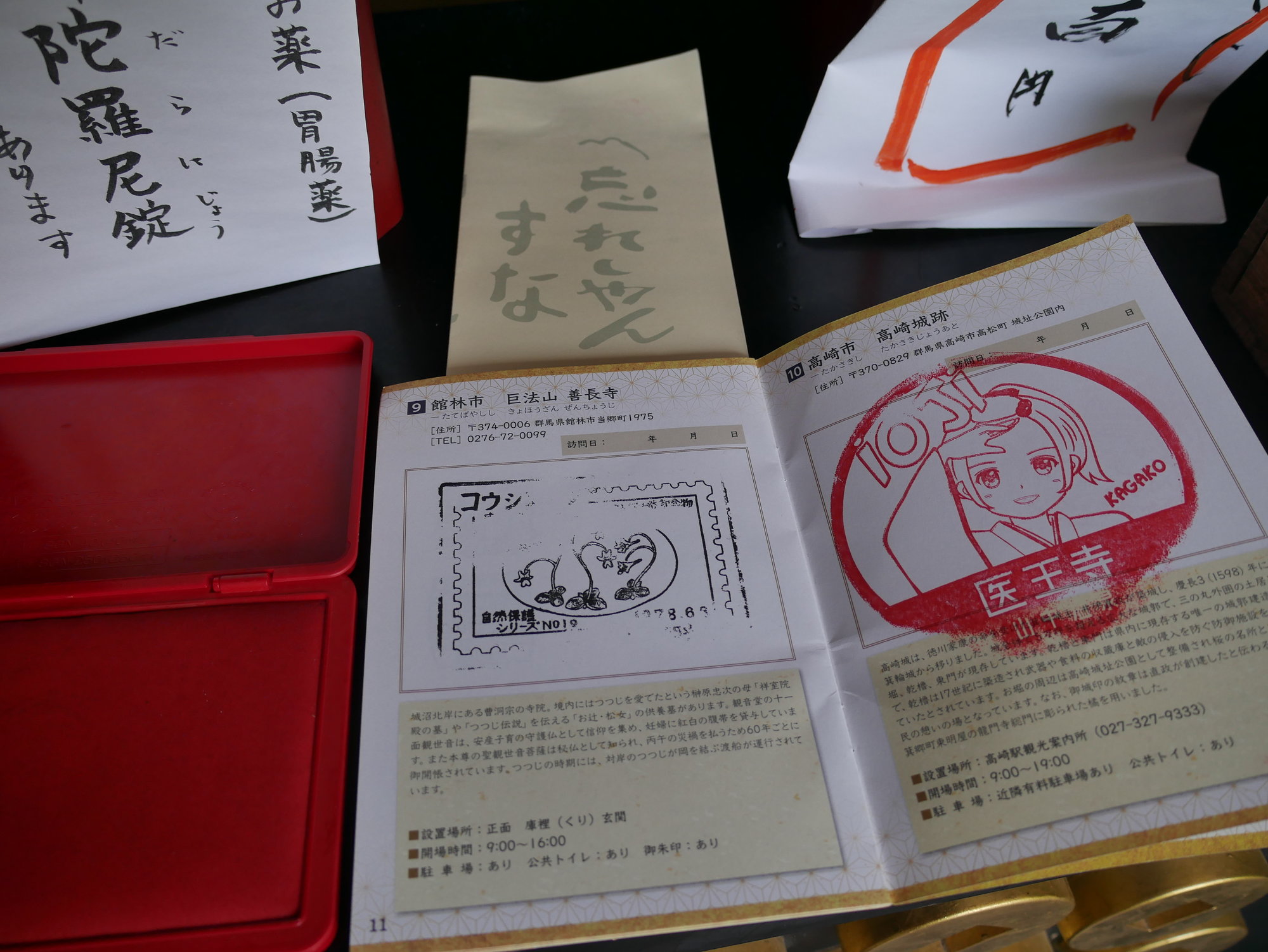
The temple had a manga stamp for some reason. Maybe there's a series is set in Yamanaka.
With time on my heels, I was running again, back to the bus stop, and made it with three minutes to spare. They were doing a concert at the plaza in front of the theatre, so I enjoyed that for a while until the bus arrived. And then, off to Natadera!


Route day 4 (ignoring late trains): 07:49 Train departs Fukui > 08:22 Arrival Kaga onsen. Leave bag in locker. Buy pass on bus > 8:45 Bus to Yamanaka > Visit Bashō no Yakata Museum, Kakusenkei gorge, Yamanaka-za Theatre, Ioji > 12:01 Bus to Natadera > 13:44 Bus to Kaga onsen, train to Kanazawa, Hyukumangoku festival > 20:09 Train back to Kaga onsen, pick up bag, night bus return to Tokyo
After a day of rain, the sun shined again. The weather couldn't have been better as I checked-out of the hostel and headed off to the station to take the train up to Kaga onsen. It was a complicated day to plan, trying to fit my itinerary around the three daily buses around Yamanaka and Kaga, but if I made it to each bus on time then I would be able to tick off some of the best sites.
I left early so I thought I had plenty time to wait around at the platform... when I arrived to the station there was an endless line of people buying tickets. Apparently there was a festival in Kanazawa that day and everyone was heading up north to see it (it was also a weekend). I almost pulled my hair out waiting in line, the big clock stealing the minutes away right in front of me, and it was my turn at the machine just the minute my train should be departing from the station. I bought a ticket at lightening speed and ran up the stairs...

Only for the train to be twenty minutes late. This is unusual in Japan, so I hadn't factored late trains into my plan. It was possible I wouldn't make it to the bus in time. People piled up on the platform, all of us lined up in front of where the doors would open. When the train arrived it was already packed full, but my Tokyo rush hour skills came in handy and I slid into the car as if my body was water.
When we arrived to Kaga onsen station, I was running again, to the lockers to leave my backpack, I just dumped and pushed everything inside, and then zooming across the parking lot to a bus I saw parked. The bus should've left two minutes earlier, but it had waited around without much hurry, and when I practically fell in through the doorway, trying to catch my breath, the driver and a tour guide were delighted to see me.

The lady asked where I was going (to Yamanaka-za stop) and she gave me a pamphlet of the area. I bought for a day pass ticket (photo above) which would be a bit of a discount for the three buses I'd be taking that day. The Can bus is a circular bus that goes around the major tourist stops of the area. With that, the bus was off, I was the only passenger, and I was able to relax as the guide tried to point out some things to me in some basic Japanese (like the lacquerware centre).
Finally reaching Yamanaka, I hopped off and stretched, sighing in relief after the tumultuous journey.

The ink drawing on the left are Basho and Sora departing from Tokyo/Edo to Oku. There's a mural under the Senju bridge in Tokyo if anyone wants to visit the spot.
I headed first to my must-see, the Basho Museum.

Over the years of travelling I've been visiting Basho and Sora around Japan. Basho was a haiku poet in the 1600s, most famous for his work Oku no Hosomichi (Narrow Road to the Deep North), in which he and his travel companion Sora departed from Tokyo and travelled north through Tohoku, down the coast of the Japan Sea to Ogaki, and then taking a boat down the river to his hometown of Iga-Ueno. I went to Tohoku as my third trip and would read his journal on the train every day, his poems while standing at each site; as such, it became a special book for me and I've tried to follow his steps as much as possible.
In Yamanaka, Basho wrote:

Basho stayed in Yamanaka a few nights (in the very building that is now the Basho Museum). It's also where Sora and he parted ways, so it was a particularly special visit for me.

The museum had a few tatami rooms and displays of old editions of the Oku no hosomichi, scrolls with ink drawings, even an original scroll that Basho himself wrote! There's nothing in English so it wouldn't be of much interest to any foreigners without a particular soft spot for the poet.

There is a nice garden though, and they have the geta shoes so anyone can walk around the garden if they wish (you have to leave your shoes at the entrance before heading into the museum). There's also a couple pieces of Yamanaka lacquerware, some Taisho-era prints, maps and photos of festivals.

I took a lot longer than I expected in the museum, especially since the man selling tickets gave me a bit of a tour and then made some origami for me. I took a selfie with the Basho and Sora statue out front and then decided to go down to the gorge. Ayatori bridge is just a stone's throw from the museum and it's a big purple steel structure, impossible to miss. Ideally one would start the walk from Kurotani Bridge further up; Ayatori is about halfway along, but sacrifices must be made when time is limited. There were a few people out and about at that time, but overall it was a calm day.


Kakusenkei Gorge is gorgeous in summer and autumn. There's a paved path down the river with little waterfalls, benches, moss, occasional shrines.

Looking down from the bridge.

You want to go and just spend the morning walking around, enjoying nature and the peace of the place.

Along the way there's this cafe of sorts. It's a kawadoko, a cafe/restaurant right next to or on top of a river. In August I'm sure they have the mats rolled out, but since it wasn't a busy day I took one of the benches. These terraces are right on top of the water, excapt one which is up next to the waterfall (one might get splashed a little).

I had some macha oshiruko and tea, there wasn't much else to choose from. The soup was more watery than anything, but you go for the experience / view, not the menu



Hairy little monster

I don't know how it let me get so close before flying away. It's hard taking photos of bugs sometimes.


At the end there's this stamp desk. The sign says Visiting Basho's Footsteps / Oku no hosomichi stamp rally. I found a little poster at the museum so I put my stamp on that.

The end of the walk, going back into town
The path continues a little more, up some steps to the street above and to Korogi Bridge. From there, I was at the southern end of town, and I walked along the main street looking at some of the shops. I had some 35 minutes before the next bus, so didn't have much time to stop at any restaurants or for a bath in the hot spring.

Gorgeous teapots

The bus stop is in front of Yamanaka-za, it's a theatre where they do geisha dances on weekends. It's very affordable so I highly recommend it! When they aren't using it, you can go in for free to look around. They have some lacquered artwork outside and some noh dolls as well.

And the theatre has a souvenir shop at the entry, where I found some ankoro mochi. This is a speciality of Ishikawa prefecture and found everywhere in Kanazawa. It's unique in that it has the mochi hidden inside the bean paste, rather than having the paste inside the mochi. They're inside out, basically. Makes for a delightful chewy snack.
The hot spring (below) is also the same building. I dipped my fingers in the foot bath outside and considered that qualified as "having a bath in Yamanaka", so then I had to buy some milk at the vending machine.

It's a Japanese custom to drink milk after an onsen. I had some Hokkaido soy milk, very nice:

There were still some 10-15 minutes before the bus, so I decided I could visit Ioji temple if I made a run for it. I did run, but I couldn't find the steps to the temple. It took me a while just to find the path. In fact, it was right there: from Yamanaka-za, take the road west straight up. I've made the map for ease' sake:

It's straight up under the expressway, don't take a turn further north!

Anyway, with less time, I still made it to the temple (it really is right there). It was a deserted place, and a shrine off to the side with boar statues instead of komainu guardians. I looked up why that was the case later on, and discovered it probably has to do with Wake no Kiyomaro. Kiyomaru was a a trusted advisor Emperor Kanmu, alive during the time of Buddhism's introduction to Japan in the 700s.
The monk Dokyo, who had also gained the trust of Emperor Kanmu, reported that there was an oracle from an important shrine who'd seen that Dokyo would become the next emperor after Empress Shotoku. Emperor Dokyo sent Kiyomaru to the shrine to confirm or deny this; when Kiyomaro returned, he reported that the throne is inherited by the imperial family and Dokyo wouldn't be next in line. Dokyo branded Kiyomaro a liar, cut off his leg and exiled him. He sent assassins after him as he headed for exile, but 300 wild boars appeared from the mountains and protected Kiyomaro.

Kiyomaru later returned when Dokyo was exiled, so there's a happy ending to that story.


The temple had a manga stamp for some reason. Maybe there's a series is set in Yamanaka.
With time on my heels, I was running again, back to the bus stop, and made it with three minutes to spare. They were doing a concert at the plaza in front of the theatre, so I enjoyed that for a while until the bus arrived. And then, off to Natadera!

Last edited by Peter_T; Sep 27th, 2023 at 04:01 AM.
#18
Oh, fabulous! I’m so excited that we’ll be staying 2 nights in Yamanaka and I’m now intrigued by the Basho museum. The area looks lovely and we should be able to see a little bit of autumn color.
Looking forward to the rest of your trip.
Looking forward to the rest of your trip.
#19
Join Date: Jan 2003
Posts: 2,243
Likes: 0
Received 0 Likes
on
0 Posts
I am not familiar at all with Yamanaka and the surrounding area - looks very interesting, thanks for the report and photos, Peter_T. I've been to various places surrounding it...but not the interior area of Ishikawa Ken...
#20
Original Poster
Join Date: Feb 2016
Posts: 113
Likes: 0
Received 0 Likes
on
0 Posts
I had about an hour and a half to see Natadera. I thought that would be plenty time, and room for a snack at the store in front of the bus stop, but the temple ended up being pretty big, so I ended up having to speed the visit towards the end.

I have been to many temples and shrines in Japan over the course of my travels. Iíve been to temple cities like Kyoto and Kamakura and Hiraizumi.
Iíve been to shrines on cliff-sides and hidden in caves. Iíve seen shrines bombed and temples rebuilt, Iíve seen shrine dotted with expensive bizen-yaki pottery or dedicated to porcelain. Iíve been through so many rows of inari gates, bought too many ema boards, woken up at 6am to join in the morning chanting. Iíve seen the reds and golds of Nikko's mausoleums and pheonix paintings of Yūtoku Inari, pushed my way through the bush to reach Okinawan utaki. Iíve talked to monks and miko and collect shuin stamps. I pray to Kannon whenever I see her, and recognise some of the statues better than some of my Japanese friends. Iíve climbed mountains and hiked pilgrimages, always one more shichifukujin meguri...
This list might make me sound a bit presumptuous. The point is: lots of temples. Temples and shrines are my favourite. Whenever I plan a visit, my first question is, ďwhich shrines will I be seeing?Ē; they're the cornerstone of my travels. So, with it all, itís hard to impress me. Iíve seen it all.
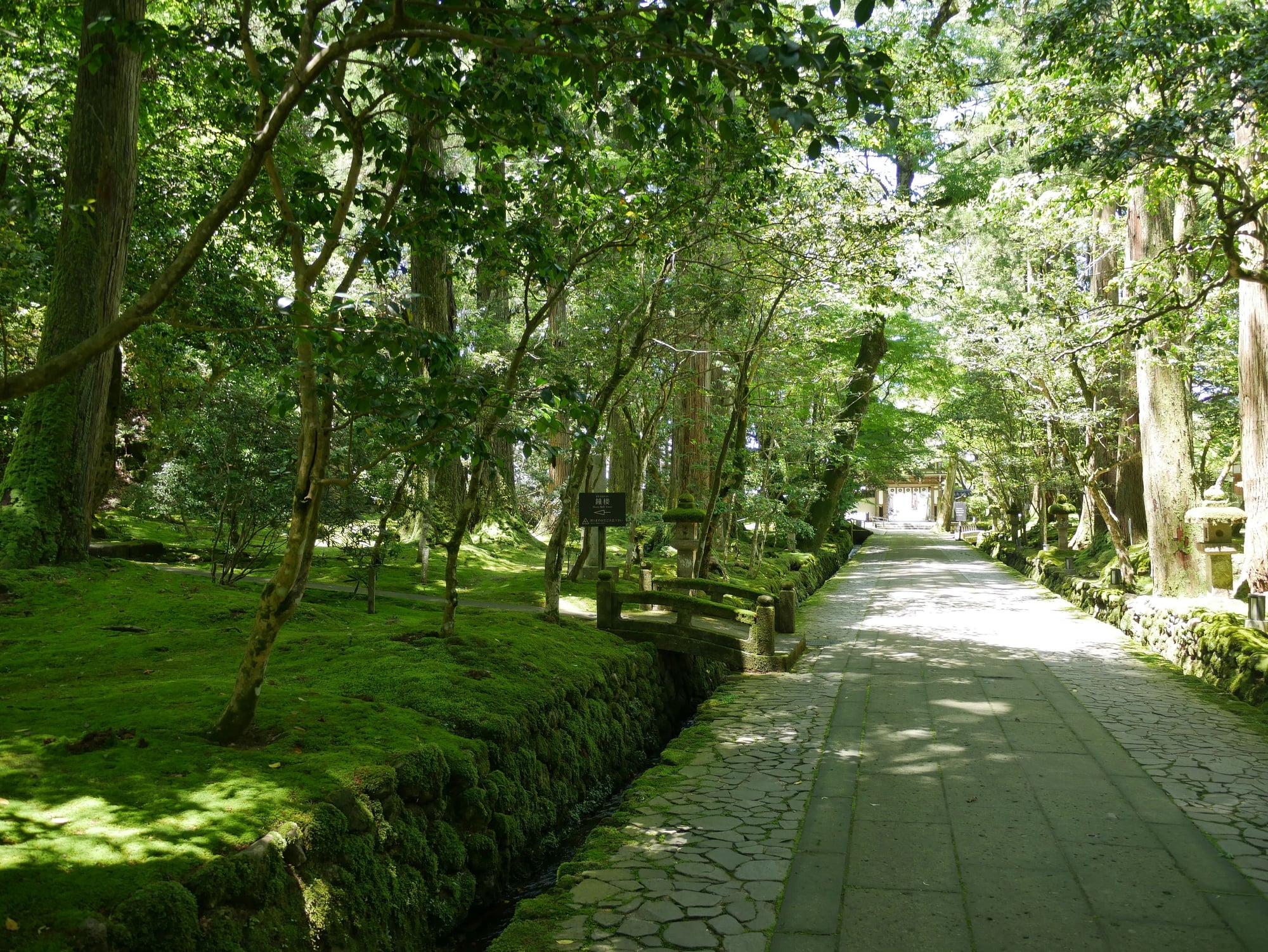
But Natadera impressed me. With its moss and rocks and hondo on stilts... It's difficult not to love.
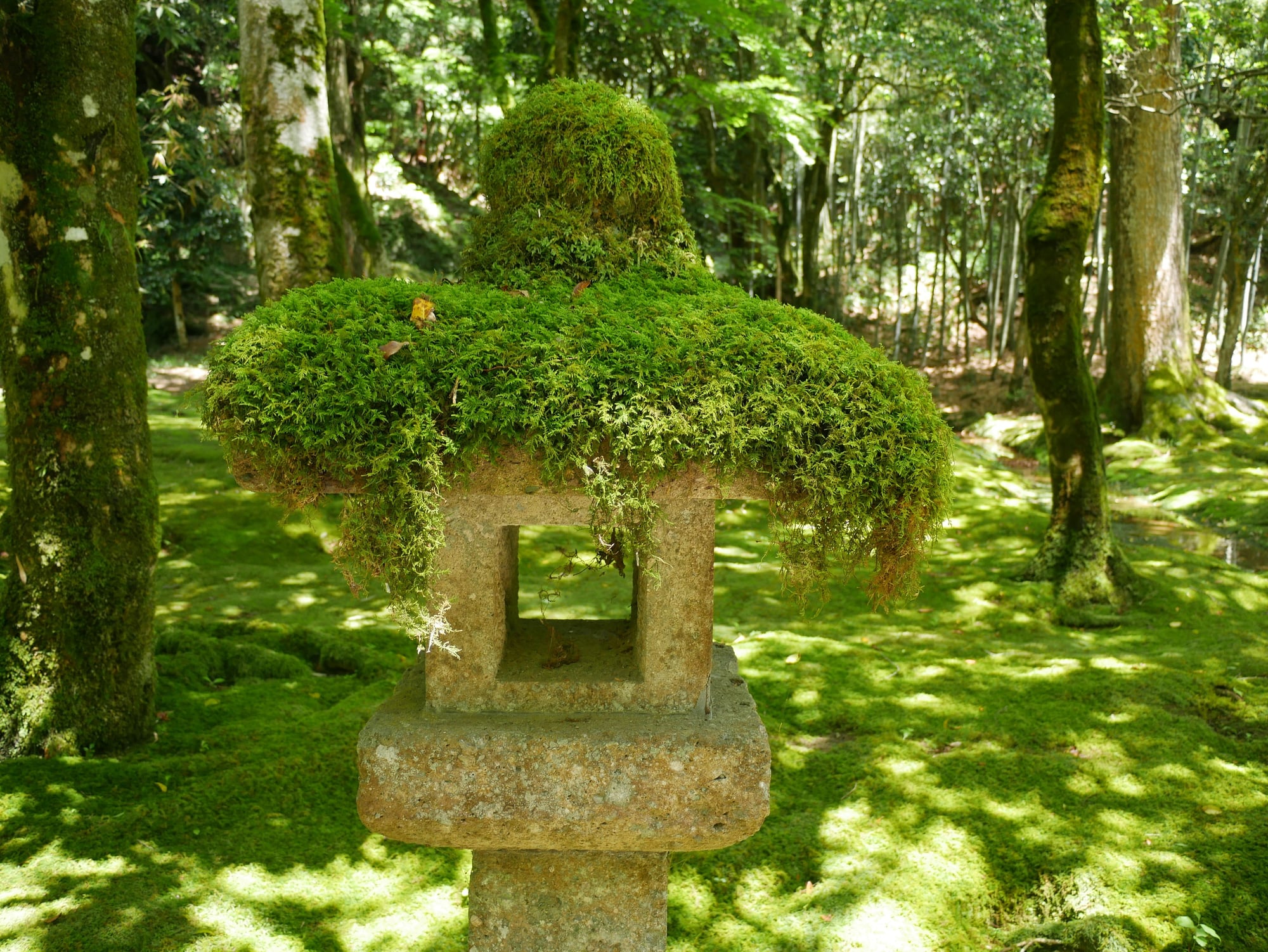
So much moss!
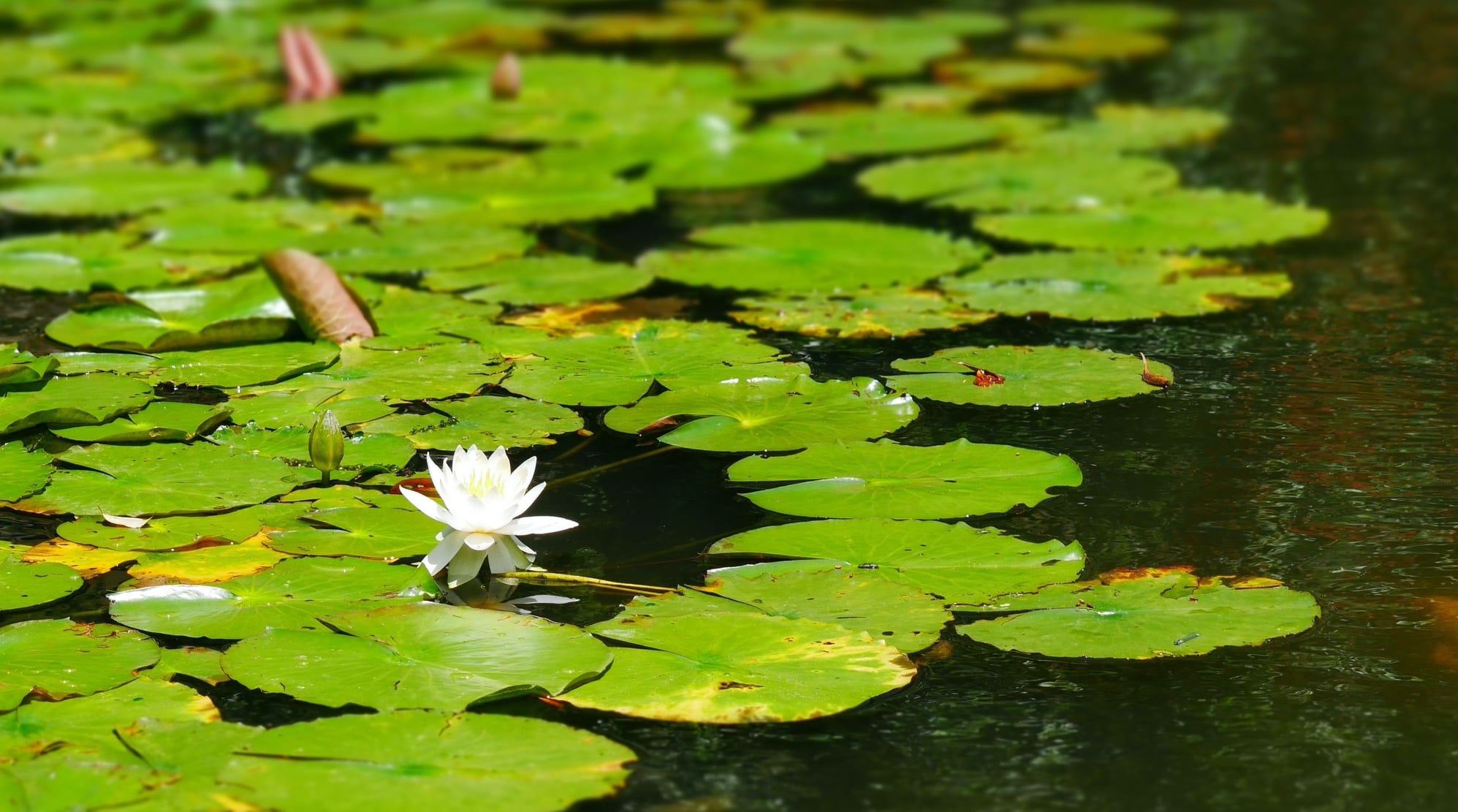
I paid at the entry and, immediately after the entrance, is a long paved path through the moss gardens, leading to the main building of the temple. I decided to go straight to the end at the circle my way back through the smaller shrines and sites. That ended up being a good plan, otherwise I would've missed the best part due to my shortage of time.
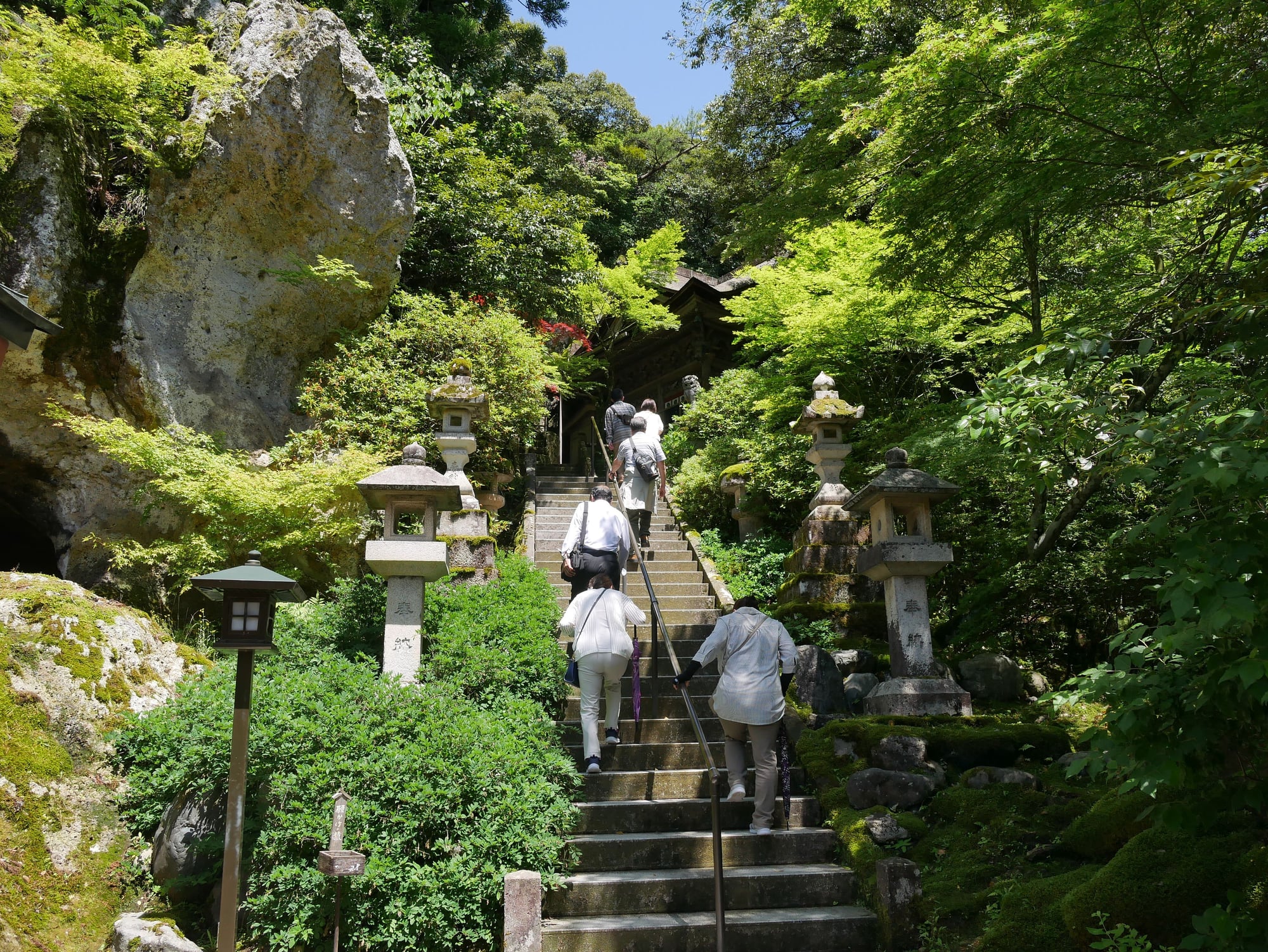
They look like pilgrims, all dressed in white.
The path first lead me to a large koi pond with white lotus. From here, there is a view of some giant rocks filled with holes and caves with statues, where there are little steps criss-crossing from one cave to another. It's not possible to go up these steps, probably safety reasons, but seeing them only from the distance conserves a sense of mystery and storytelling to them.

Komorebi -- a Japanese word that means "sun filtering through the leaves". This is komorebi. Summer is the season of sun and greenery!
After the pond, where I stopped to have my bento lunch, I was lead through another gate and up steps to the main hall. There were senjafuda stuck everywhere on the gate. One thinks a gate should be a simple structure, but this was woodworking at its finest.
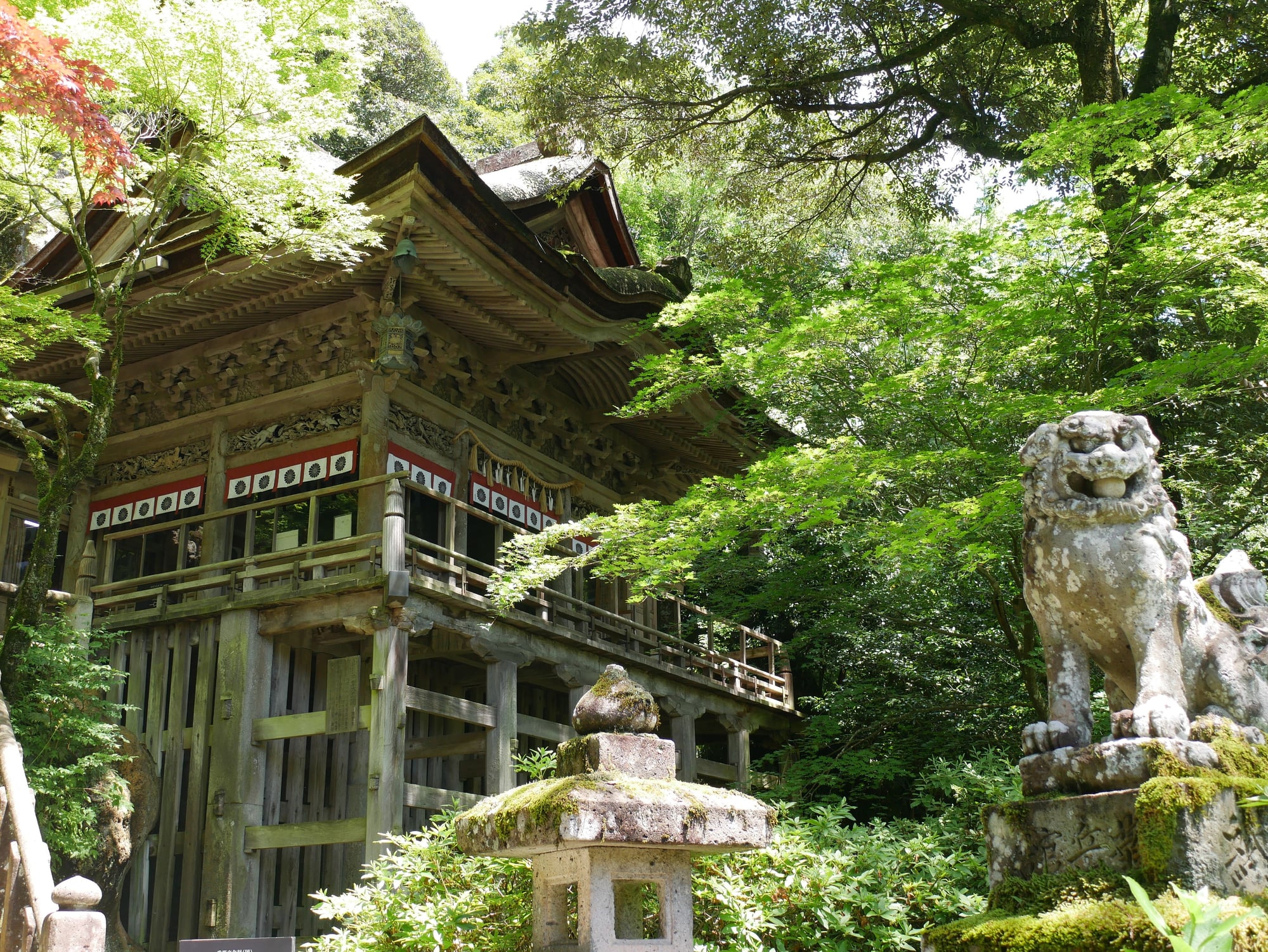
Lanterns everywhere, komainu (these lion-dog) statues. I know I said komainu were found at Shinto shrines while nio statues were at Buddhist temples. But Shinto and Buddhism were fairly mixed together in the past, Shinto Gods were interpreted as manifestations of Buddhas, and the two religions were only separated during the Meiji Restoration, in the late 1800s.
This Shinto-based nationalism (Buddhism was a foreign import), its Emperor cult and anti-Buddhist movement in Japan is known as shinbutsu bunri. It meant the closure of thousands of temples and the destruction of many Buddhist artefacts, as well as the prohibition of the sects/religion of Shugendo (incidentally, this also means the end of self-mummification for Shugendo monks, but that's a separate topic). The remnants are seen clearly at some temples, like the temple at Mt.Nokogiri (possible as a day trip from Tokyo) where there are many decapitated Buddhist statues around the mountain.
So it's not strange to see komainu at temples, or subshrines within temples. I think Natadera survived the transition quite well. If it weren't called Natadera (-dera means temple, as in, Buddhist), I might've thought it was a shrine!

I stood around the main hall for quite a while. It was so beautiful that I couldn't stop looking at it...
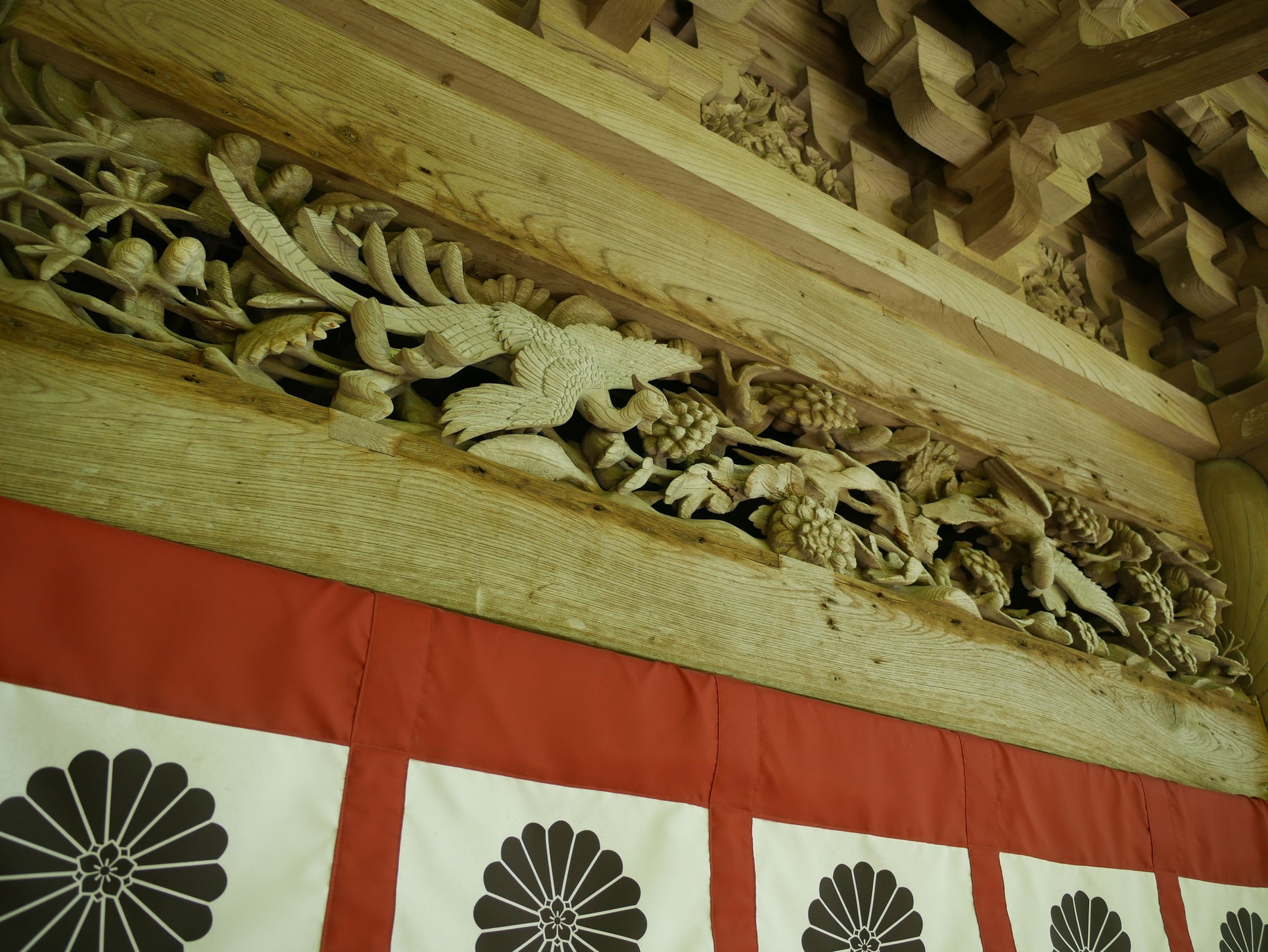
Photography was prohibited inside the hall-- I won't say anything about it. Whoever visits can discover it for themselves!
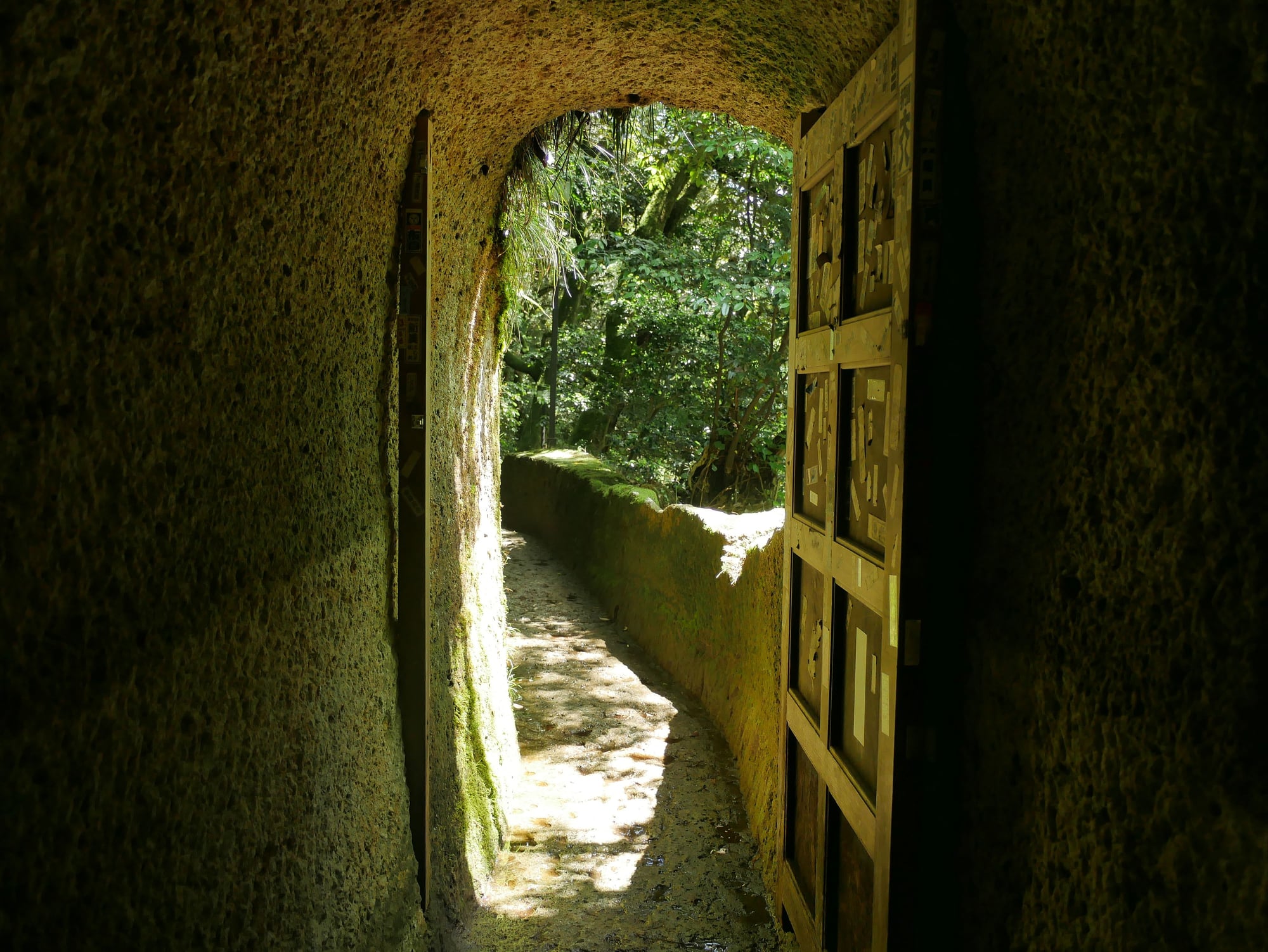
Coming out of the main hall. I've been through a door and path just like this at Montserrat... dejŗ vu or magical portal?
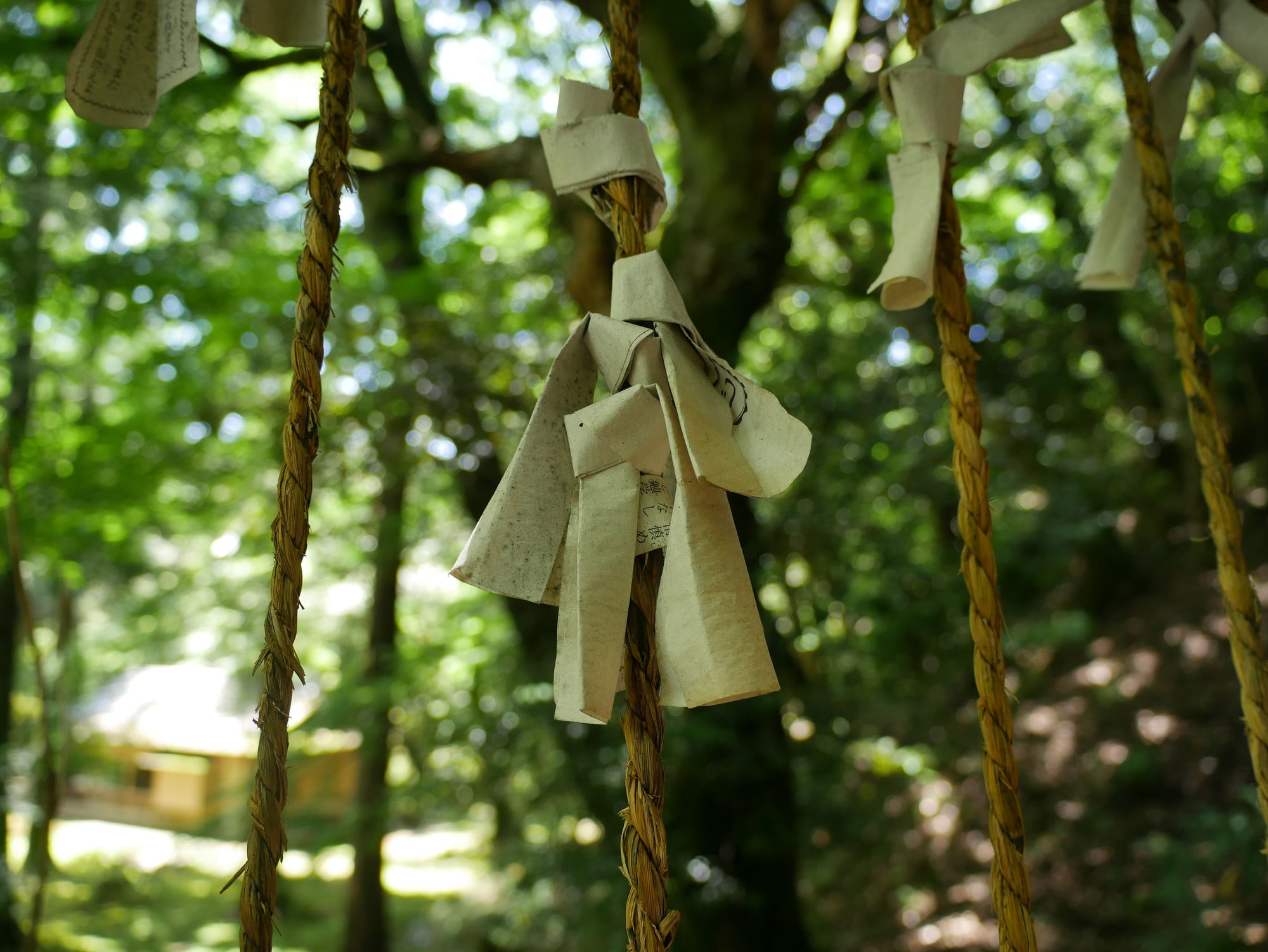
When one buys their fortune telling, they typically tie it up at the shrine/temple, especially if it's bad luck. That way they leave the bad luck behind and don't carry it with them.
After the main hall, the path leads around the back of the temple grounds, next to a large pond, and then down the other side. Along the way I came across a pagoda. It's rare to see fully wooden pagodas, and I had no clue there was one so breathtaking at Natadera. The one at Haguro-san is more famous and, though that one is taller, I think this one can offer a fair bit of competition in terms of magnificence!

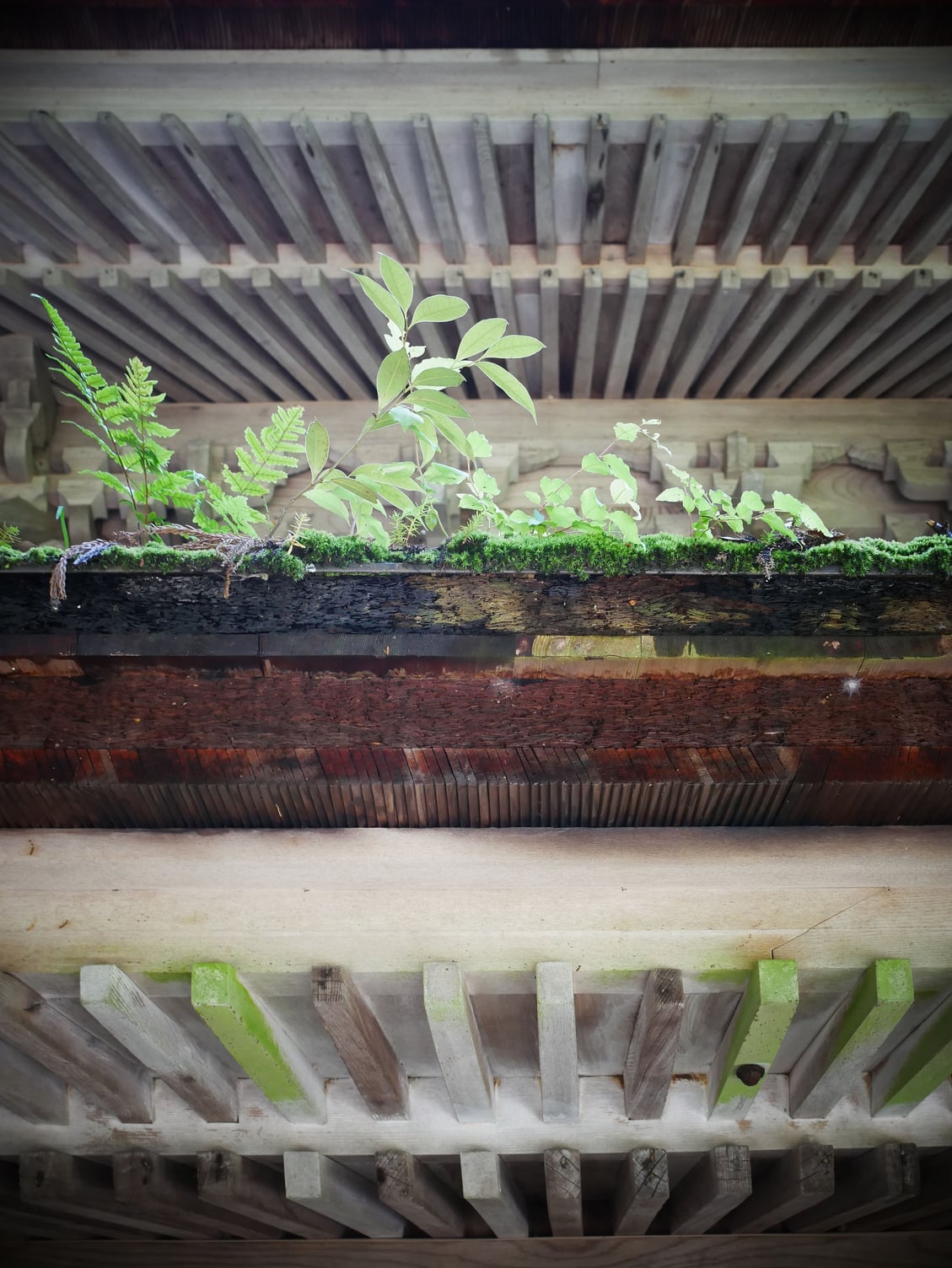
Close-up of the pagoda. A layer is not a single layer! Whoever said brown was boring?
And from this area there is a red-painted deck offering views of the rocks I'd crossed earlier, from higher up. This is where all the best photos are taken, and you can see a lot of paths and secrets that were hidden from below.

Here in Spain we have the Ermita Mare de Dťu de la roca, at Montroig. Montroig is a mountain full of holes, much like Natadera, and there's a church built on top of a hollow rock, which you probably don't want to look at before visiting the church if you want to avoid the fear of the whole thing collapsing. But it's curious how, even at far-reaching corners of the world, people have found sacredness in similar aspects of nature, and built their shrines and temples there.
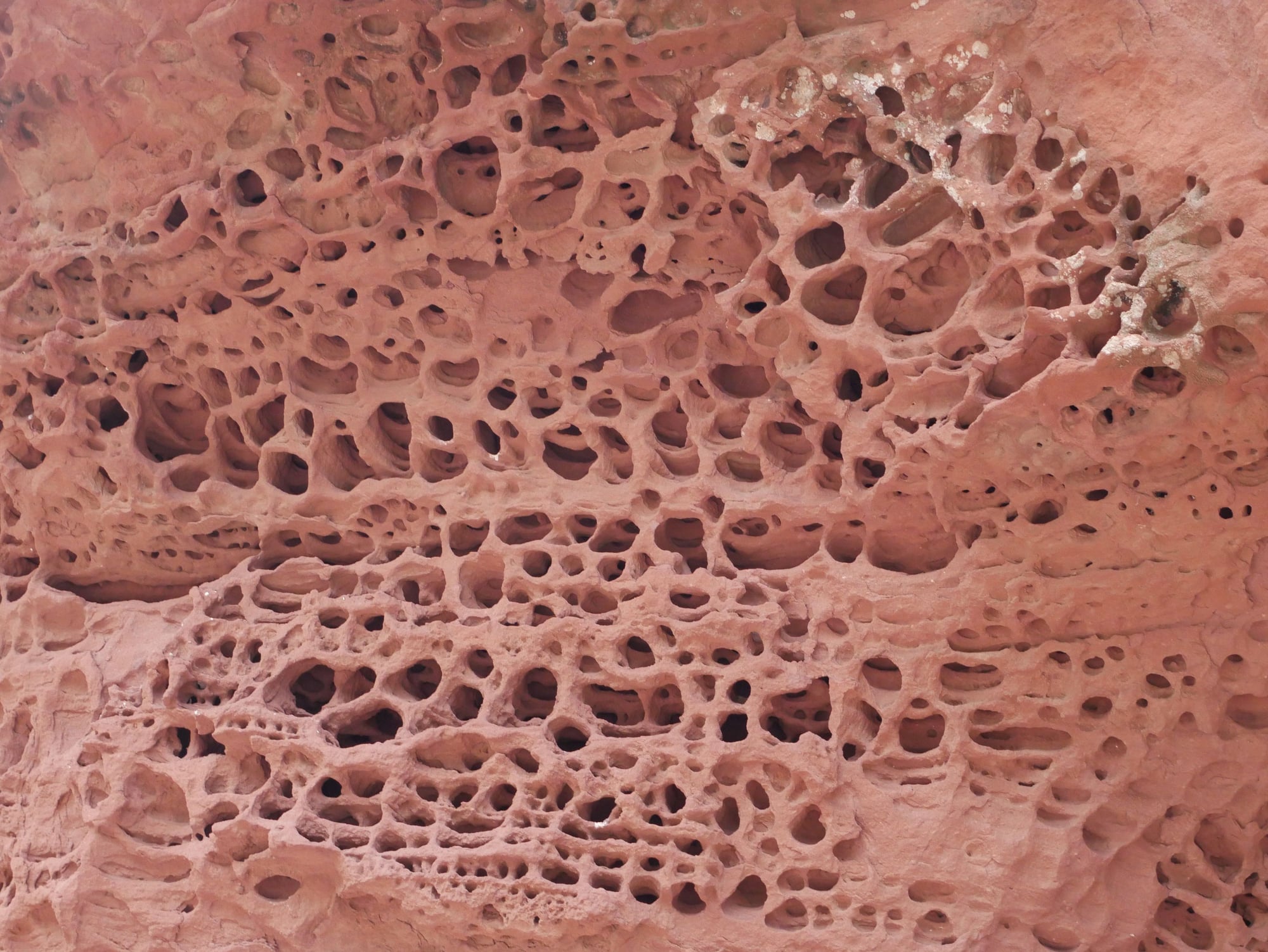
Montroig means "red mountain" in Catalan. Fitting?
There's nothing much red at Natadera though. It's green galore:
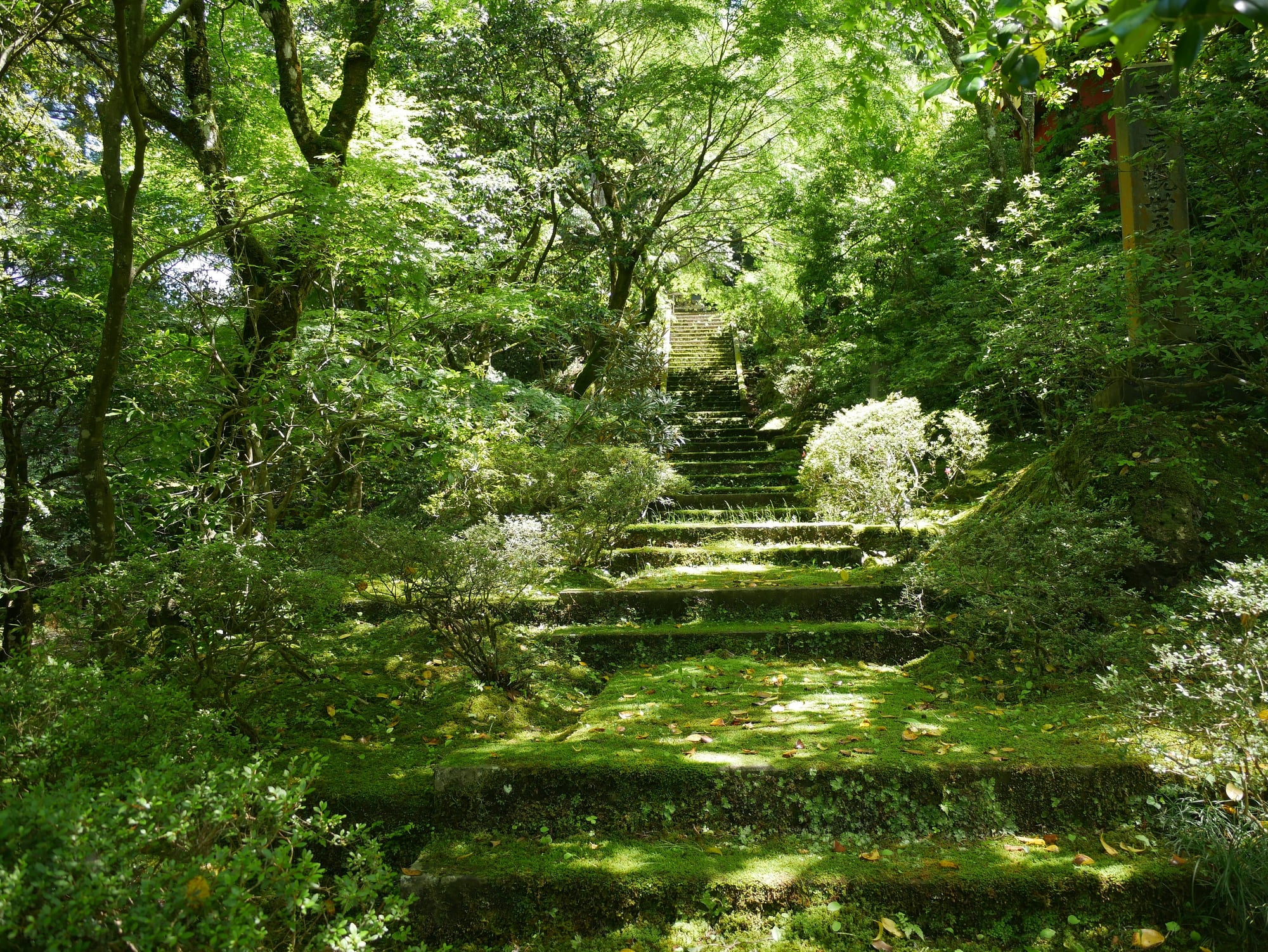
That covers the main sites of the temple, but there are additional structures if there's more time. I tried to cover all the paths, and came across a couple secret shrines. They were deserted, most people preferring to stick to the main path, but they were definitely worth a visit.

Love the reflections.
In one of the shrines I could see a mirror. Most shrines have circular mirrors, they're used as a symbol of the Kami (Gods), but they're often not on display, or they're inside the inner shrine where casual visitors aren't allowed, so I'm always happy when I get to see one.
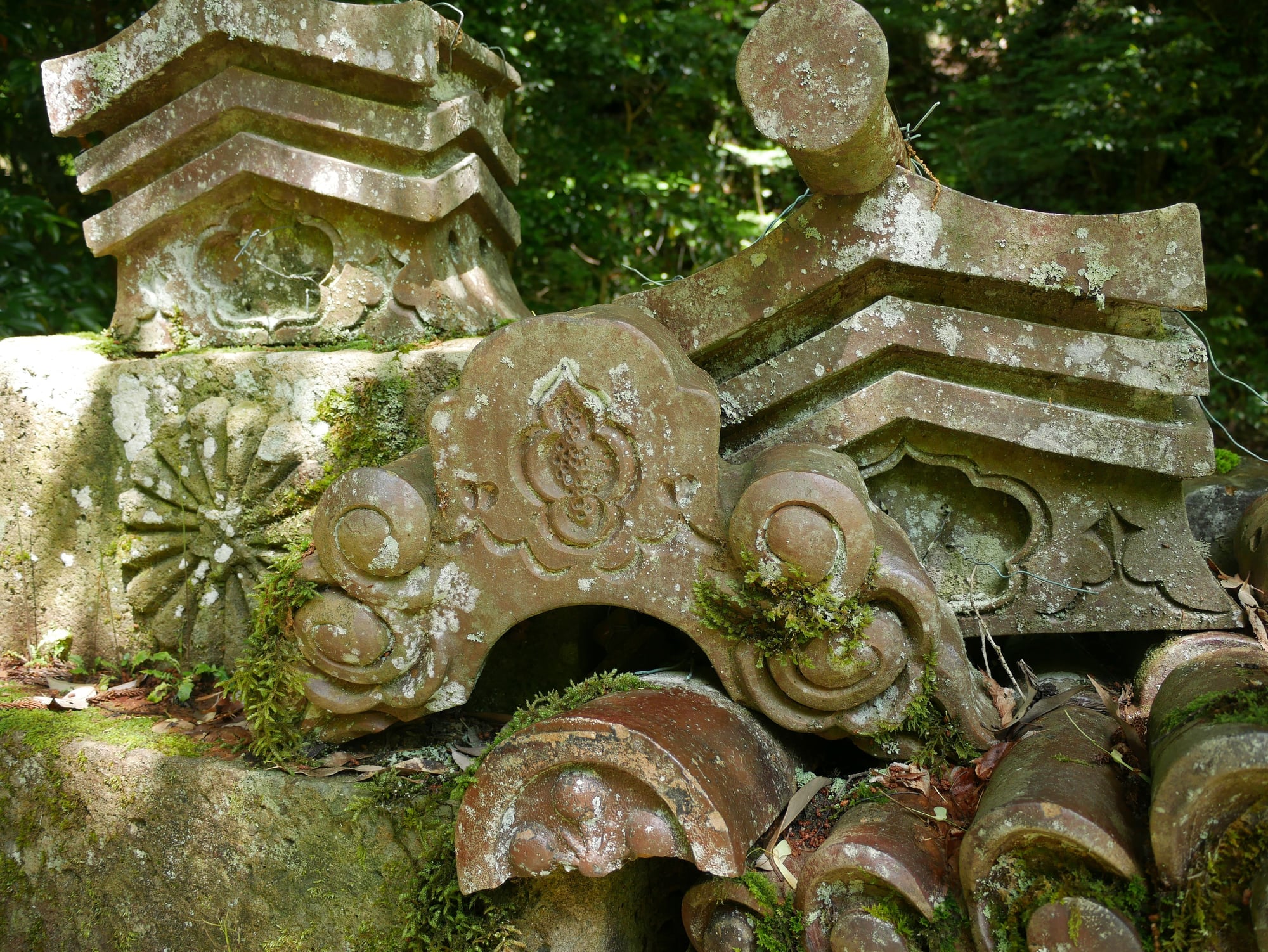
And a pile of abandoned roof tiles. If nobody wants them, maybe I could keep one?


This post's critter edition features this colourful minibeast!
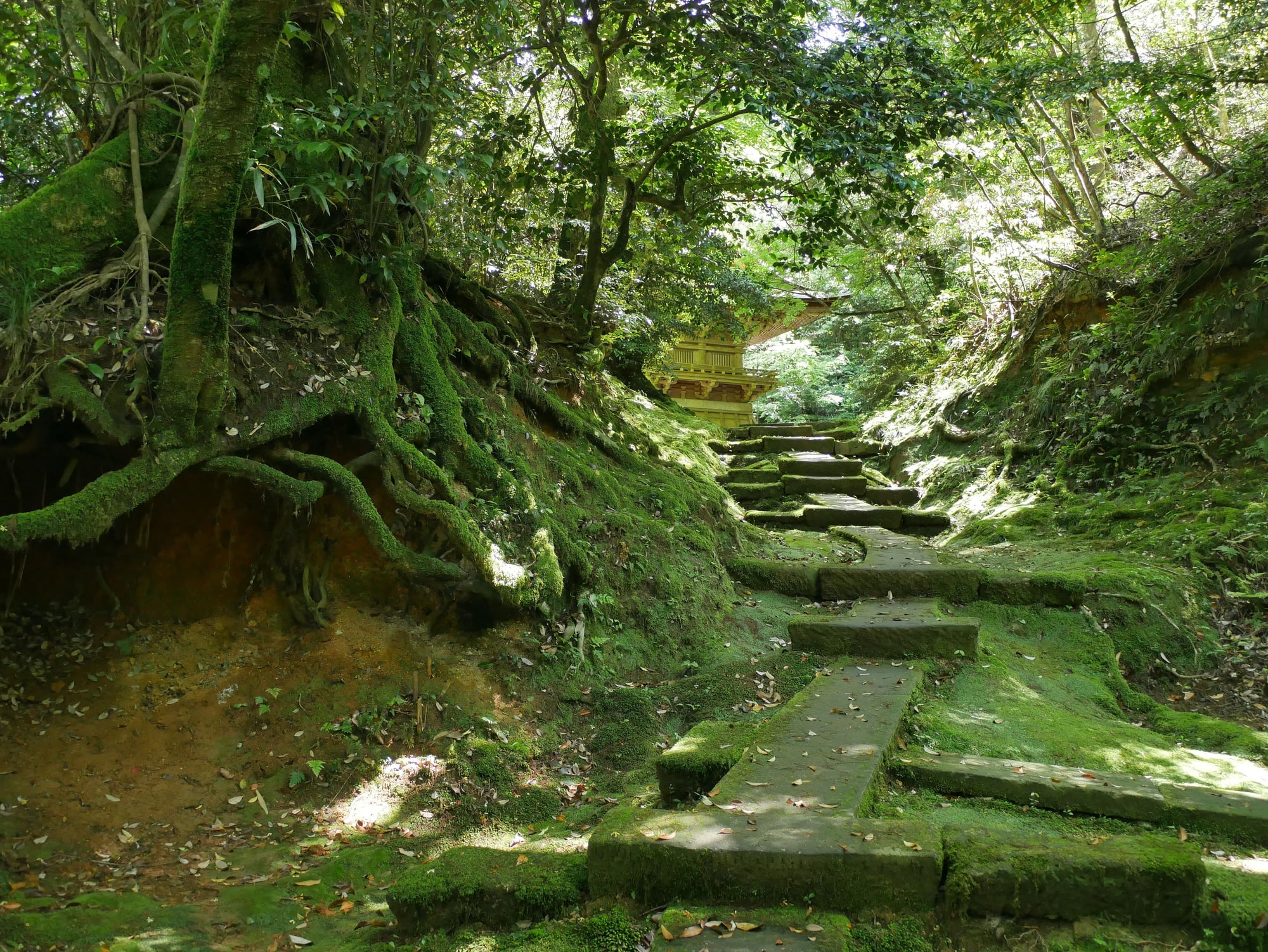
I was at the last temple structure, a bigger red modern building near the entrance, when the clock on my phone struck 13:40, and with a stumbling display of panic I ran to the bus stop. The bus was arriving just as I got there, so I didn't miss that one either, though no snacks for me.
We were on a journey back to Kaga station through the idyllic-looking Japanese countryside, the scenery looking right out of a movie.

Once again at the station, the tourist information centre was open, so I asked for a map of Kanazawa and details of the festival route. I was on the next train into the city, readying myself for, as it turned out, one of Kanazawa's biggest festivals!

I have been to many temples and shrines in Japan over the course of my travels. Iíve been to temple cities like Kyoto and Kamakura and Hiraizumi.
Iíve been to shrines on cliff-sides and hidden in caves. Iíve seen shrines bombed and temples rebuilt, Iíve seen shrine dotted with expensive bizen-yaki pottery or dedicated to porcelain. Iíve been through so many rows of inari gates, bought too many ema boards, woken up at 6am to join in the morning chanting. Iíve seen the reds and golds of Nikko's mausoleums and pheonix paintings of Yūtoku Inari, pushed my way through the bush to reach Okinawan utaki. Iíve talked to monks and miko and collect shuin stamps. I pray to Kannon whenever I see her, and recognise some of the statues better than some of my Japanese friends. Iíve climbed mountains and hiked pilgrimages, always one more shichifukujin meguri...
This list might make me sound a bit presumptuous. The point is: lots of temples. Temples and shrines are my favourite. Whenever I plan a visit, my first question is, ďwhich shrines will I be seeing?Ē; they're the cornerstone of my travels. So, with it all, itís hard to impress me. Iíve seen it all.

But Natadera impressed me. With its moss and rocks and hondo on stilts... It's difficult not to love.

So much moss!

I paid at the entry and, immediately after the entrance, is a long paved path through the moss gardens, leading to the main building of the temple. I decided to go straight to the end at the circle my way back through the smaller shrines and sites. That ended up being a good plan, otherwise I would've missed the best part due to my shortage of time.

They look like pilgrims, all dressed in white.
The path first lead me to a large koi pond with white lotus. From here, there is a view of some giant rocks filled with holes and caves with statues, where there are little steps criss-crossing from one cave to another. It's not possible to go up these steps, probably safety reasons, but seeing them only from the distance conserves a sense of mystery and storytelling to them.

Komorebi -- a Japanese word that means "sun filtering through the leaves". This is komorebi. Summer is the season of sun and greenery!
After the pond, where I stopped to have my bento lunch, I was lead through another gate and up steps to the main hall. There were senjafuda stuck everywhere on the gate. One thinks a gate should be a simple structure, but this was woodworking at its finest.

Lanterns everywhere, komainu (these lion-dog) statues. I know I said komainu were found at Shinto shrines while nio statues were at Buddhist temples. But Shinto and Buddhism were fairly mixed together in the past, Shinto Gods were interpreted as manifestations of Buddhas, and the two religions were only separated during the Meiji Restoration, in the late 1800s.
This Shinto-based nationalism (Buddhism was a foreign import), its Emperor cult and anti-Buddhist movement in Japan is known as shinbutsu bunri. It meant the closure of thousands of temples and the destruction of many Buddhist artefacts, as well as the prohibition of the sects/religion of Shugendo (incidentally, this also means the end of self-mummification for Shugendo monks, but that's a separate topic). The remnants are seen clearly at some temples, like the temple at Mt.Nokogiri (possible as a day trip from Tokyo) where there are many decapitated Buddhist statues around the mountain.
So it's not strange to see komainu at temples, or subshrines within temples. I think Natadera survived the transition quite well. If it weren't called Natadera (-dera means temple, as in, Buddhist), I might've thought it was a shrine!

I stood around the main hall for quite a while. It was so beautiful that I couldn't stop looking at it...

Photography was prohibited inside the hall-- I won't say anything about it. Whoever visits can discover it for themselves!

Coming out of the main hall. I've been through a door and path just like this at Montserrat... dejŗ vu or magical portal?

When one buys their fortune telling, they typically tie it up at the shrine/temple, especially if it's bad luck. That way they leave the bad luck behind and don't carry it with them.
After the main hall, the path leads around the back of the temple grounds, next to a large pond, and then down the other side. Along the way I came across a pagoda. It's rare to see fully wooden pagodas, and I had no clue there was one so breathtaking at Natadera. The one at Haguro-san is more famous and, though that one is taller, I think this one can offer a fair bit of competition in terms of magnificence!


Close-up of the pagoda. A layer is not a single layer! Whoever said brown was boring?
And from this area there is a red-painted deck offering views of the rocks I'd crossed earlier, from higher up. This is where all the best photos are taken, and you can see a lot of paths and secrets that were hidden from below.

Here in Spain we have the Ermita Mare de Dťu de la roca, at Montroig. Montroig is a mountain full of holes, much like Natadera, and there's a church built on top of a hollow rock, which you probably don't want to look at before visiting the church if you want to avoid the fear of the whole thing collapsing. But it's curious how, even at far-reaching corners of the world, people have found sacredness in similar aspects of nature, and built their shrines and temples there.

Montroig means "red mountain" in Catalan. Fitting?
There's nothing much red at Natadera though. It's green galore:

That covers the main sites of the temple, but there are additional structures if there's more time. I tried to cover all the paths, and came across a couple secret shrines. They were deserted, most people preferring to stick to the main path, but they were definitely worth a visit.

Love the reflections.
In one of the shrines I could see a mirror. Most shrines have circular mirrors, they're used as a symbol of the Kami (Gods), but they're often not on display, or they're inside the inner shrine where casual visitors aren't allowed, so I'm always happy when I get to see one.

And a pile of abandoned roof tiles. If nobody wants them, maybe I could keep one?



This post's critter edition features this colourful minibeast!

I was at the last temple structure, a bigger red modern building near the entrance, when the clock on my phone struck 13:40, and with a stumbling display of panic I ran to the bus stop. The bus was arriving just as I got there, so I didn't miss that one either, though no snacks for me.
We were on a journey back to Kaga station through the idyllic-looking Japanese countryside, the scenery looking right out of a movie.

Once again at the station, the tourist information centre was open, so I asked for a map of Kanazawa and details of the festival route. I was on the next train into the city, readying myself for, as it turned out, one of Kanazawa's biggest festivals!



